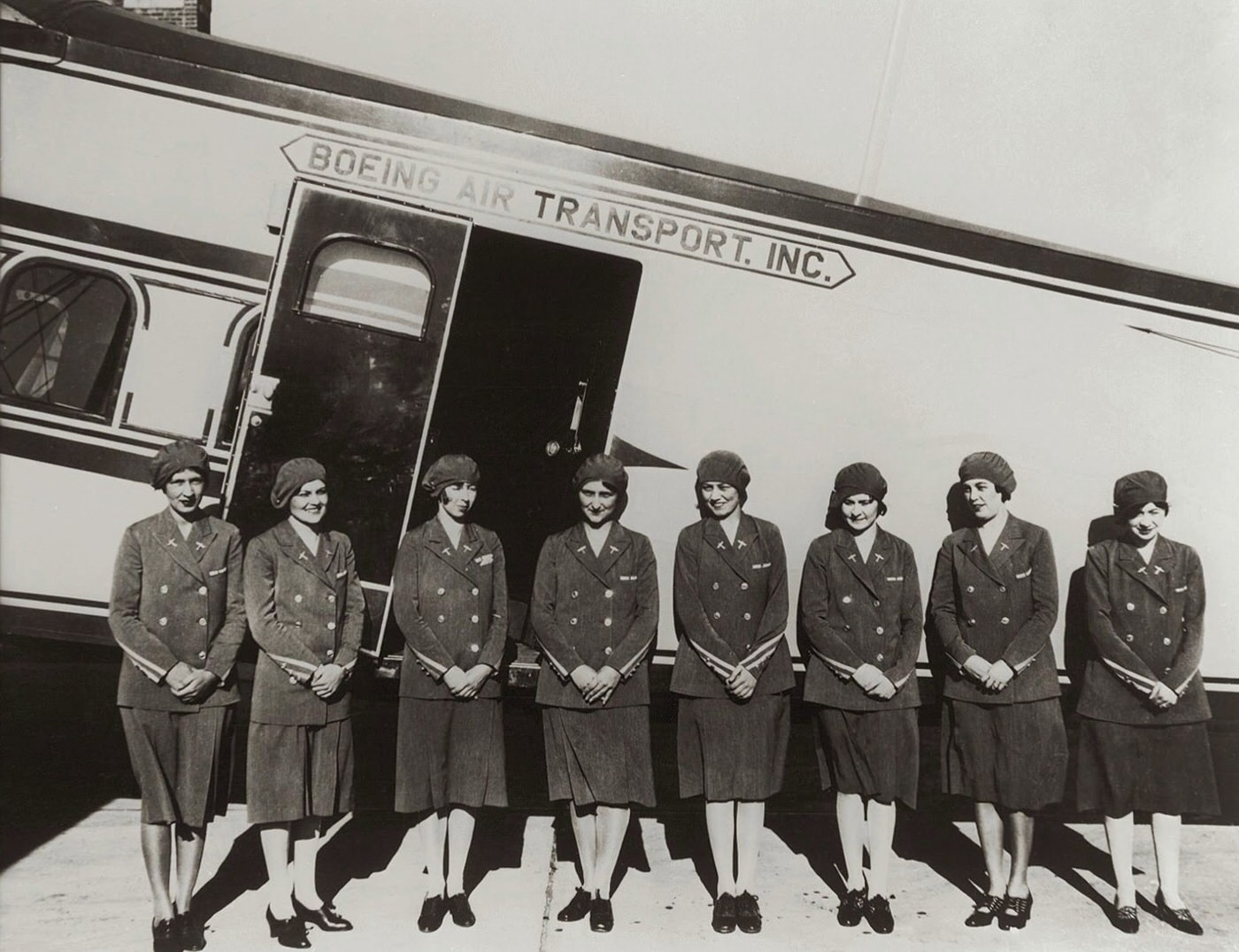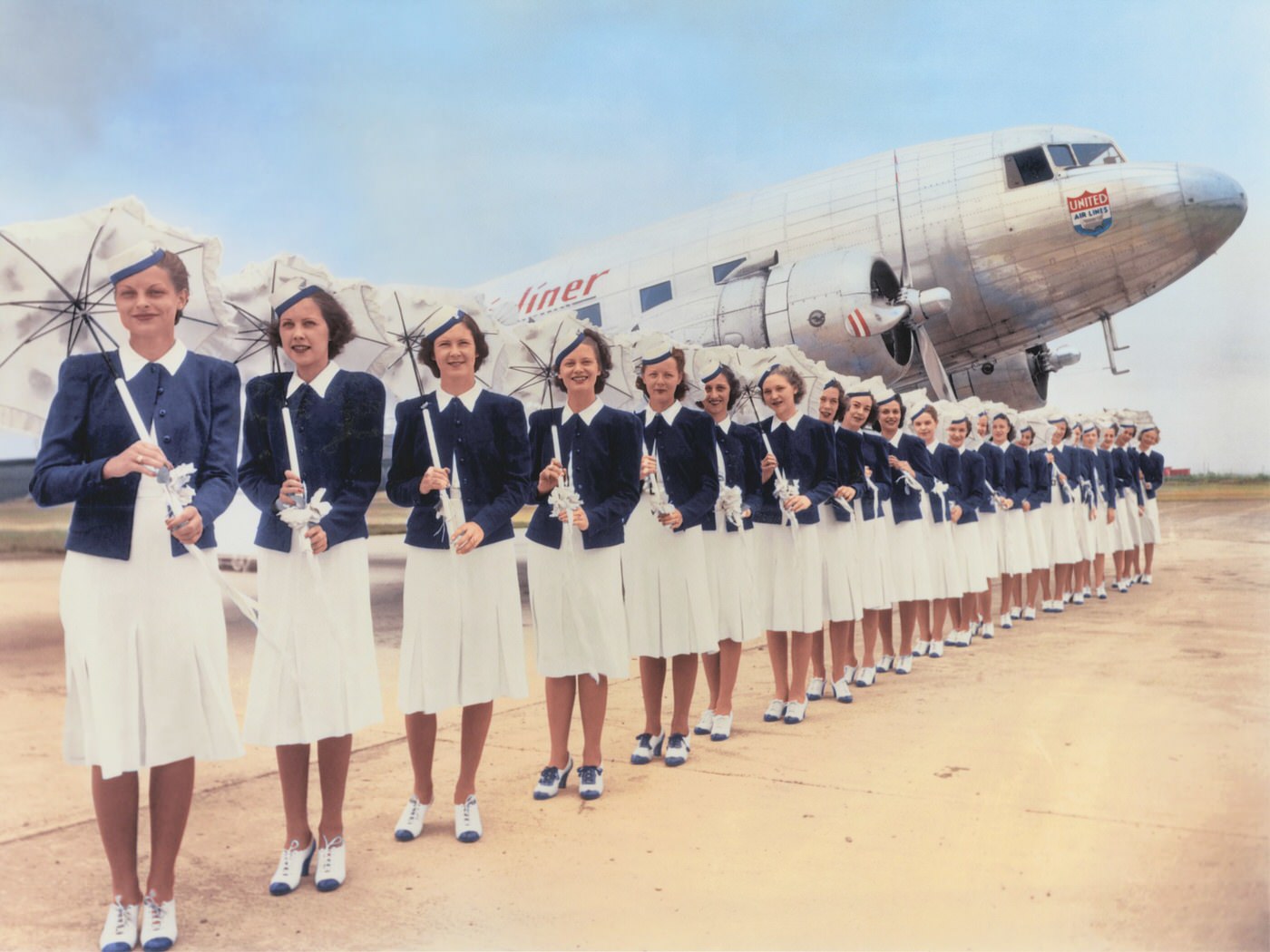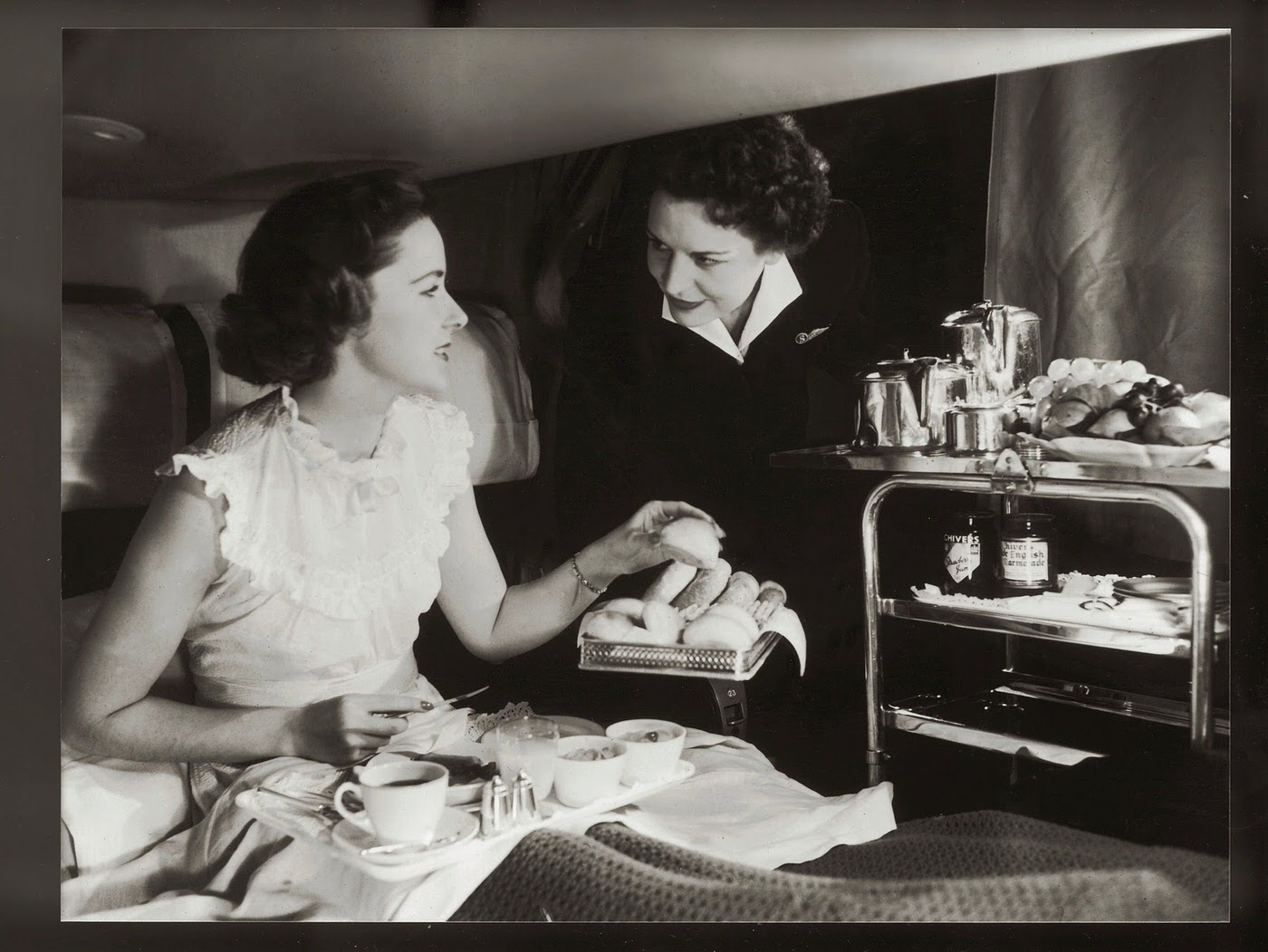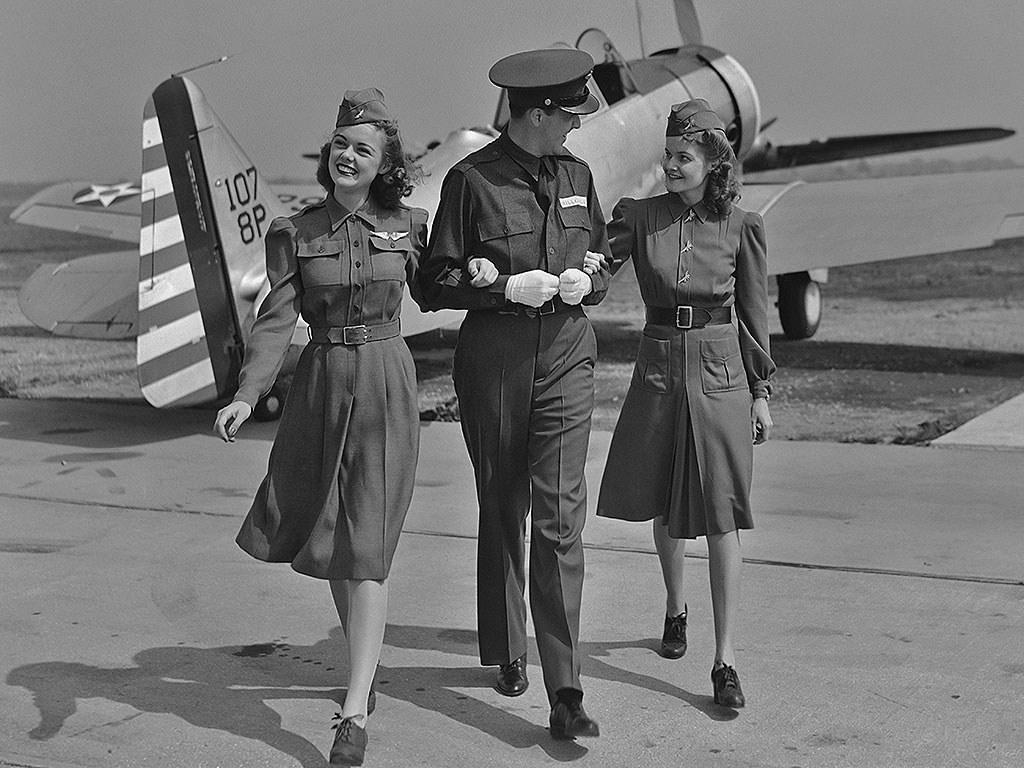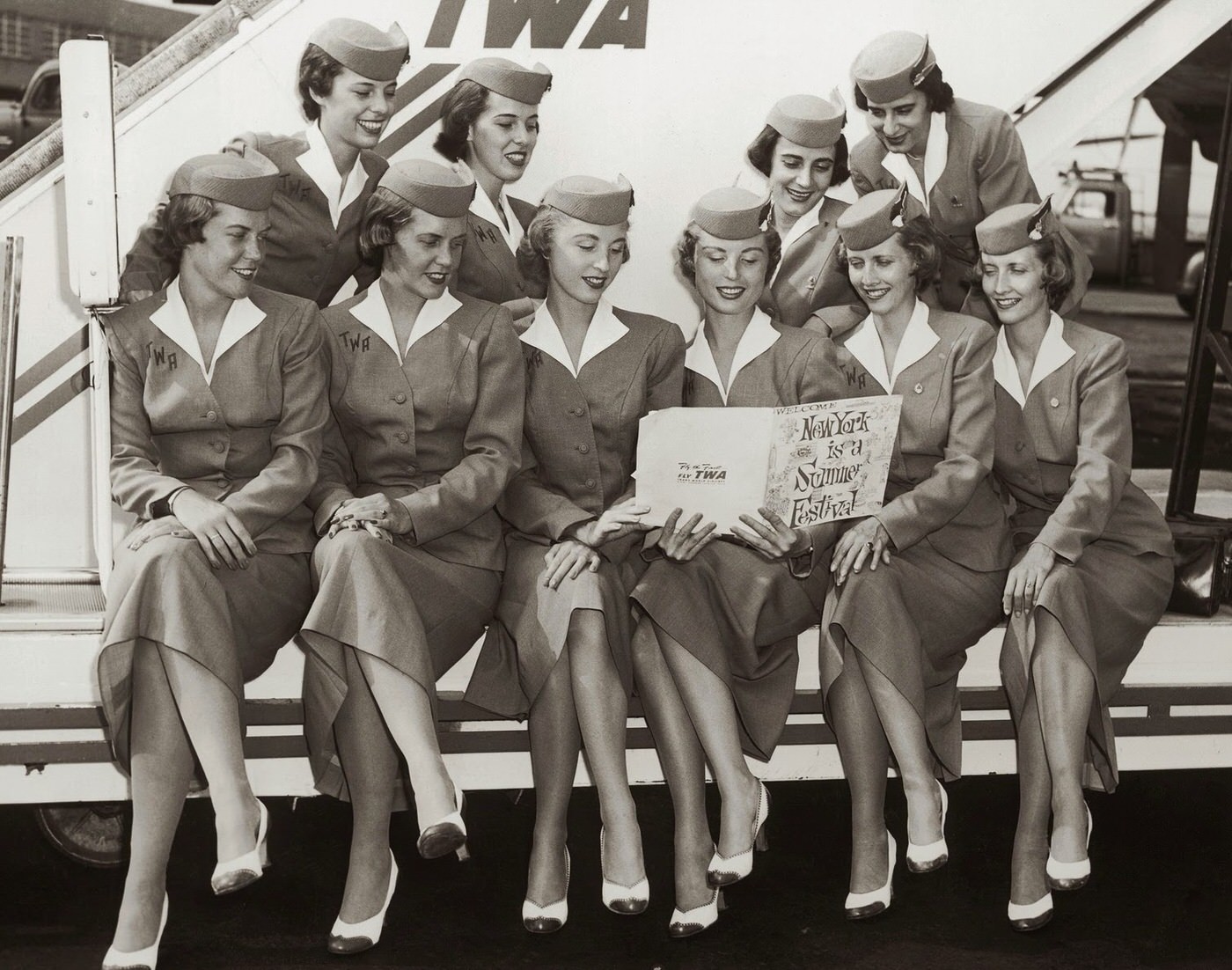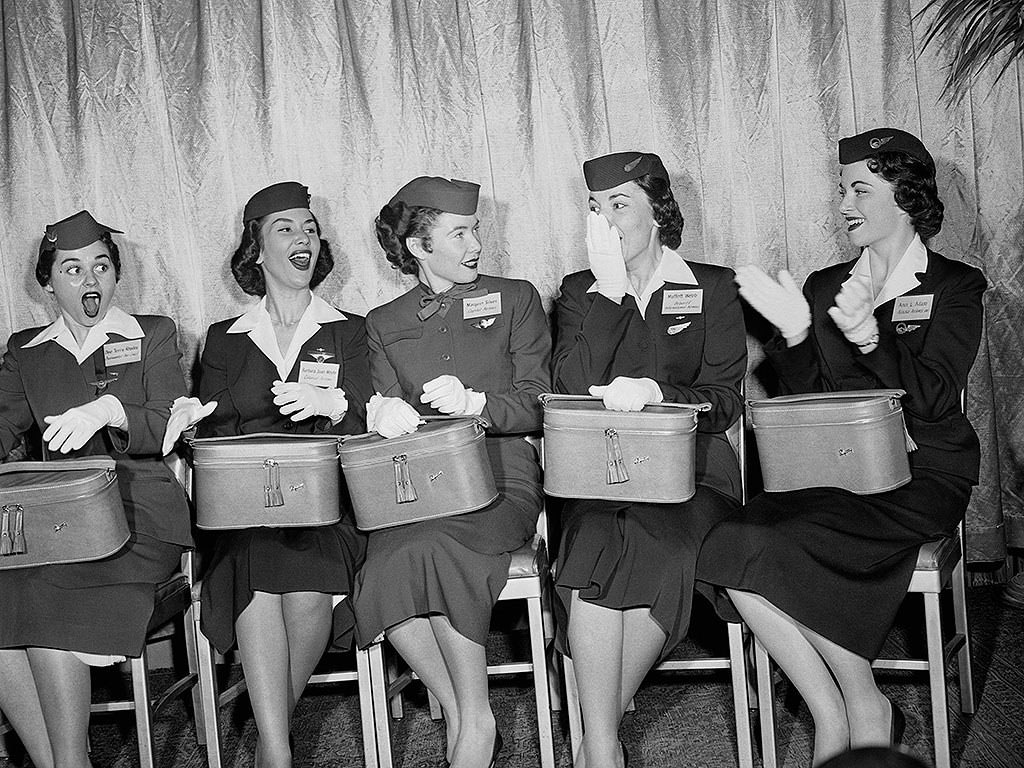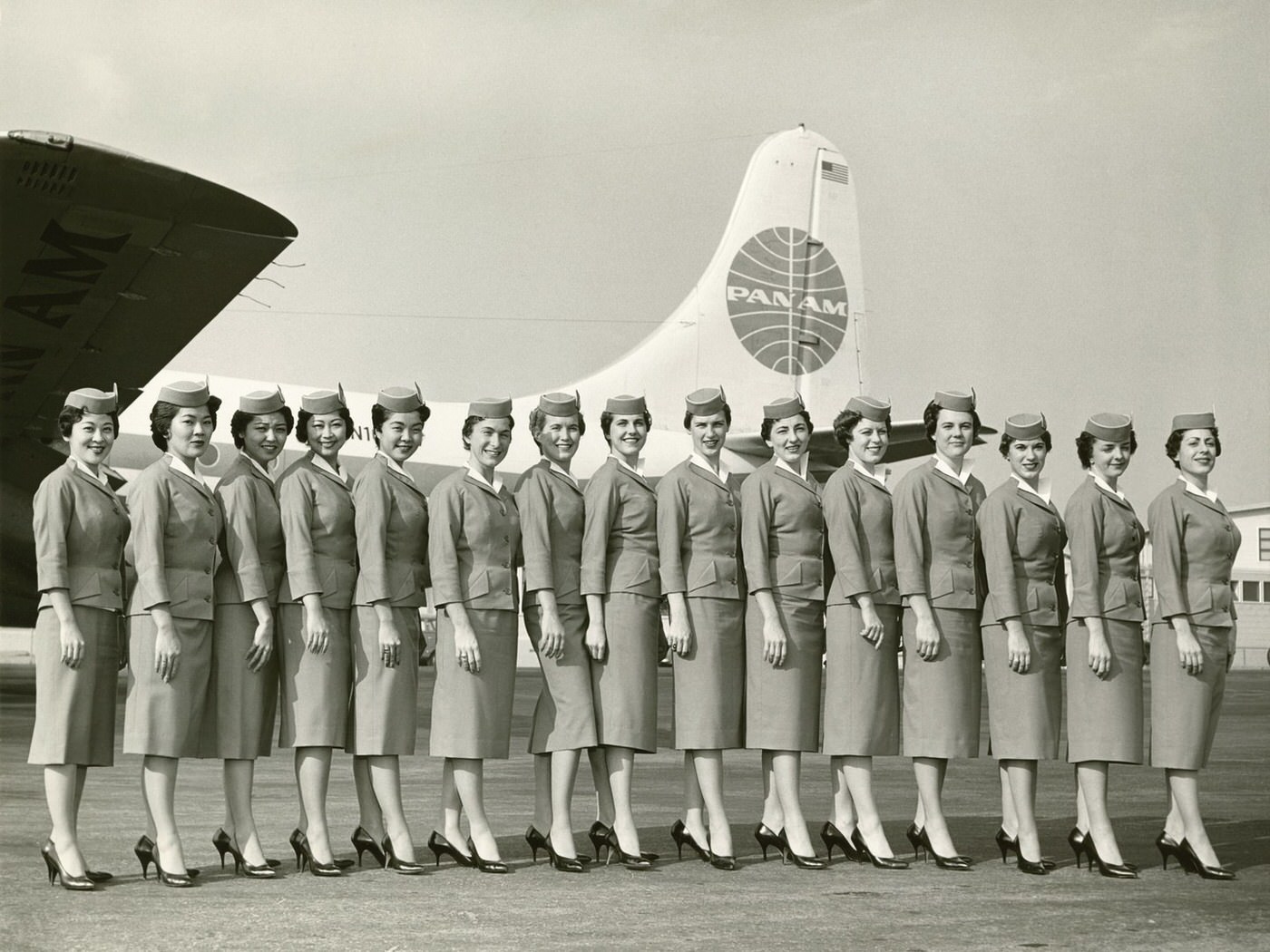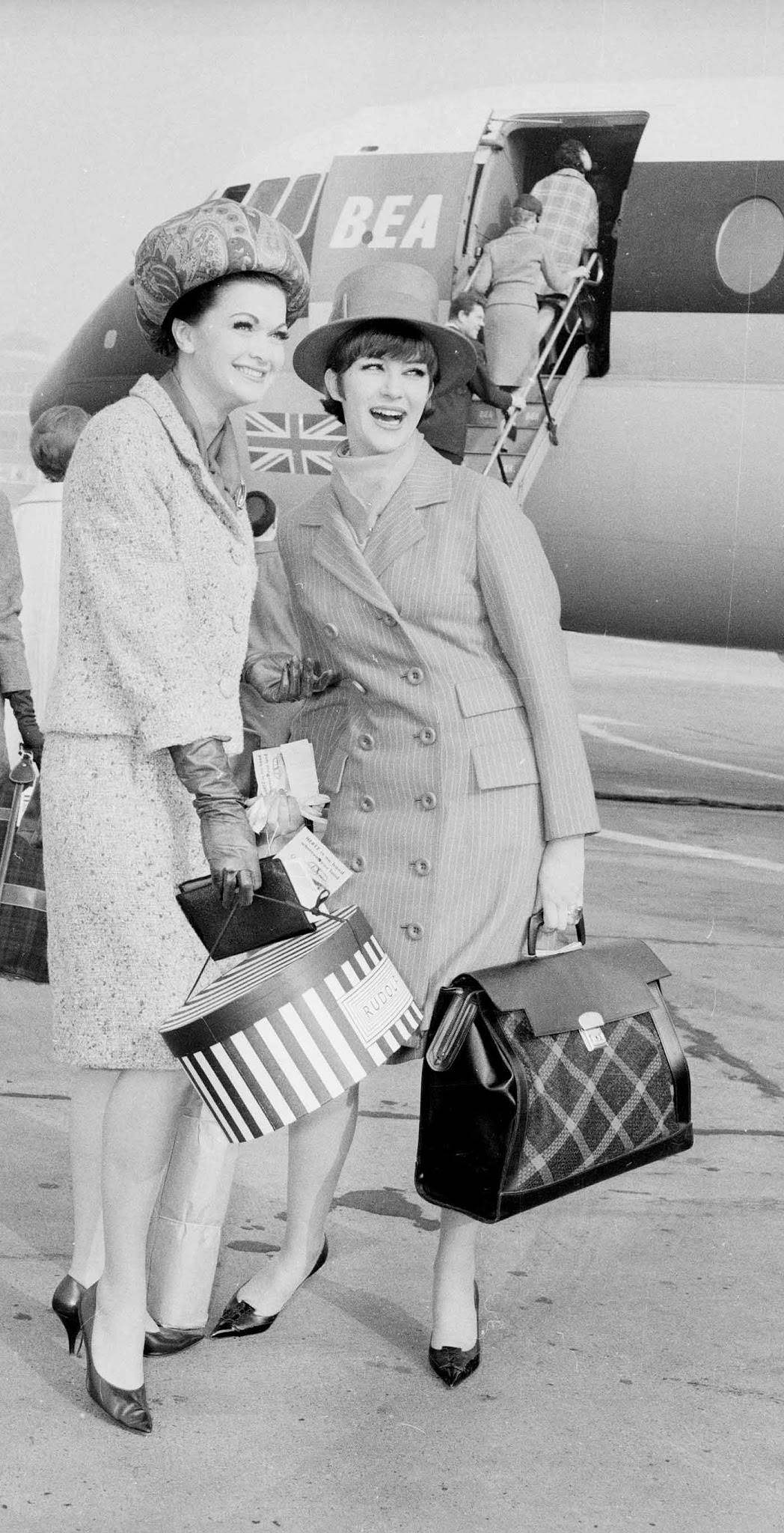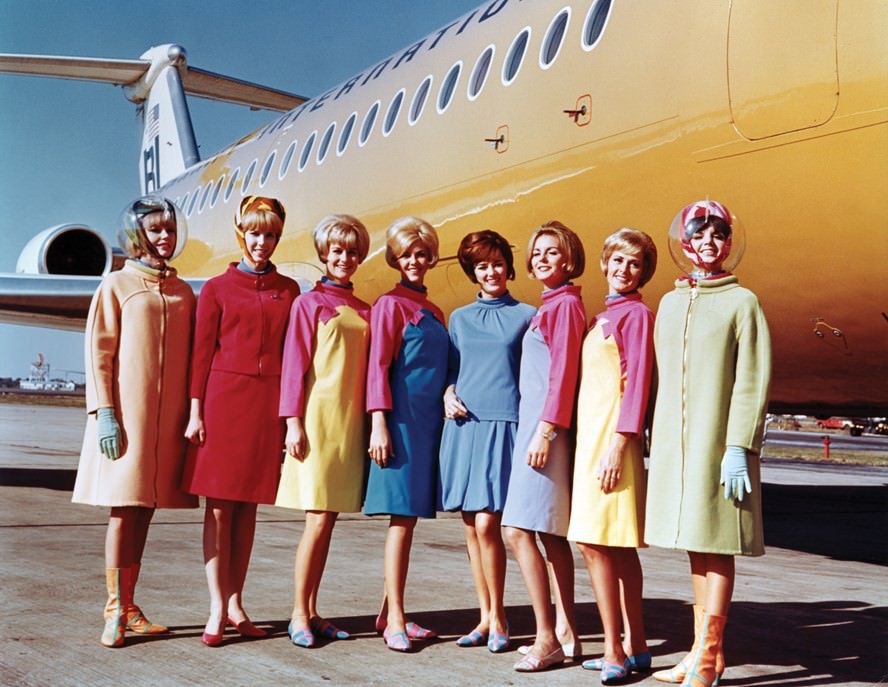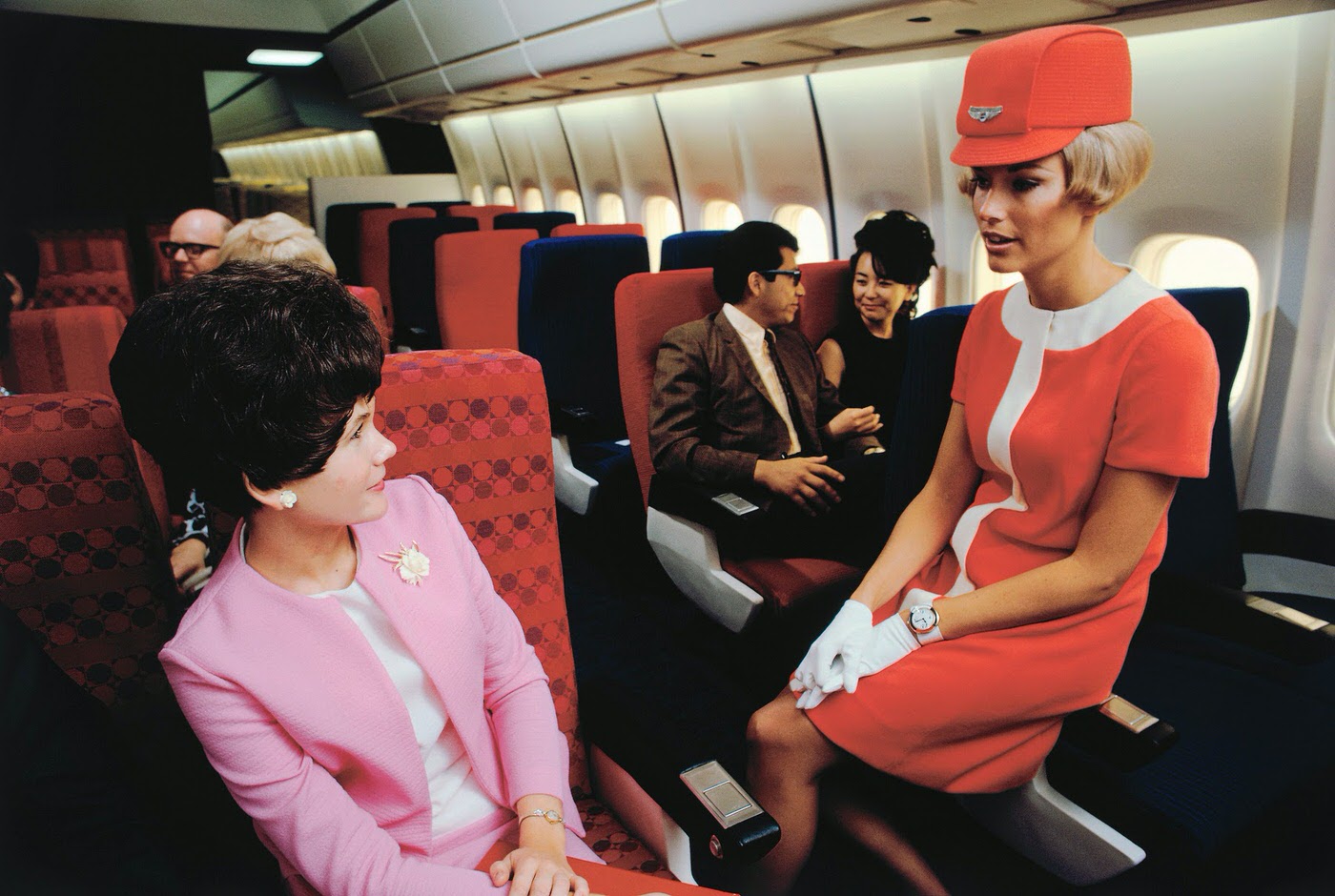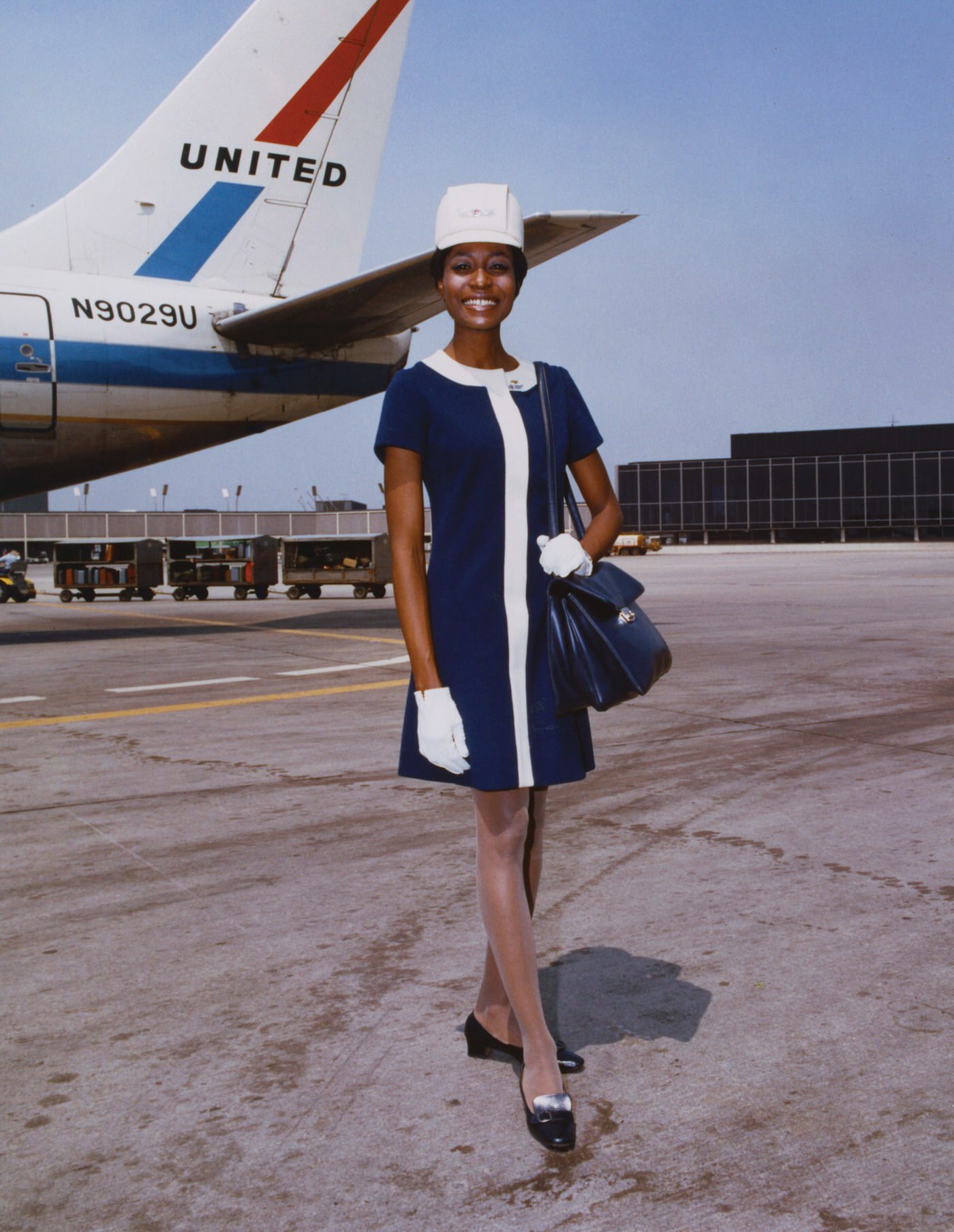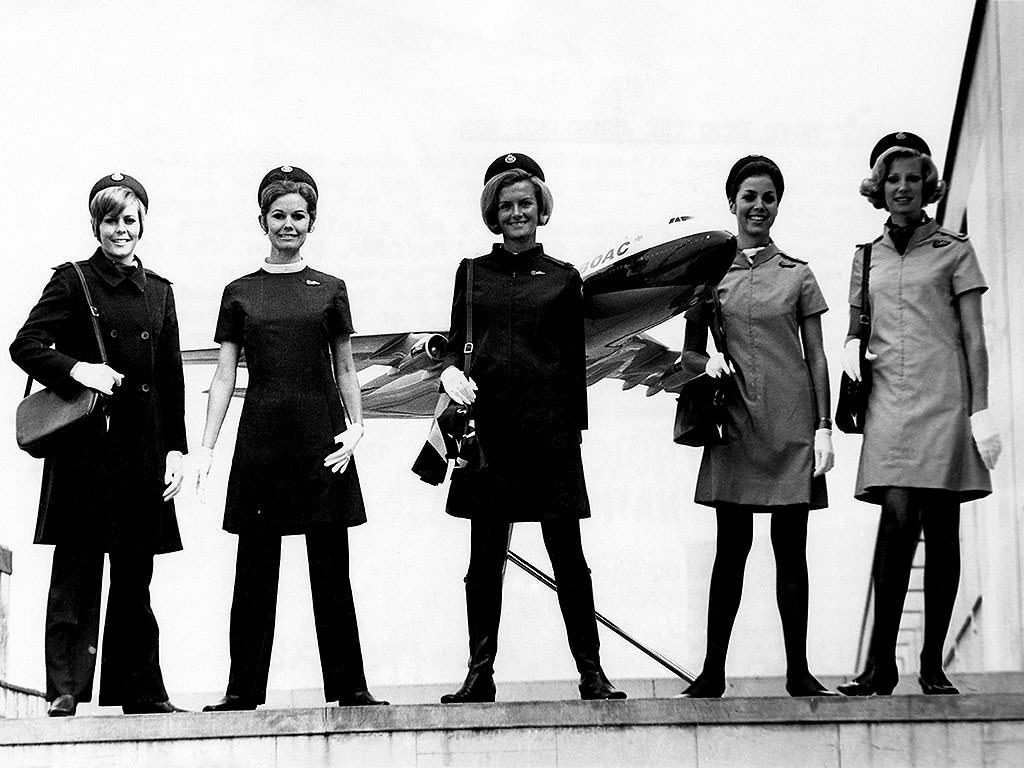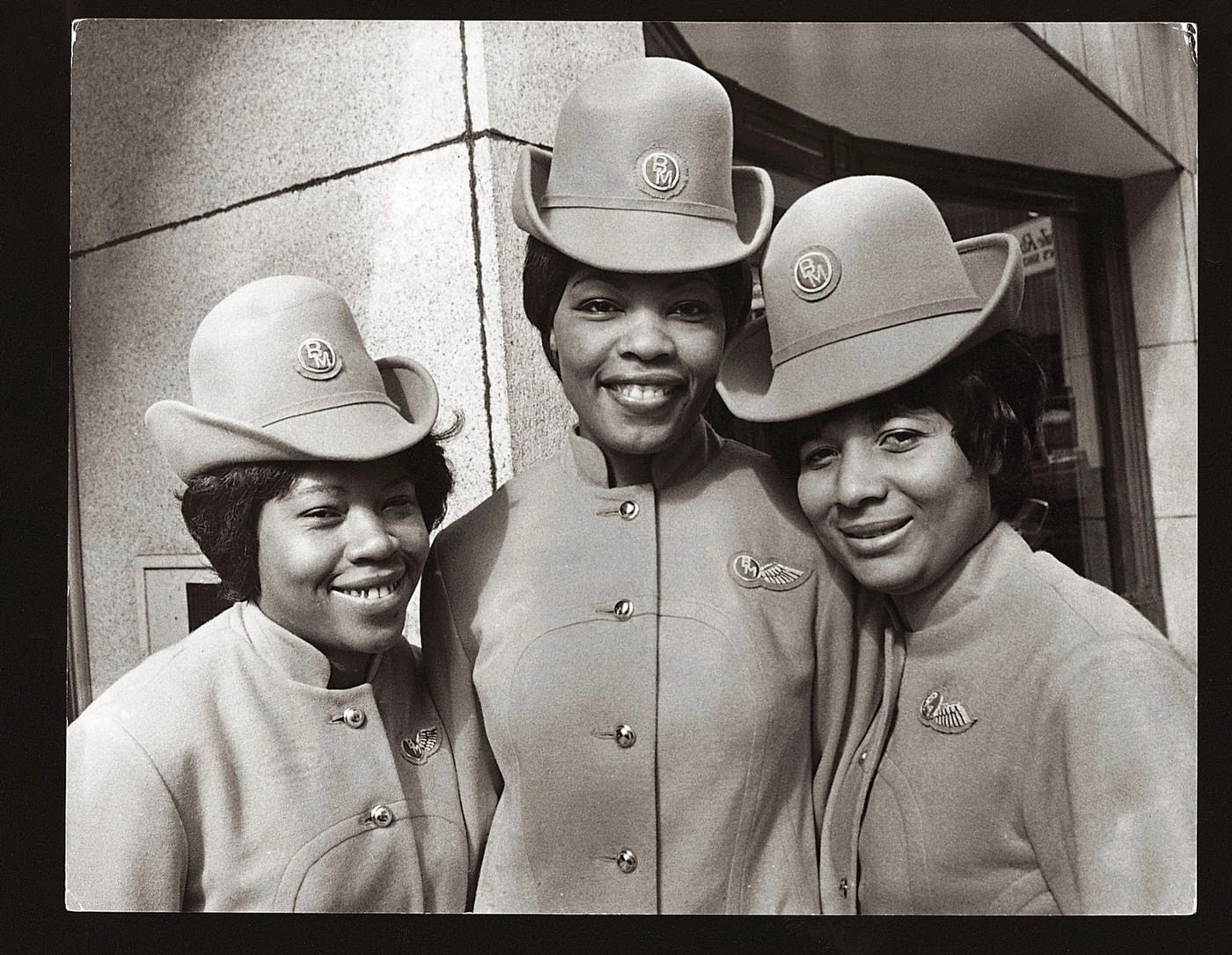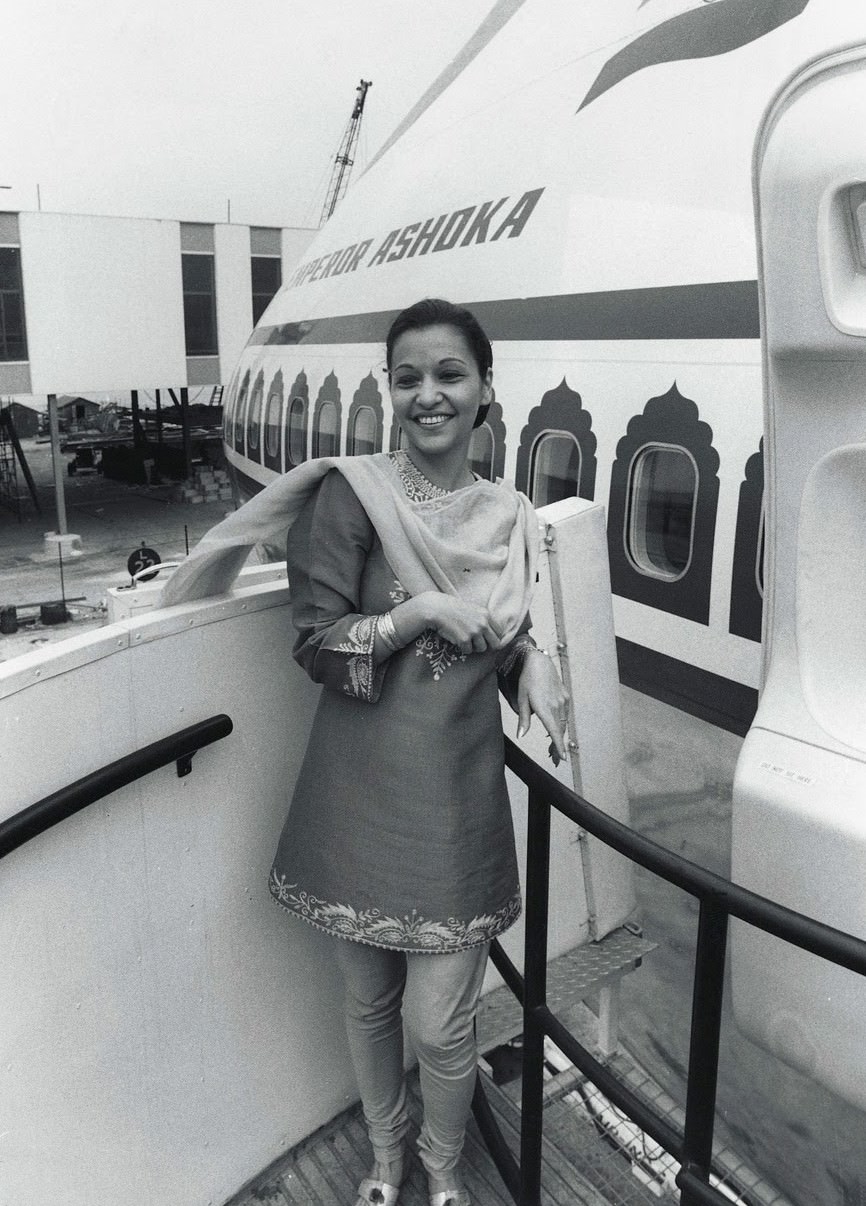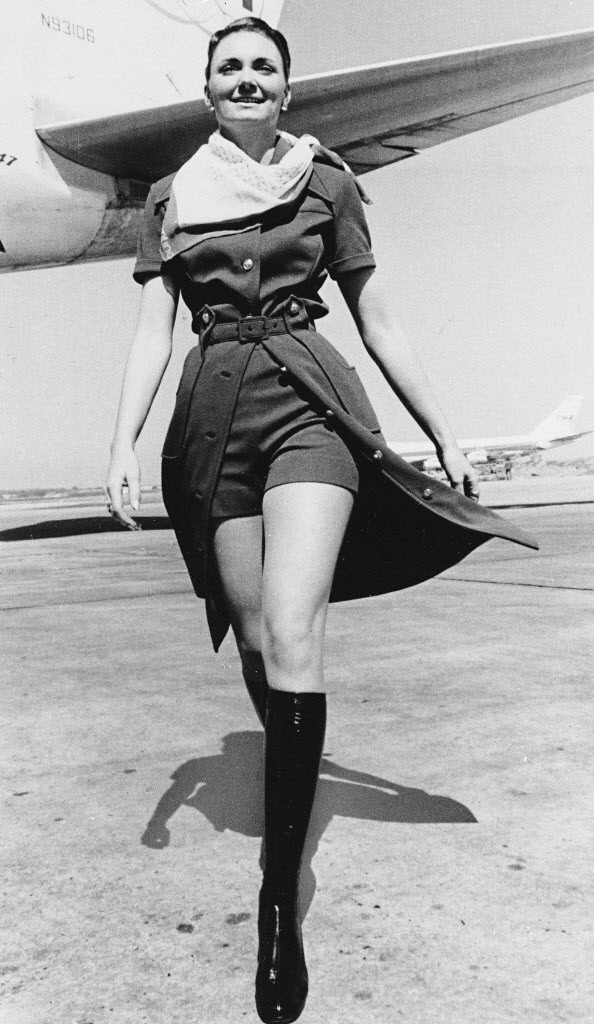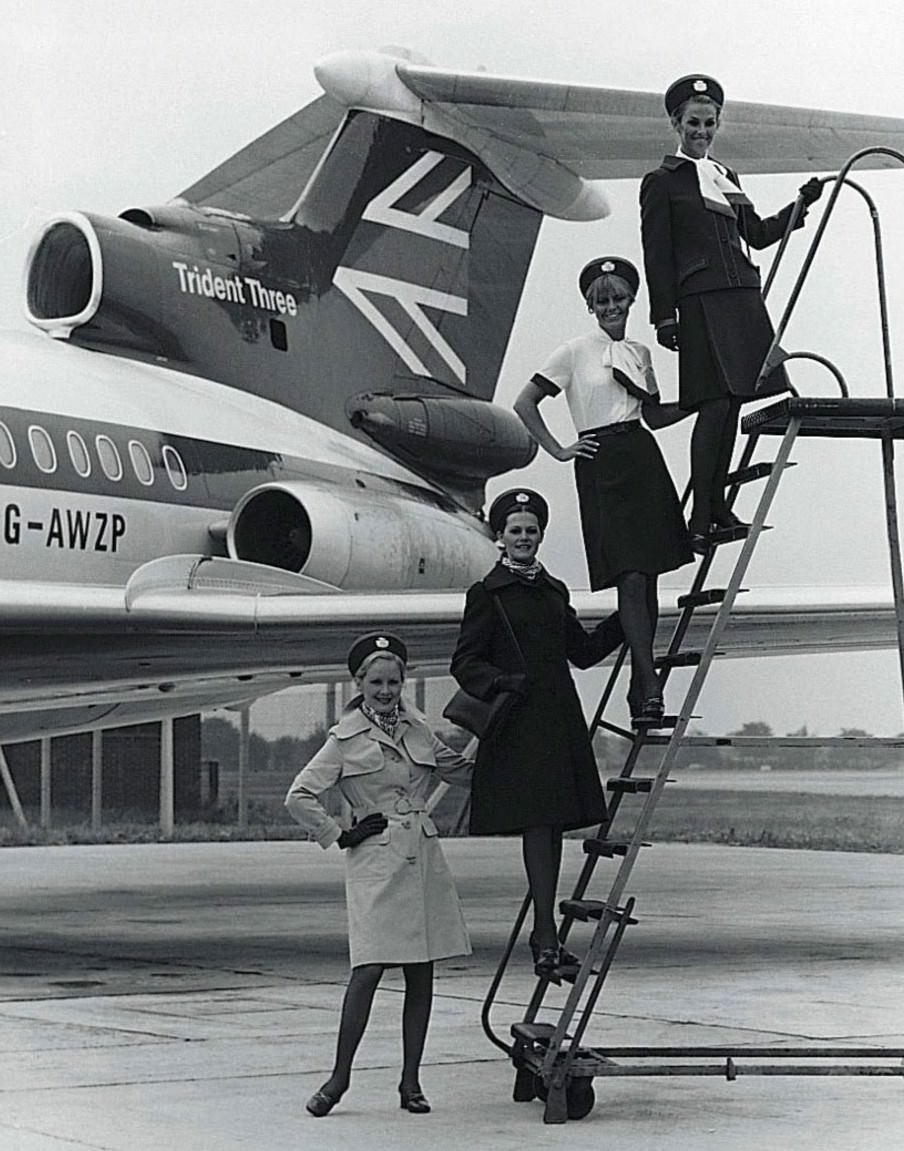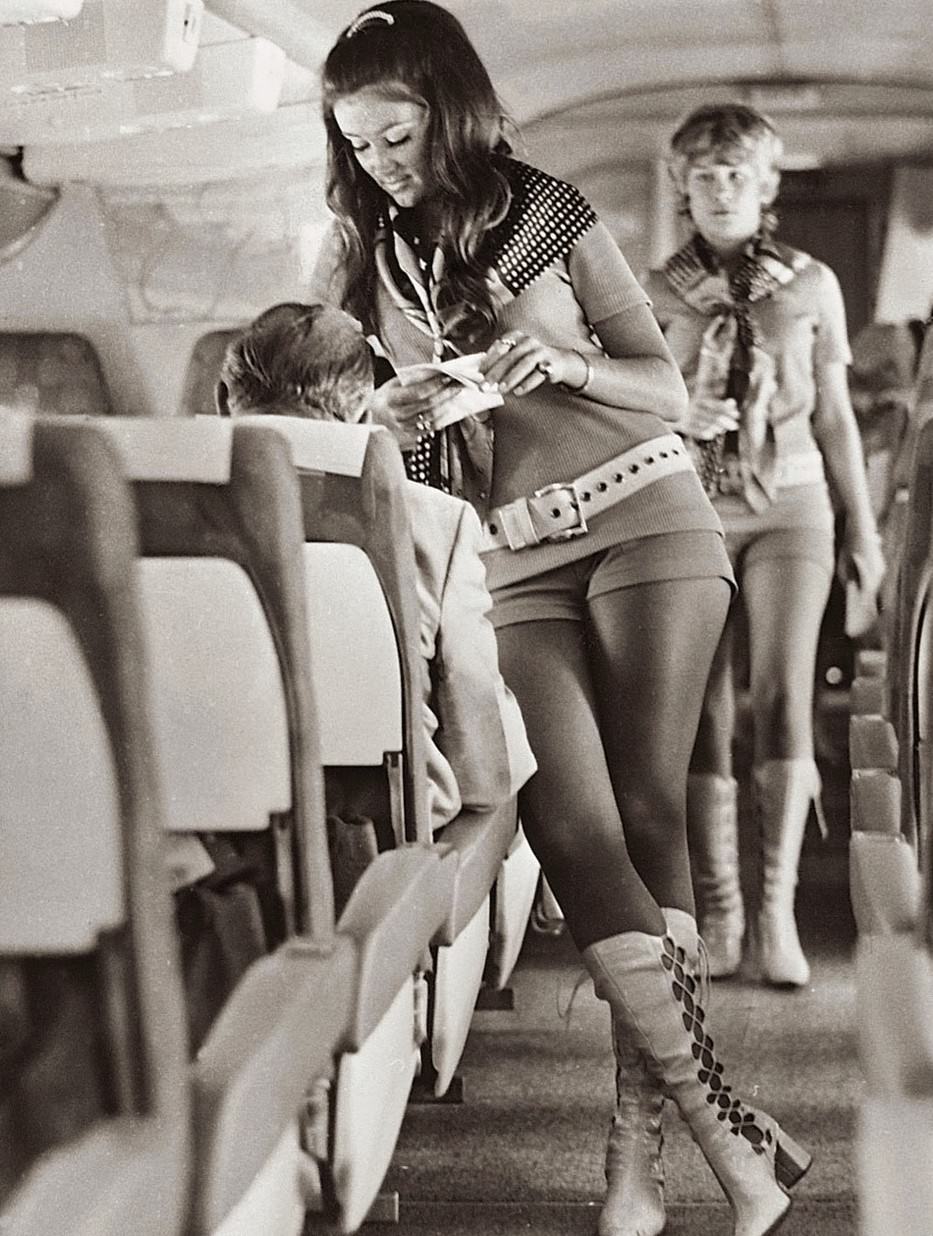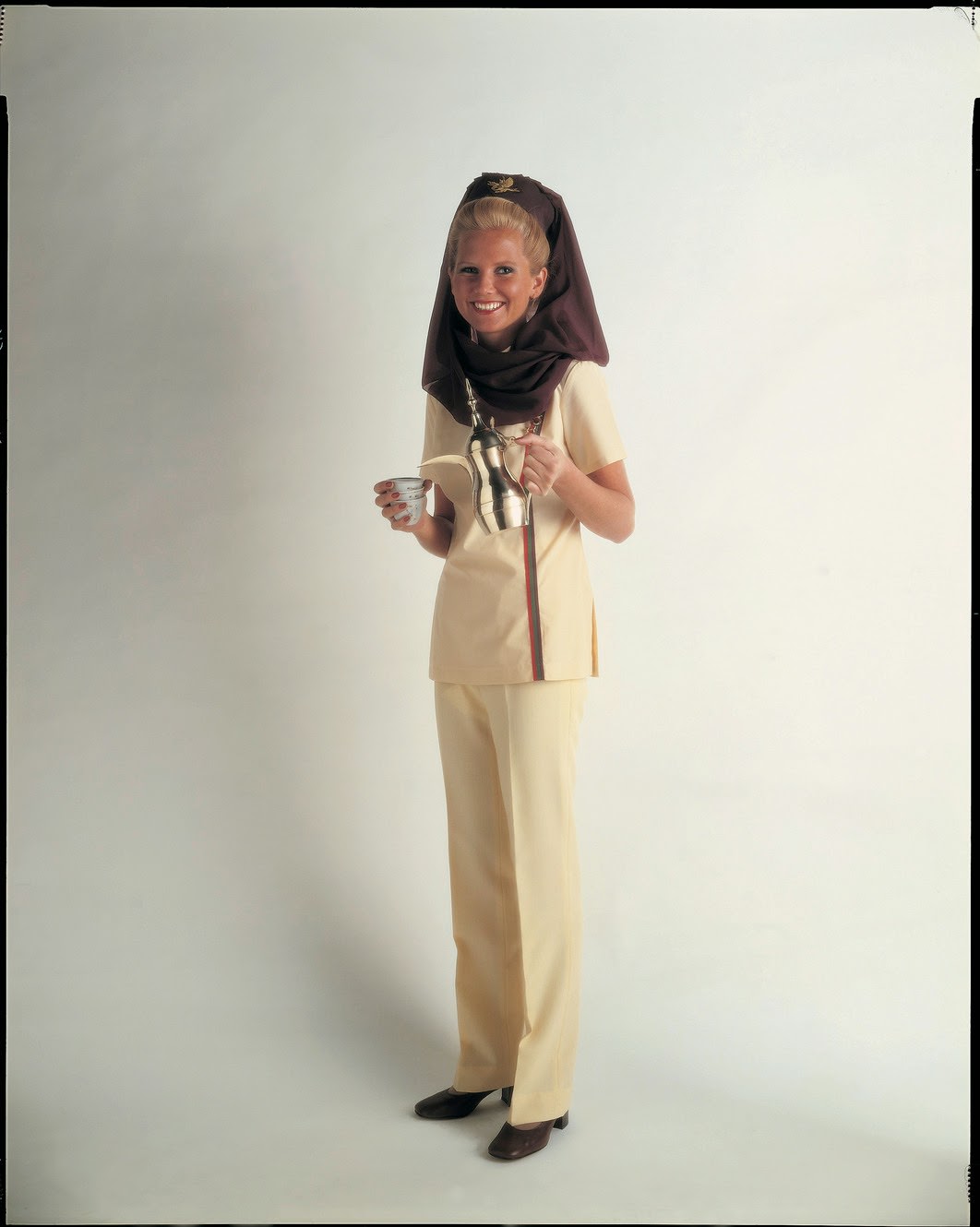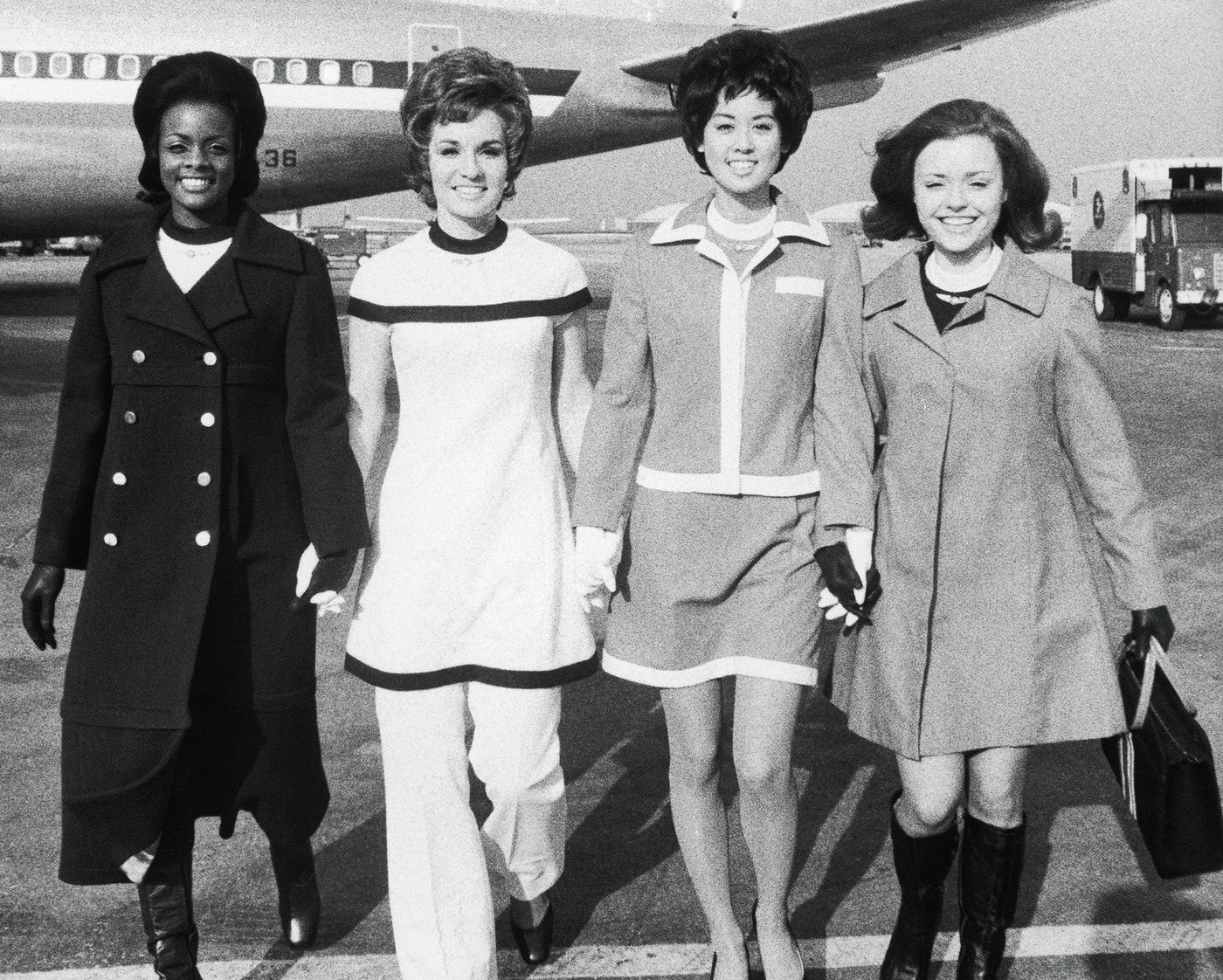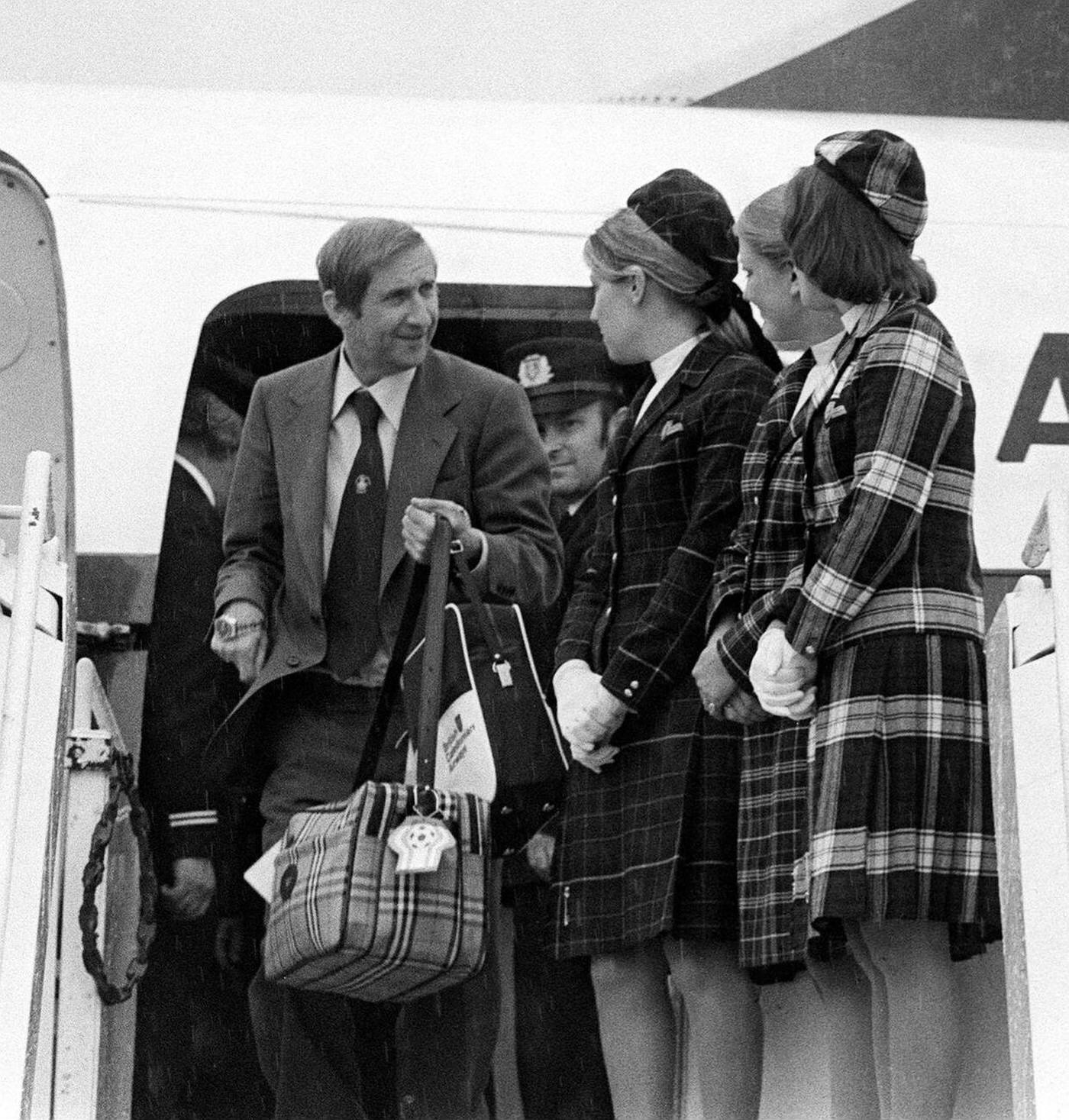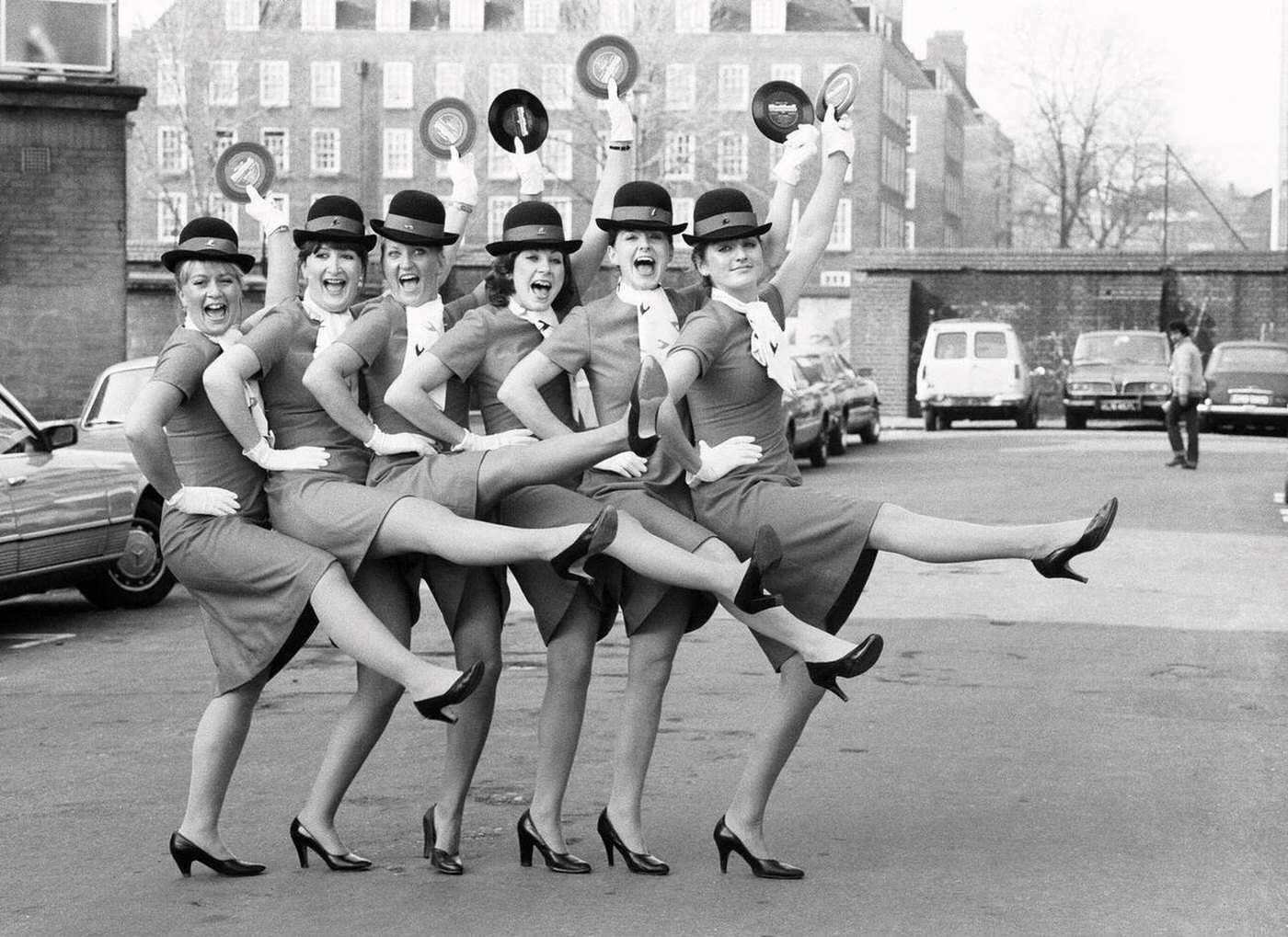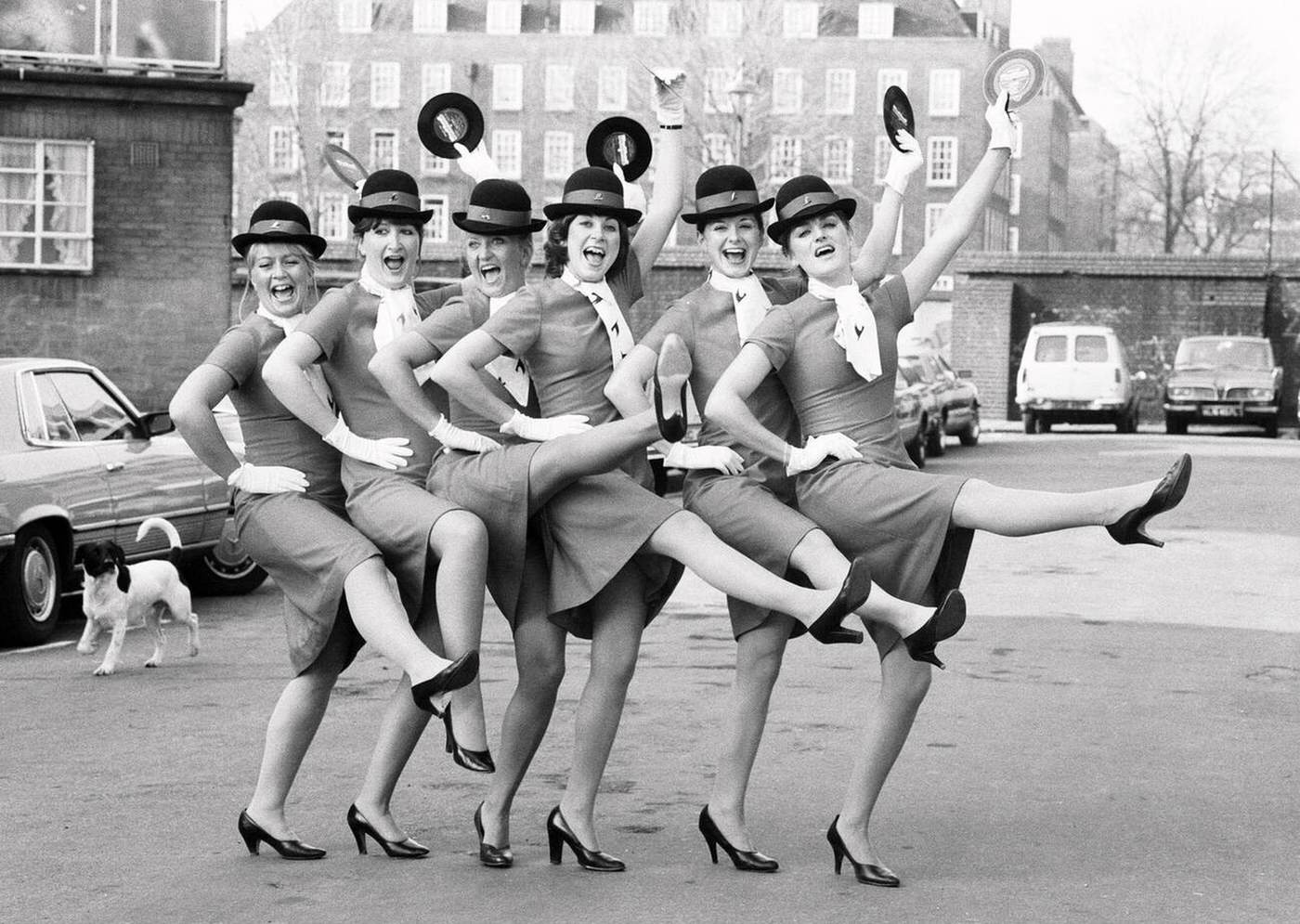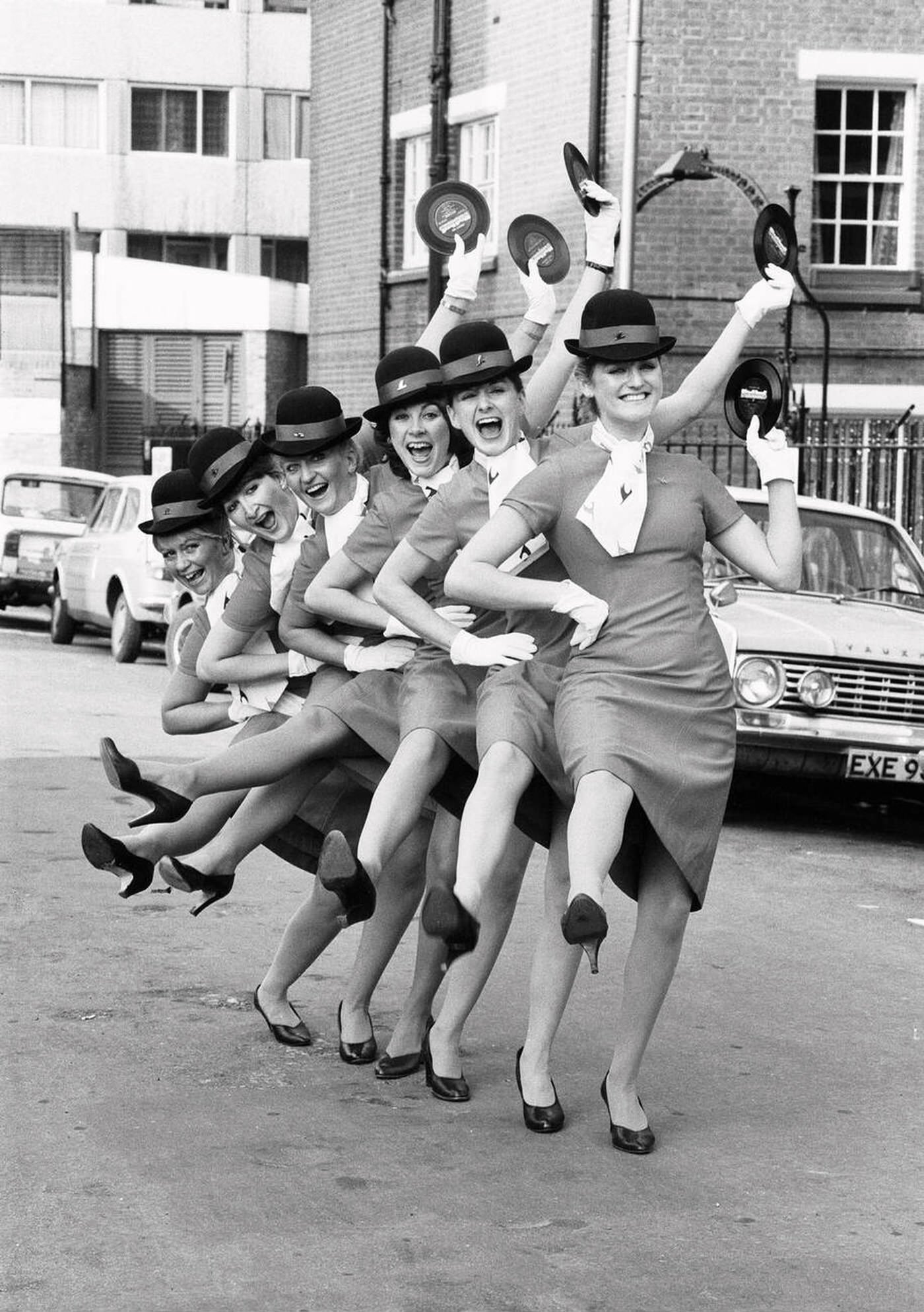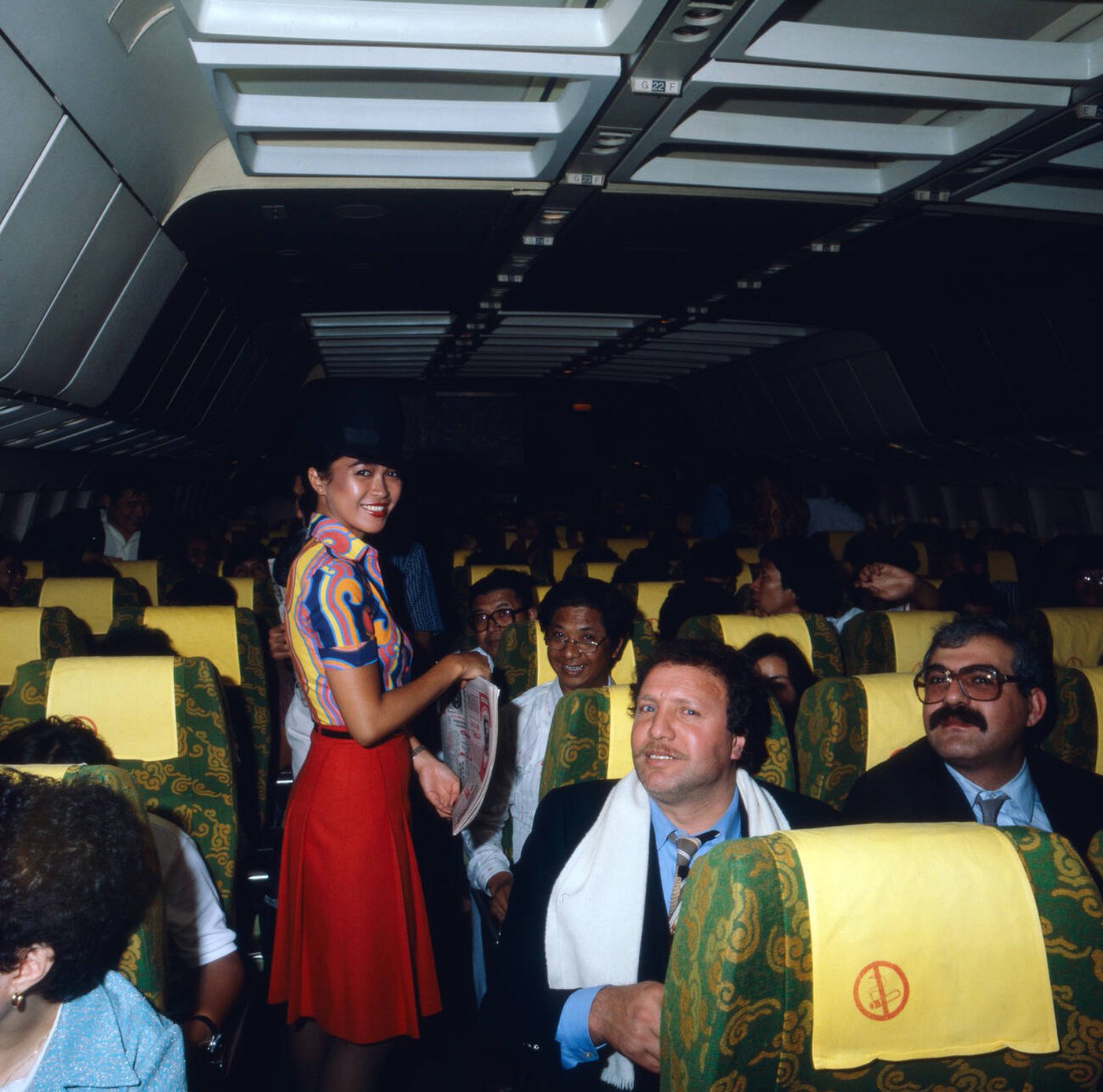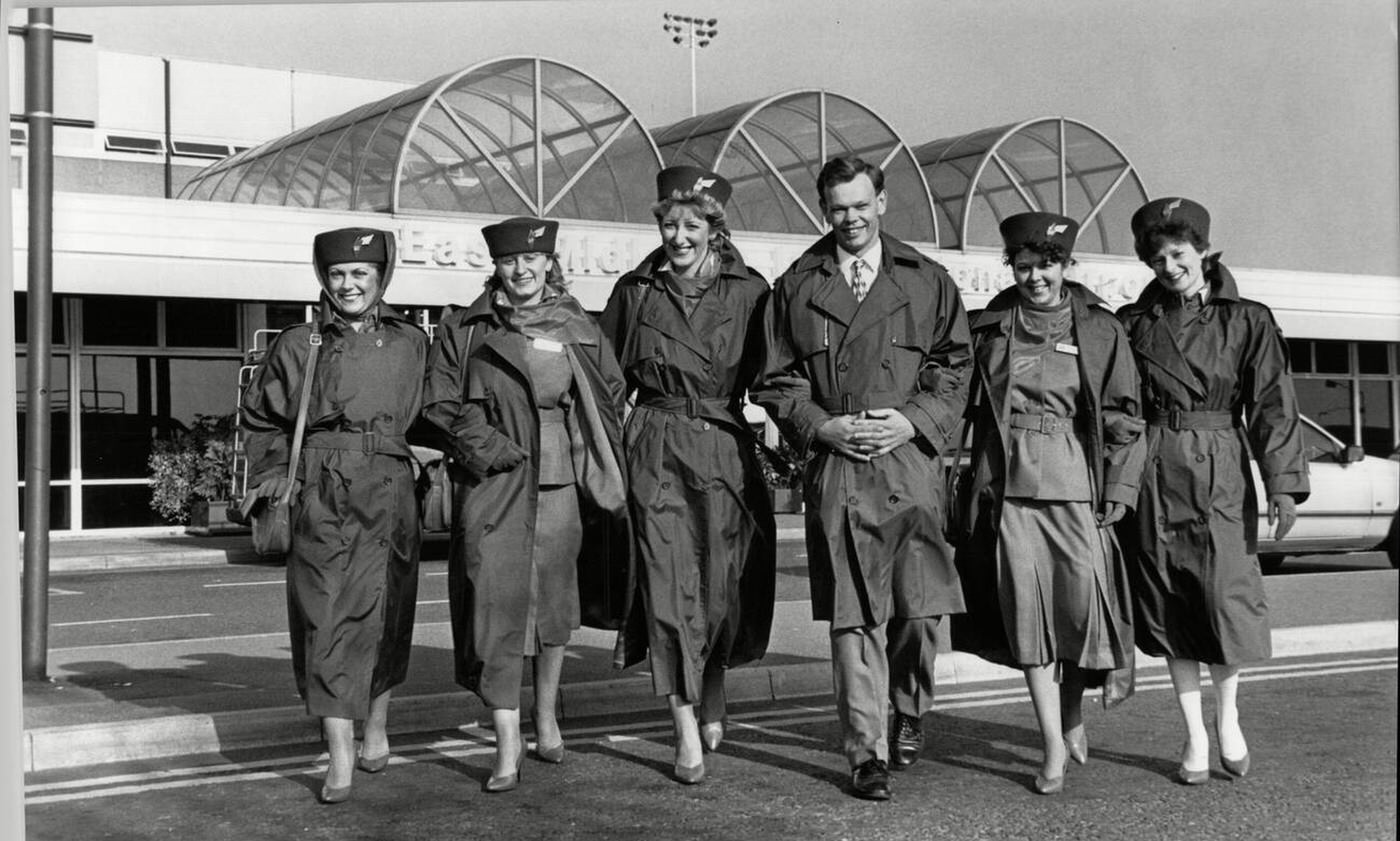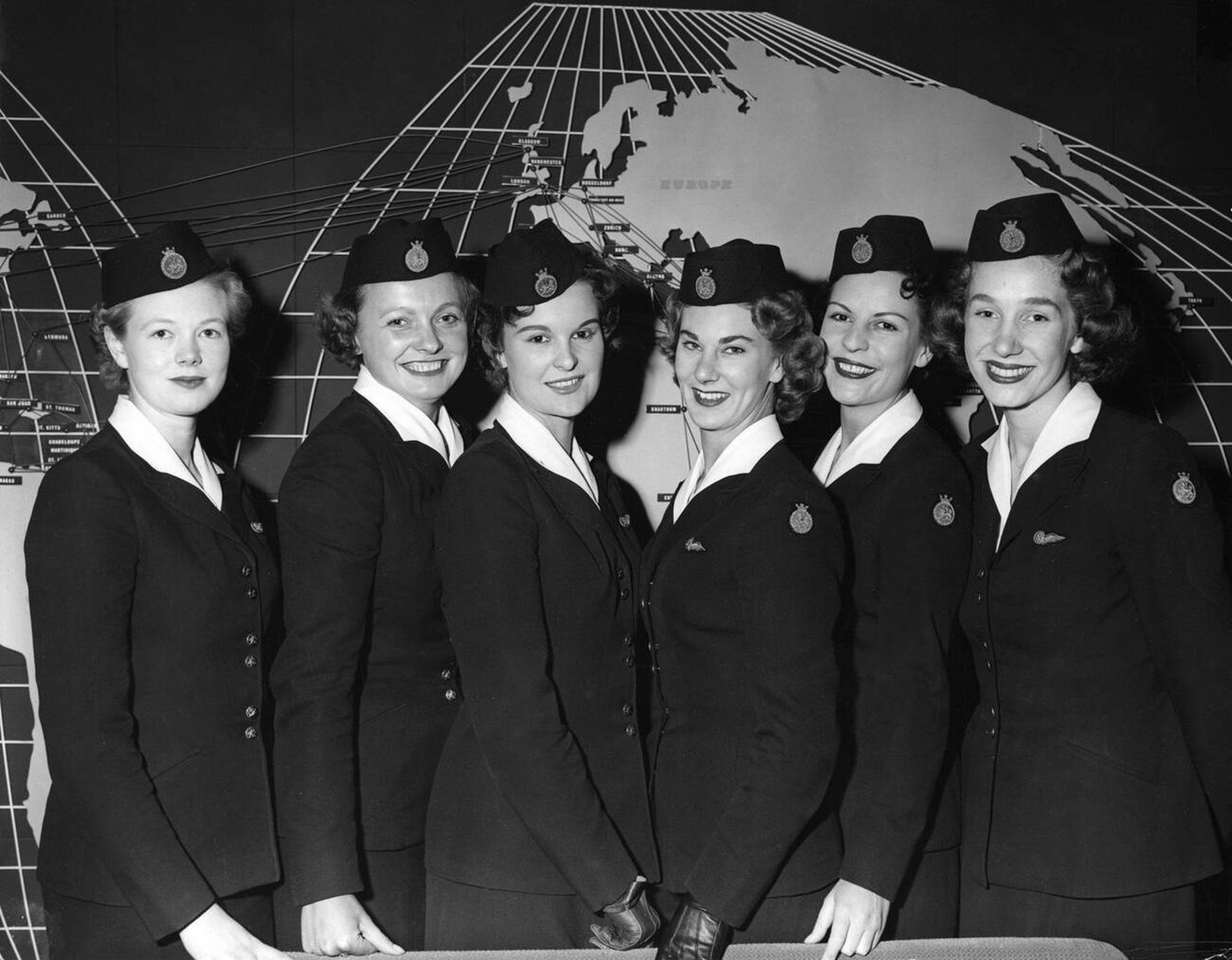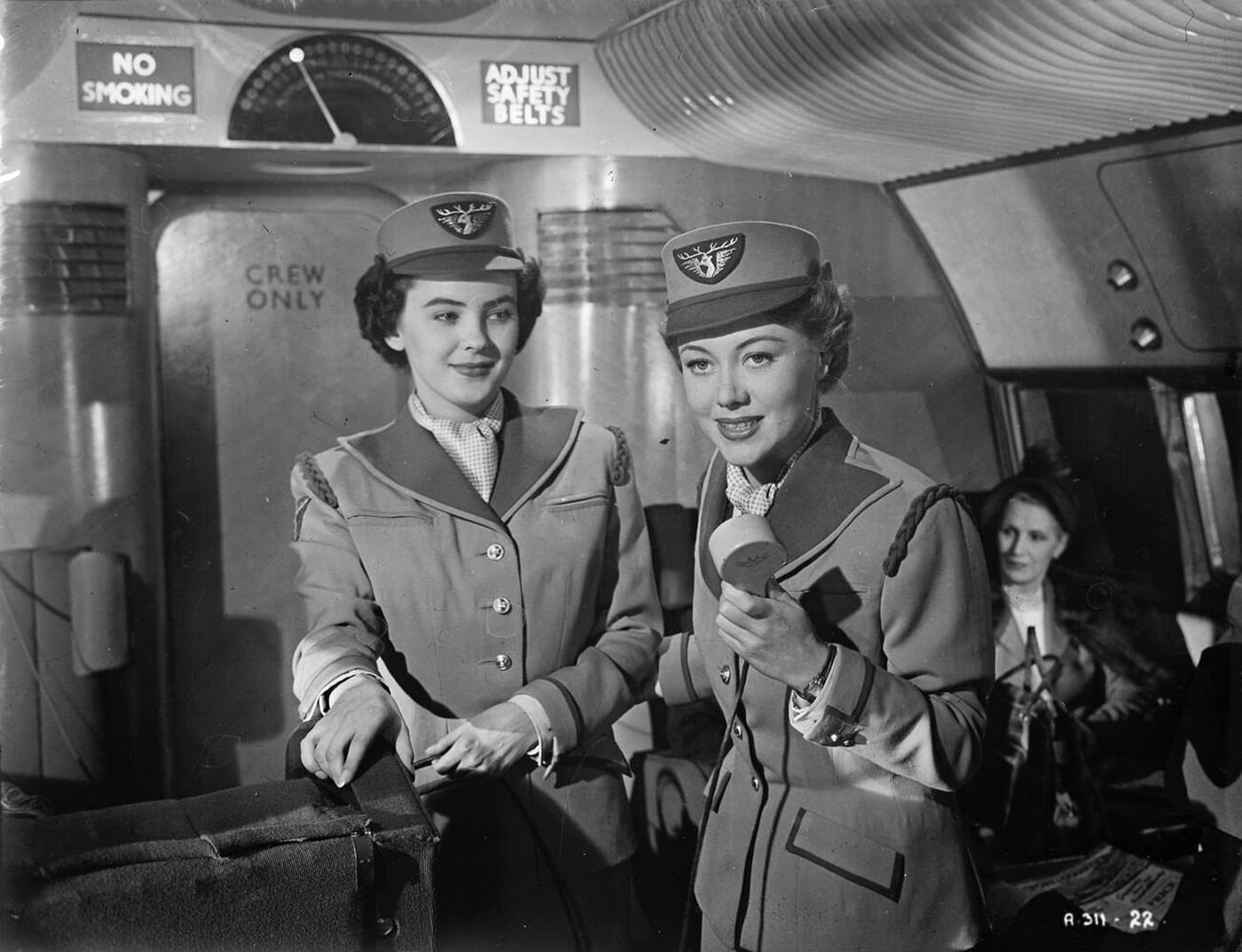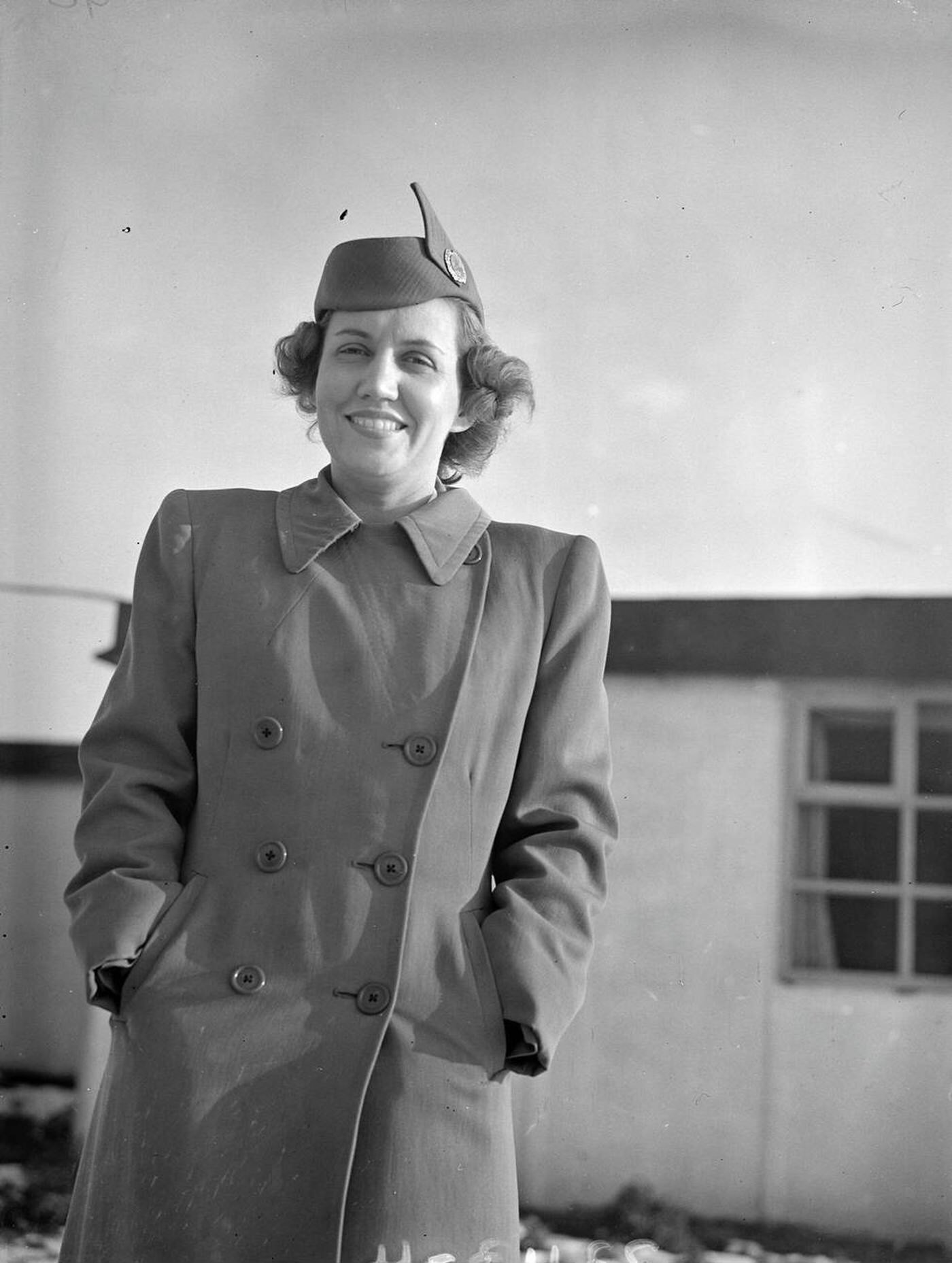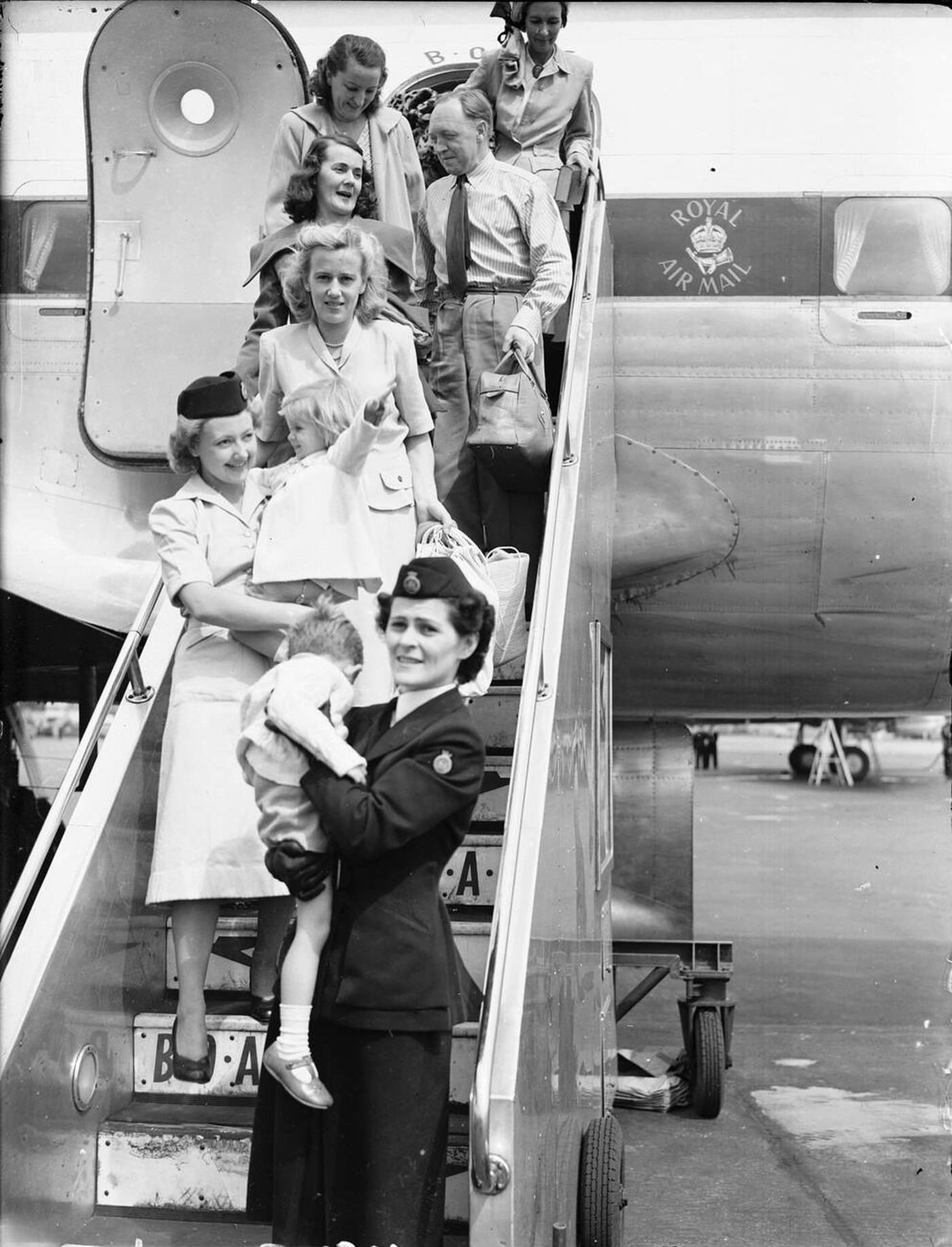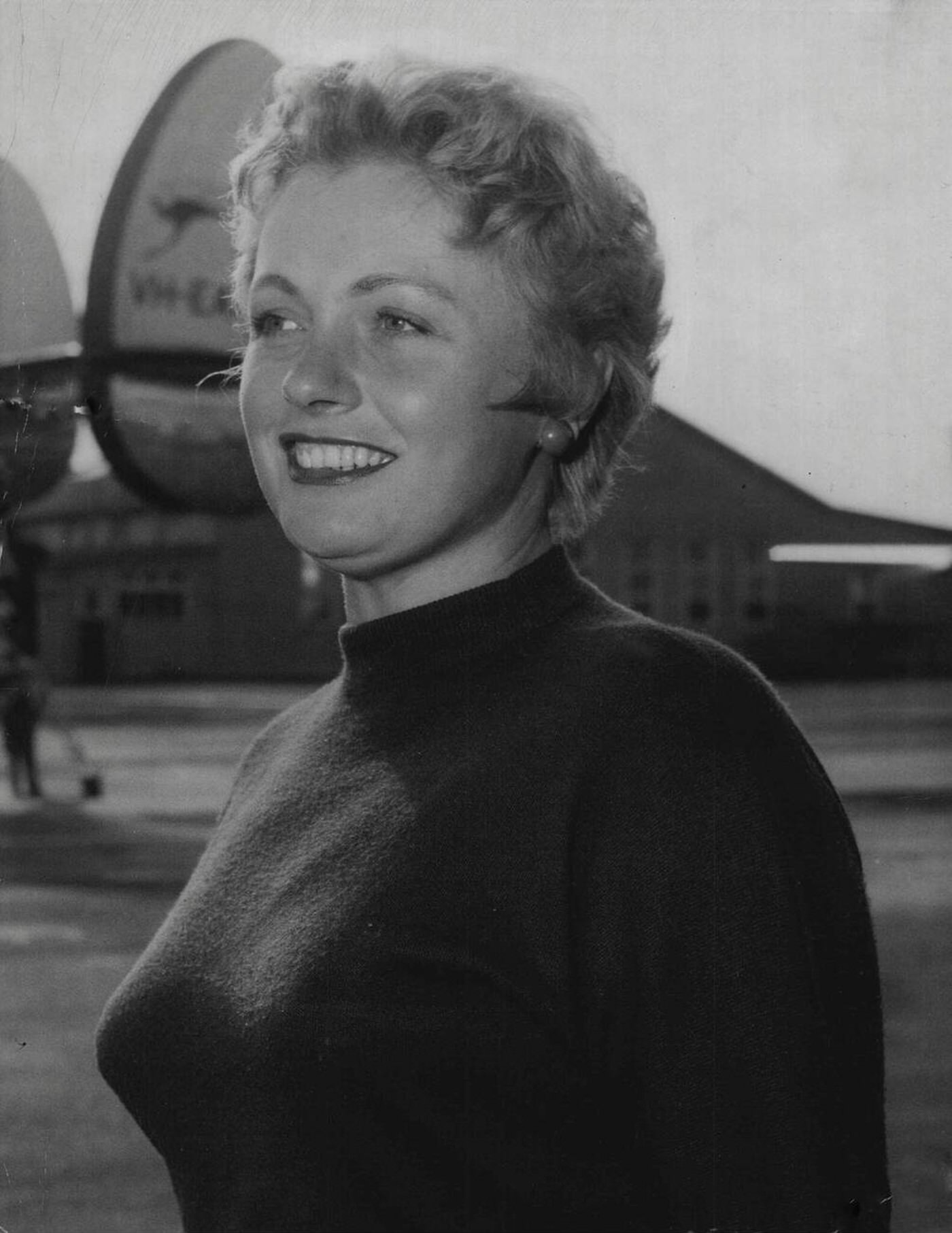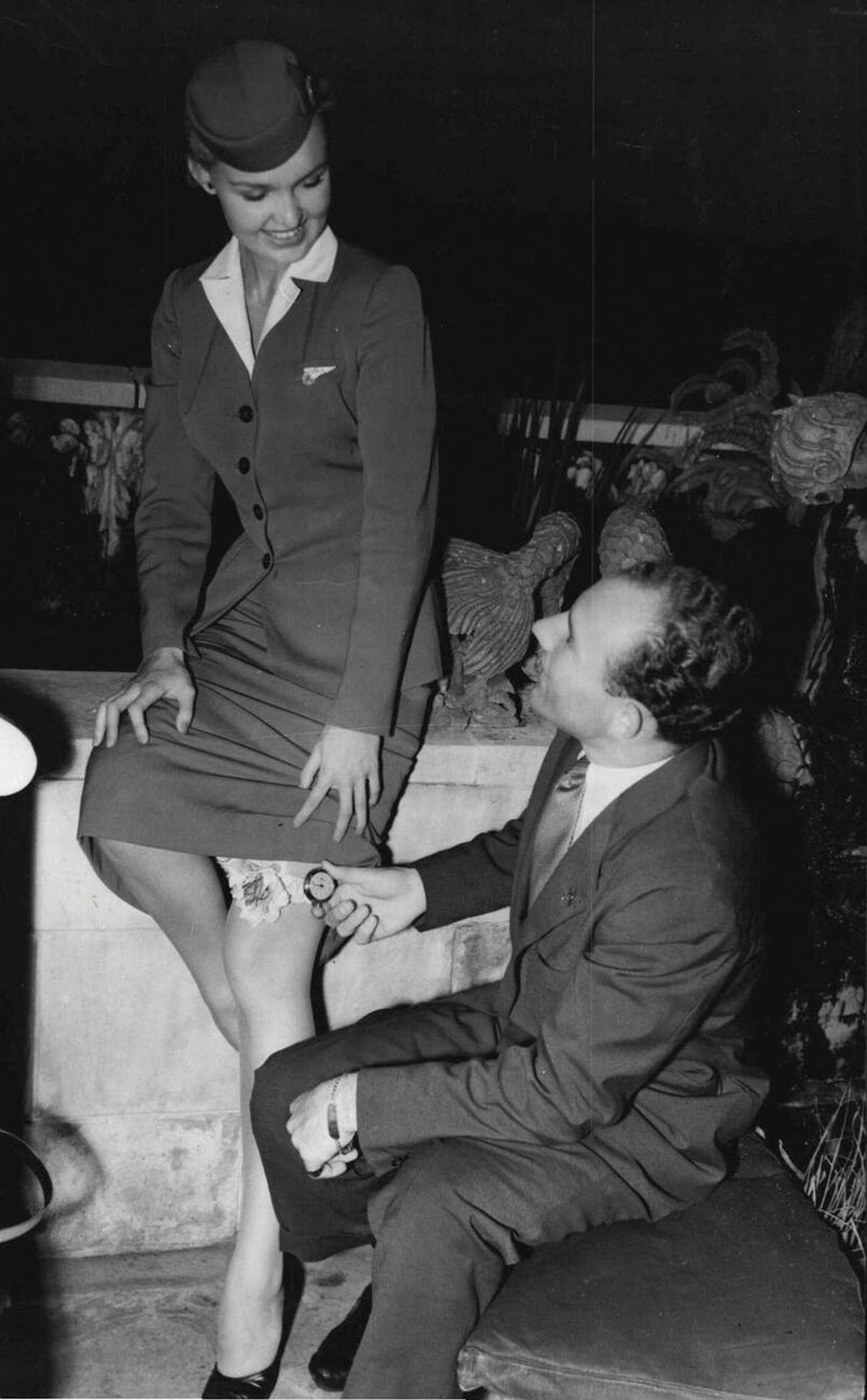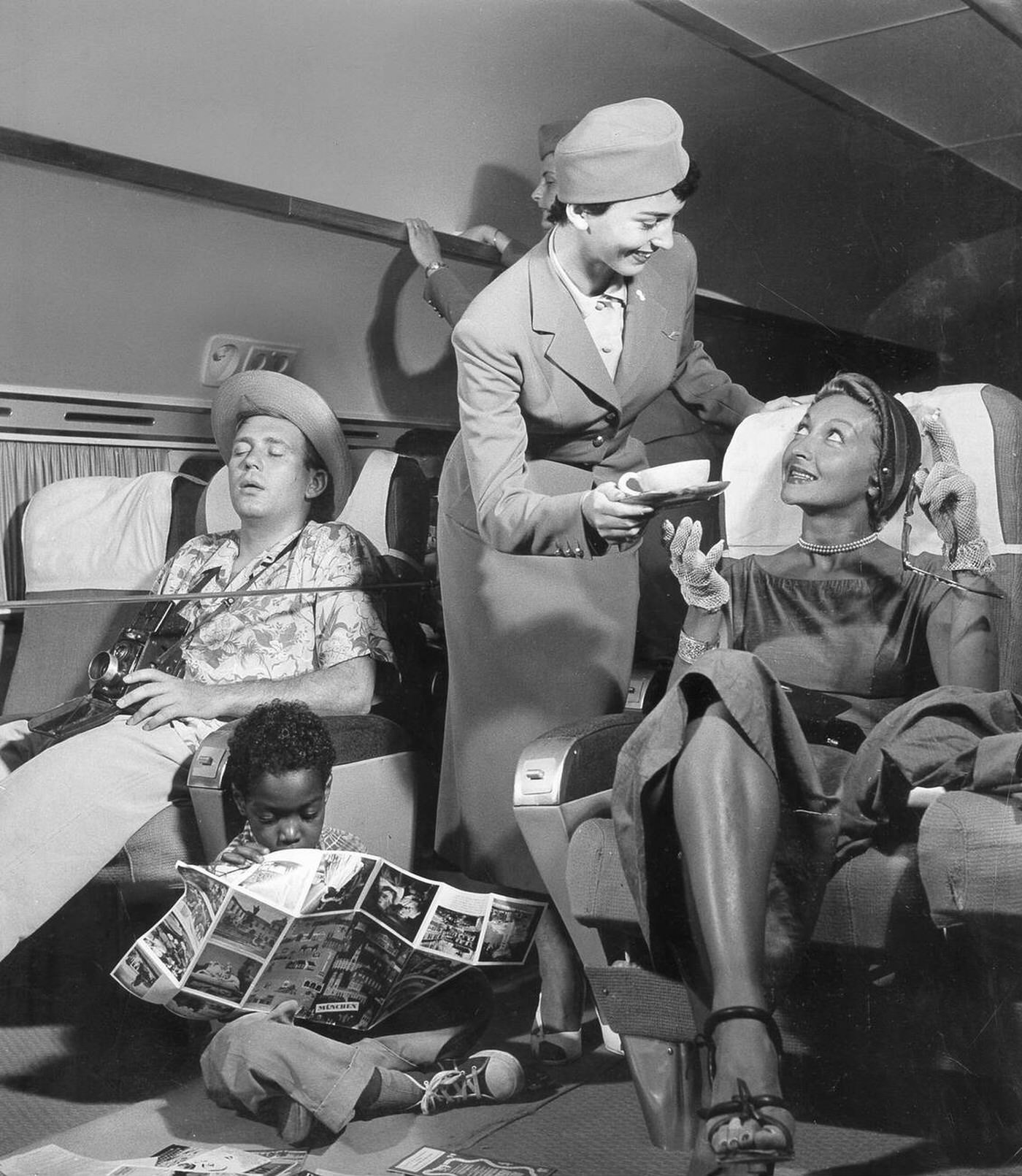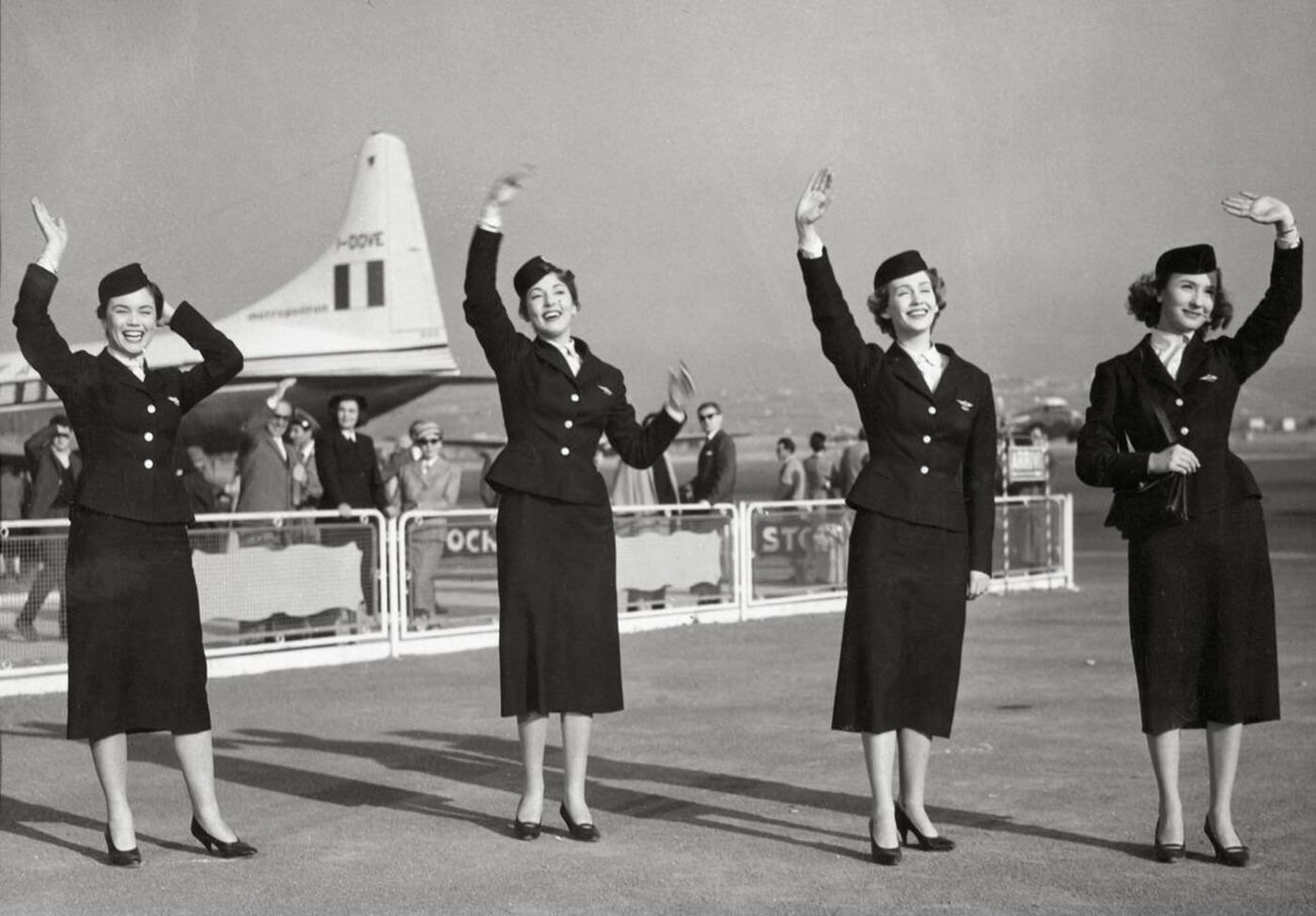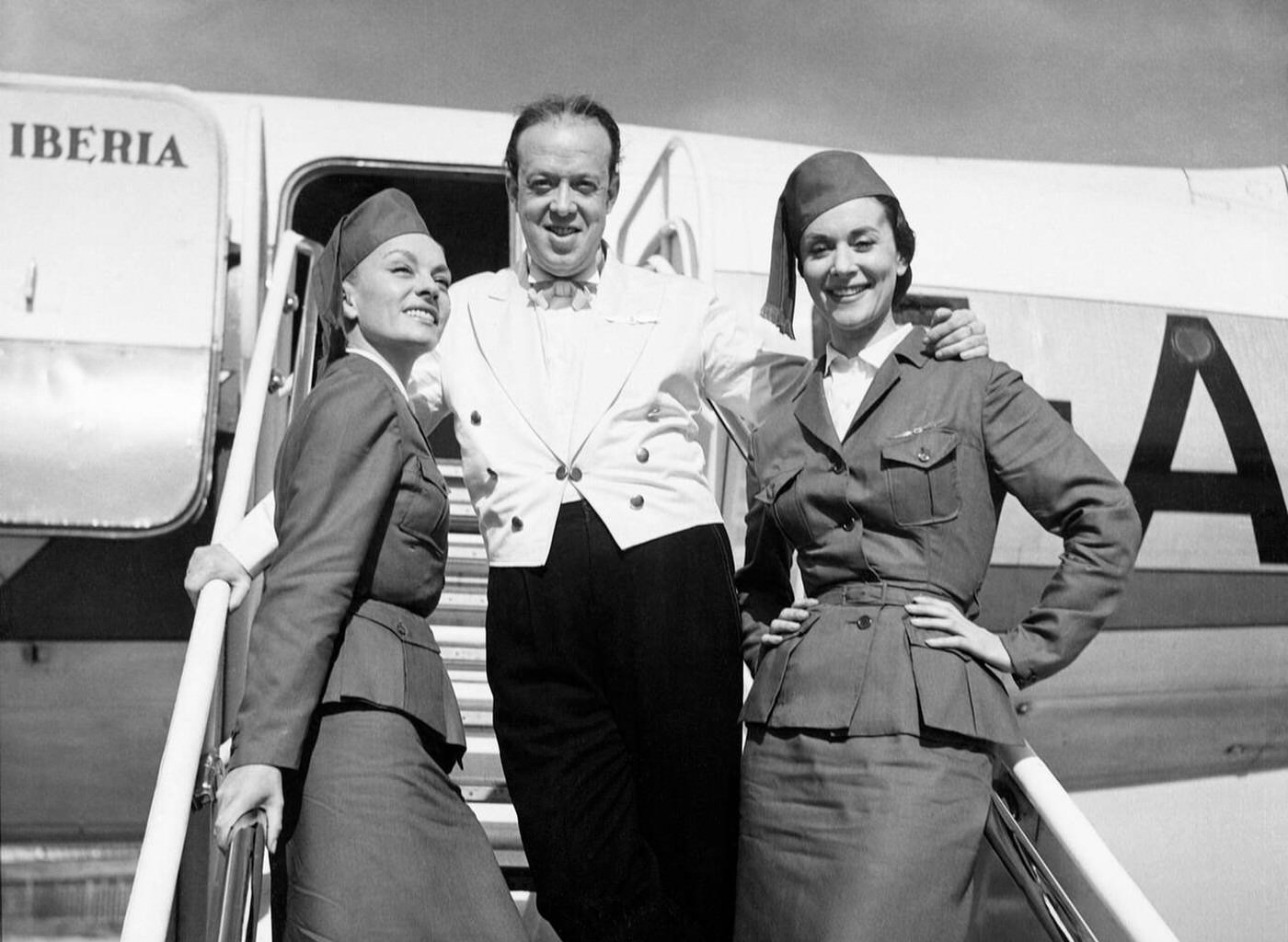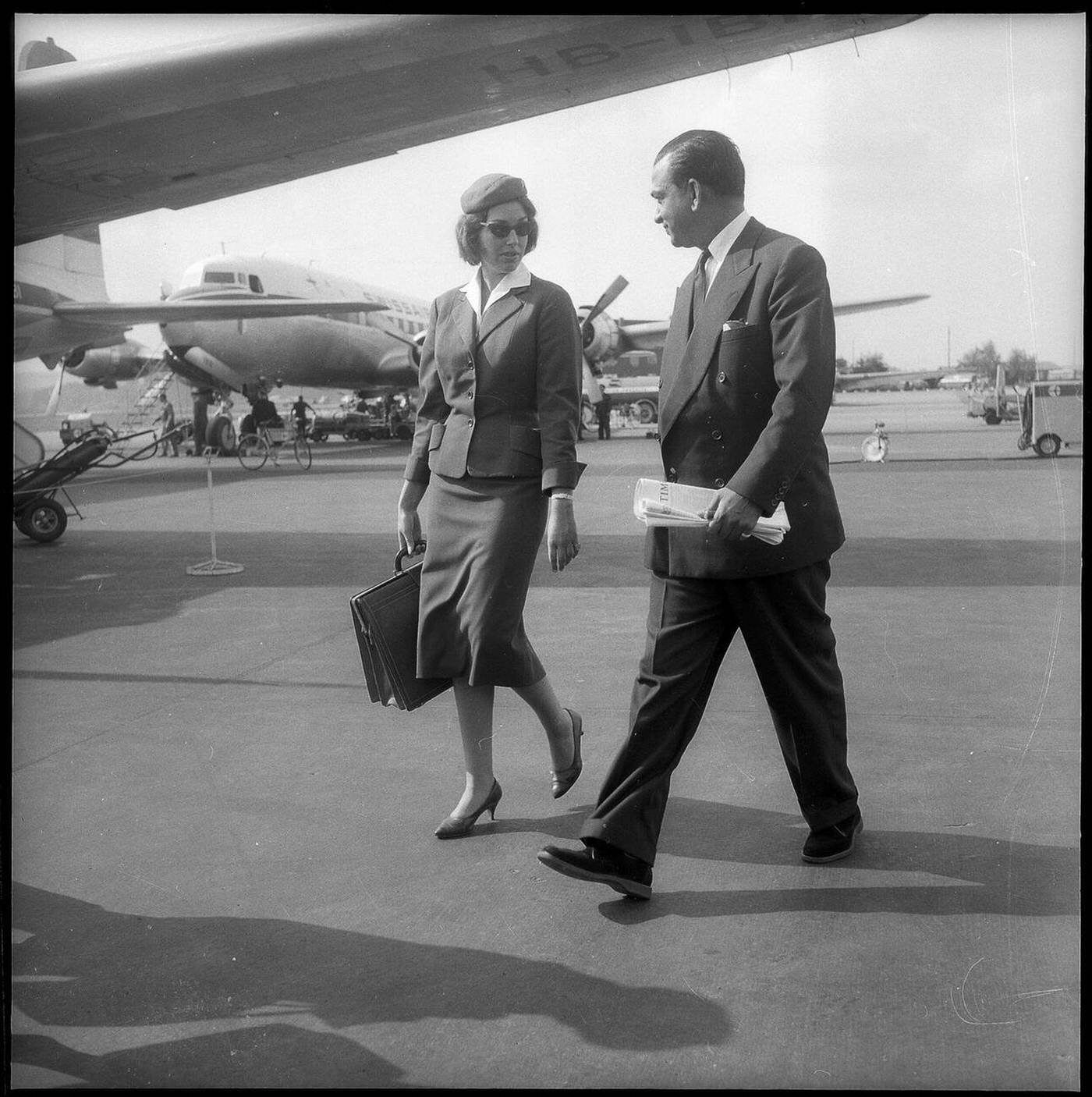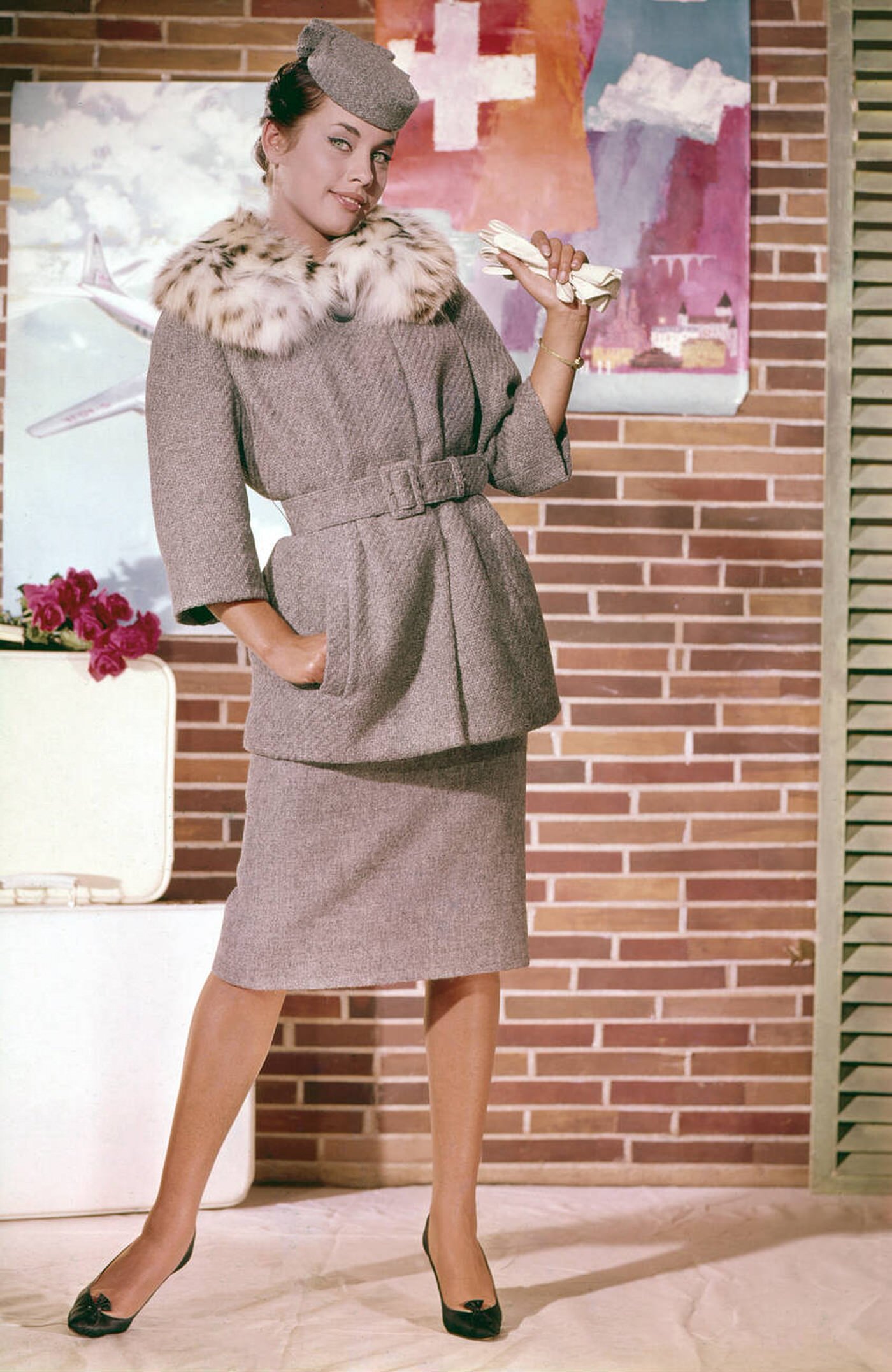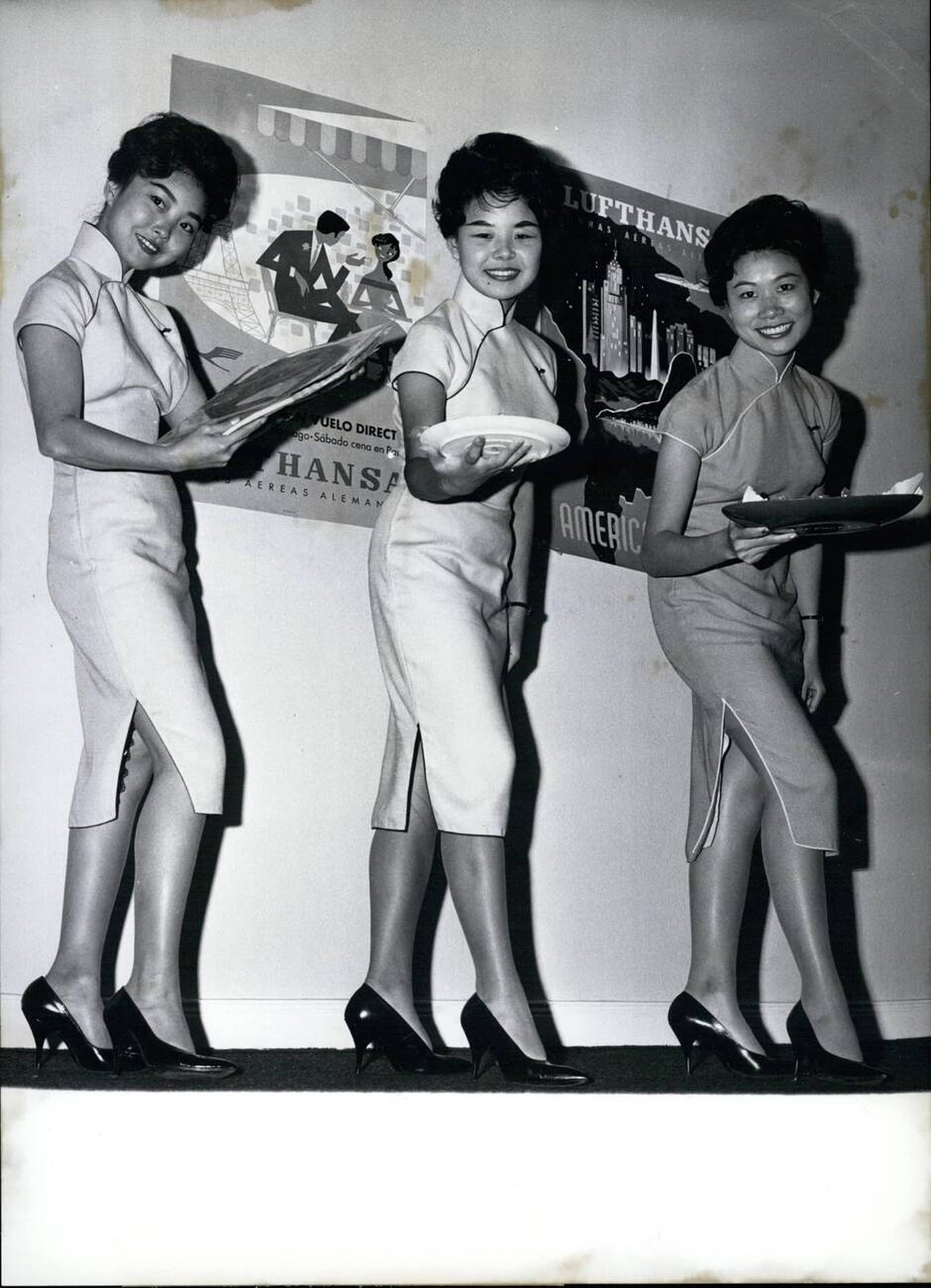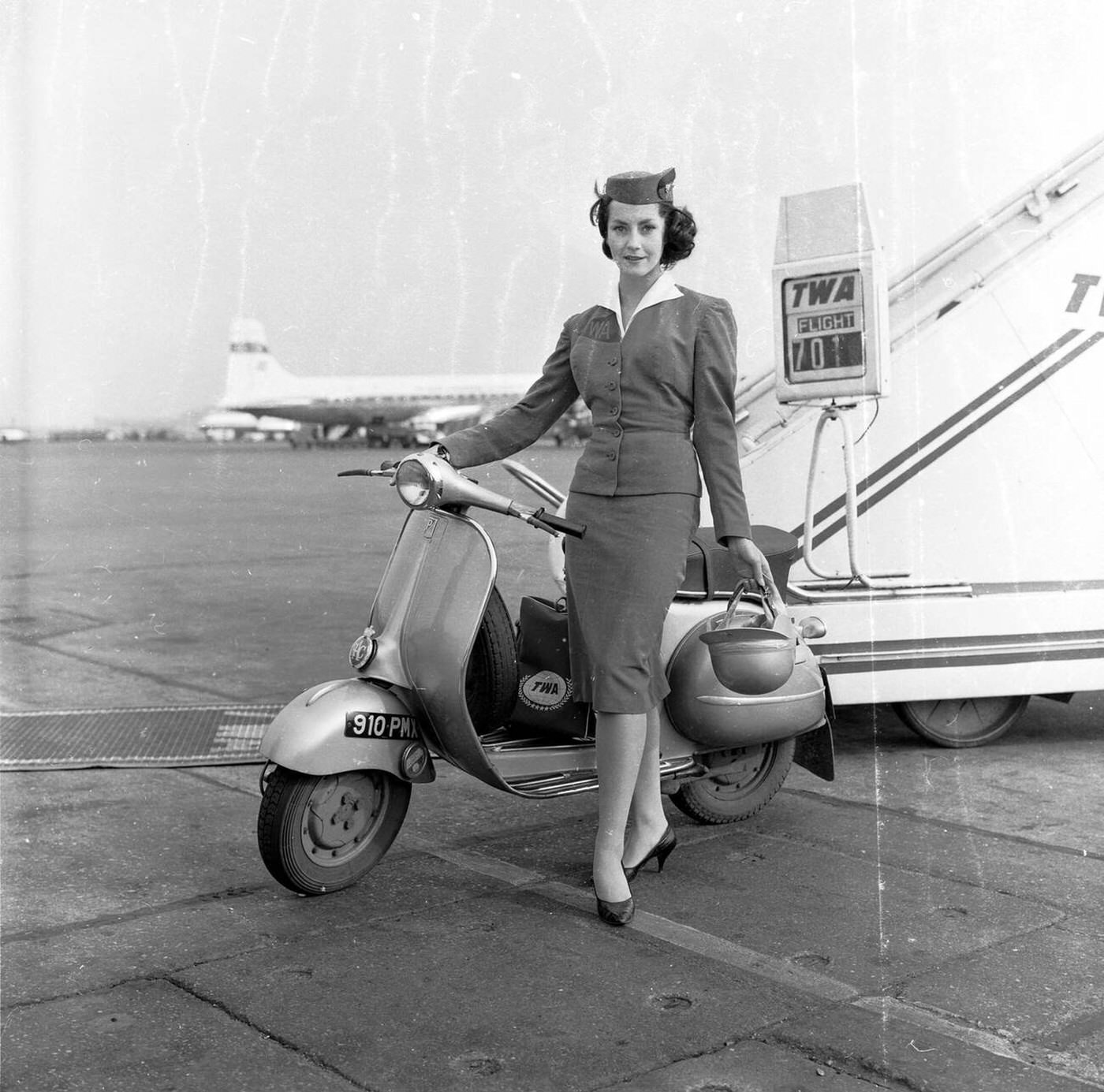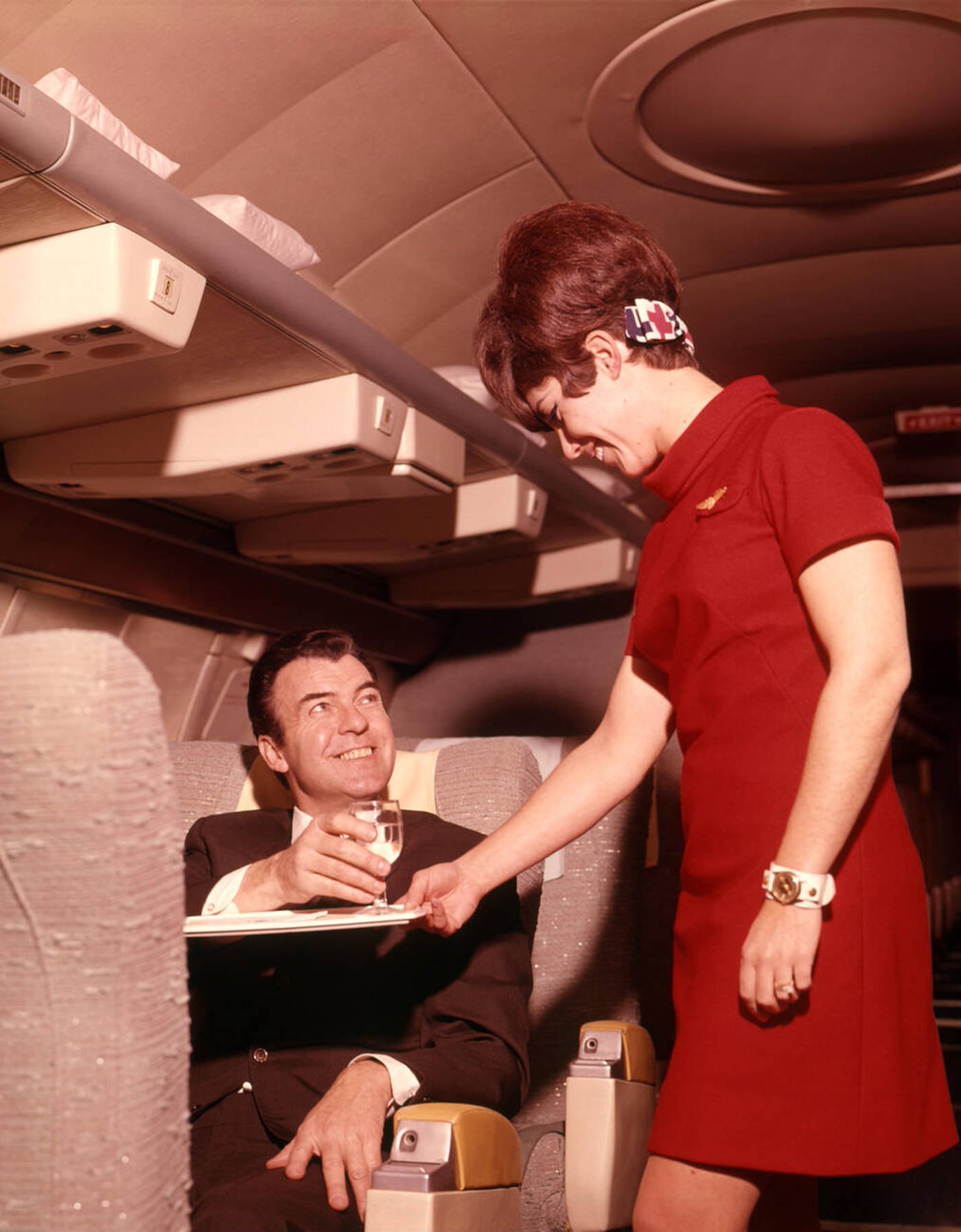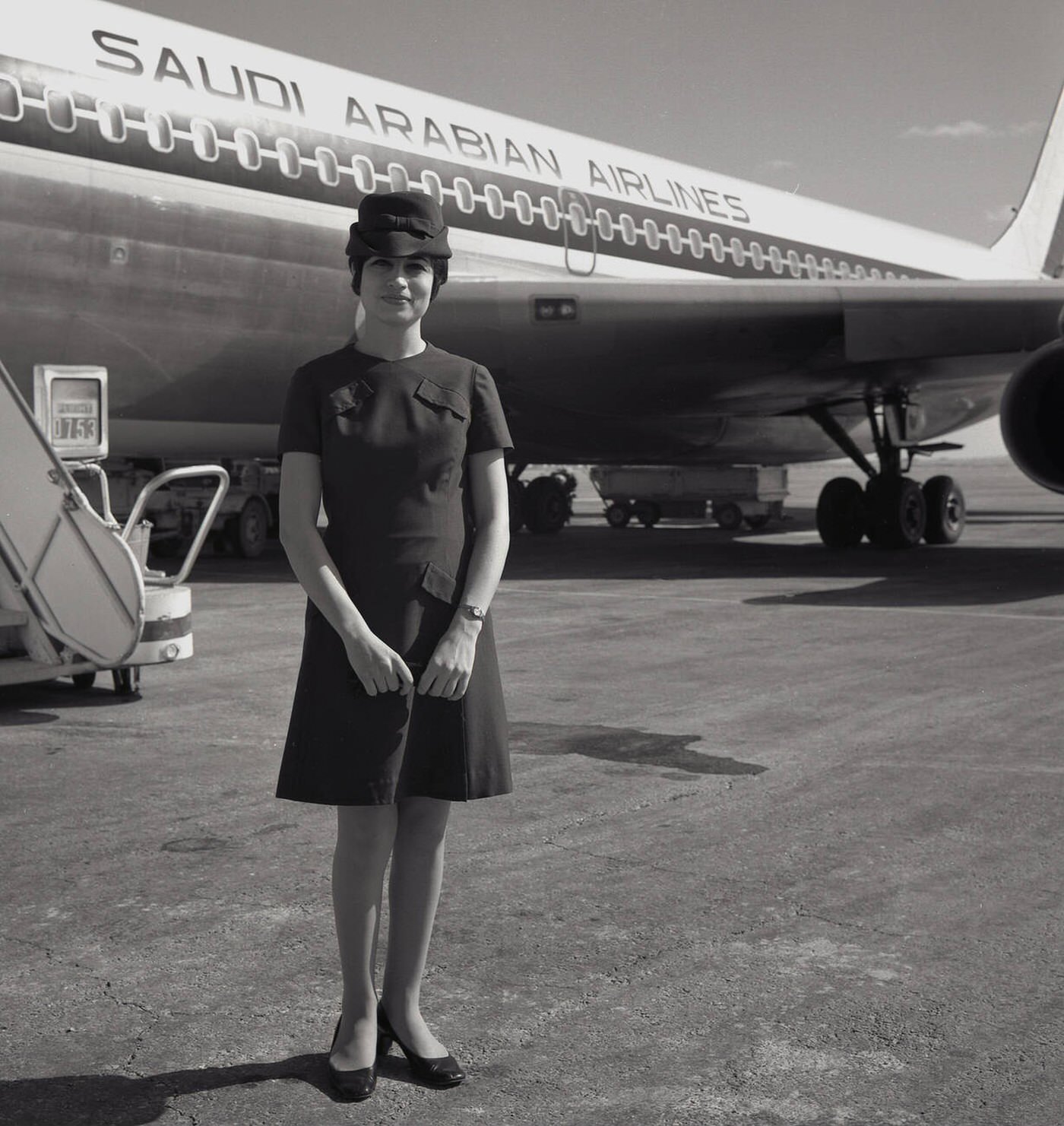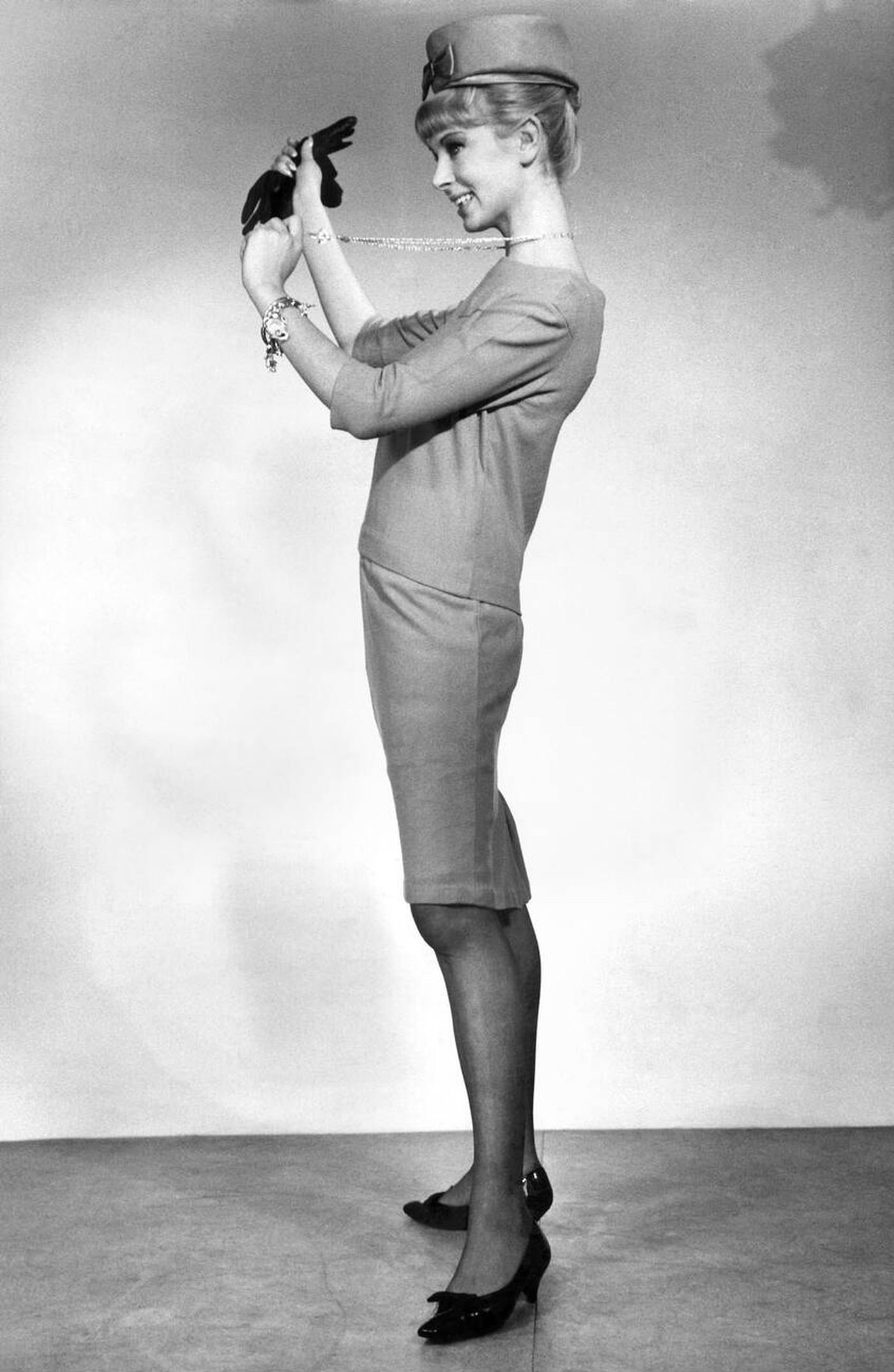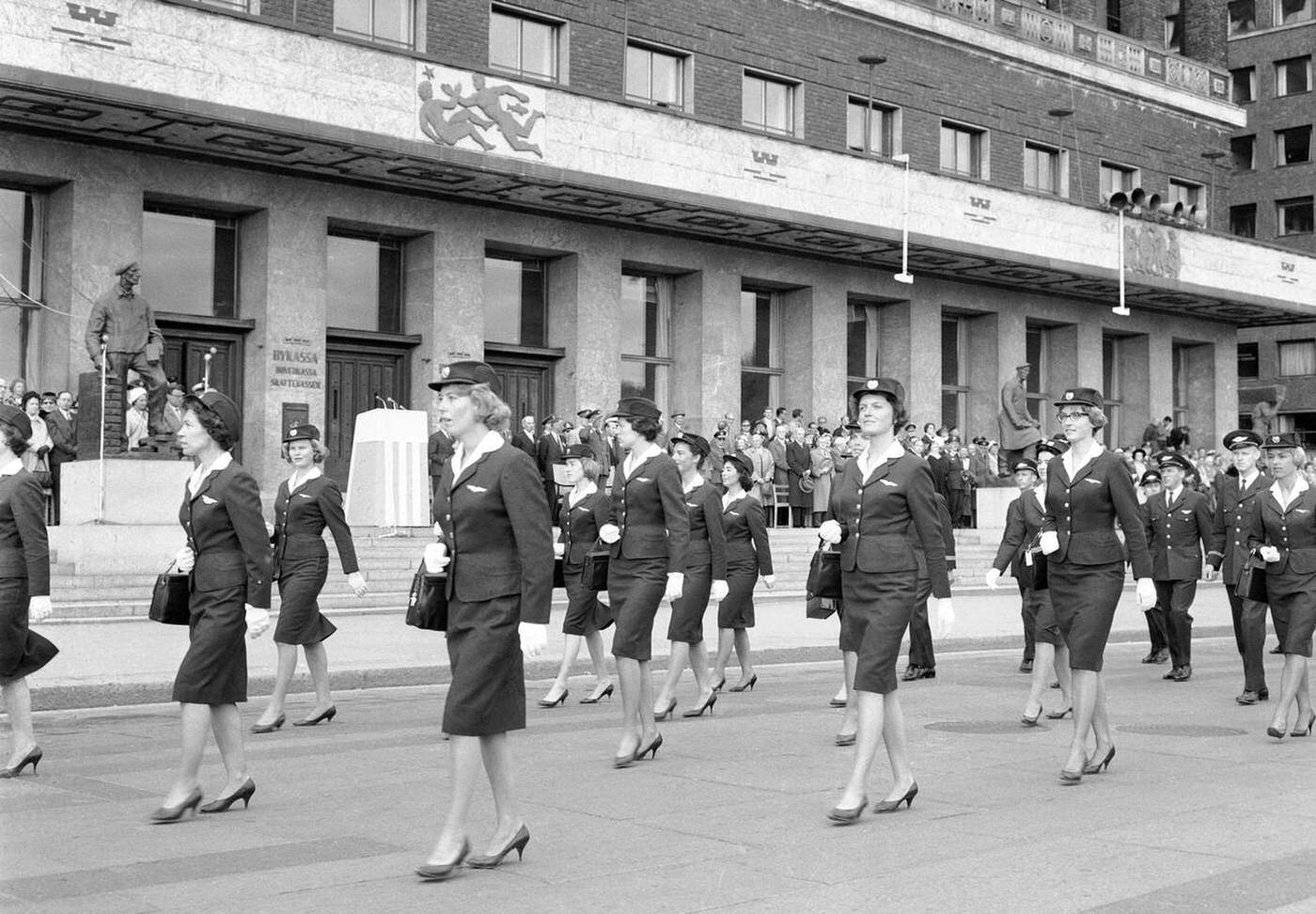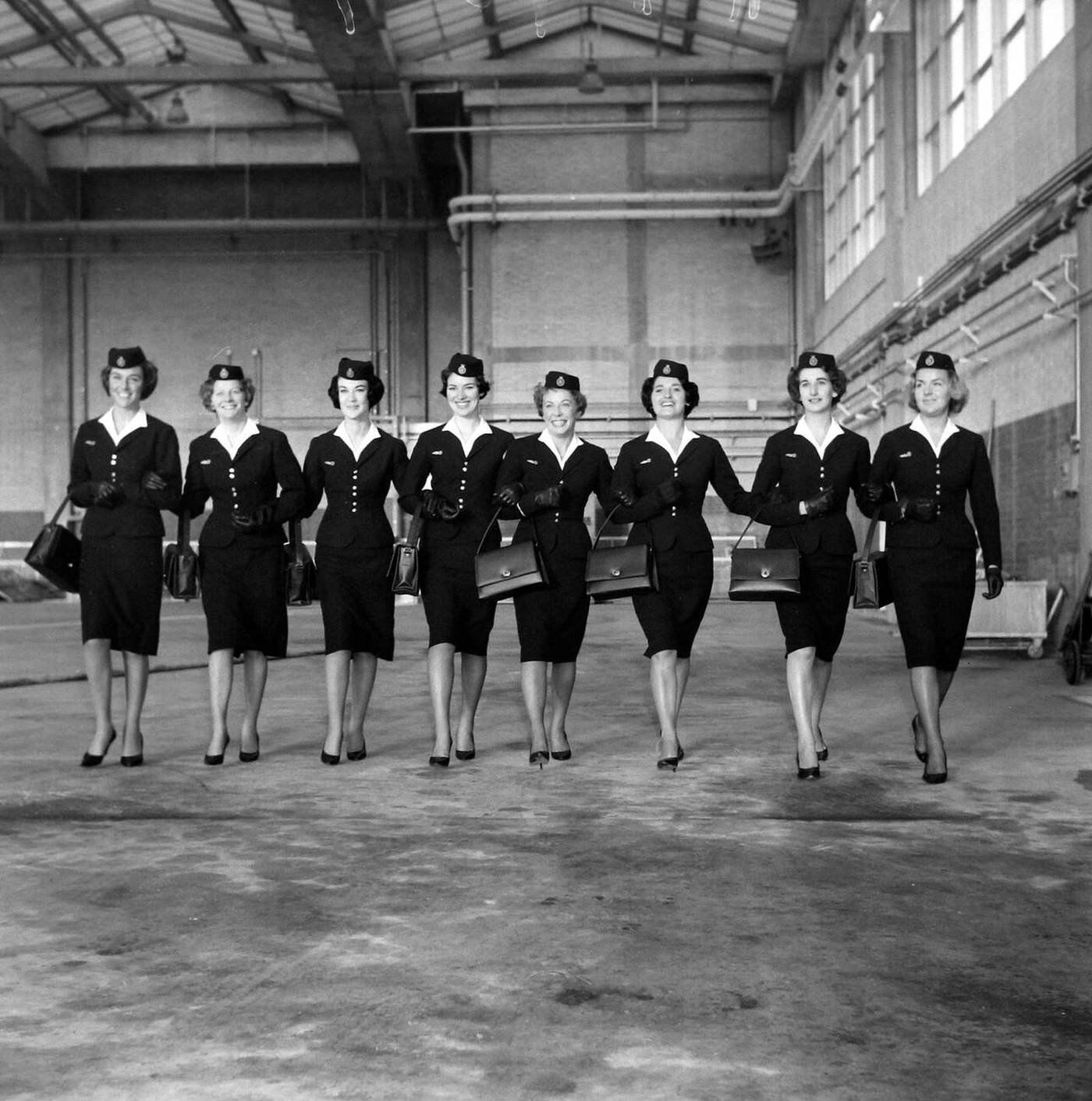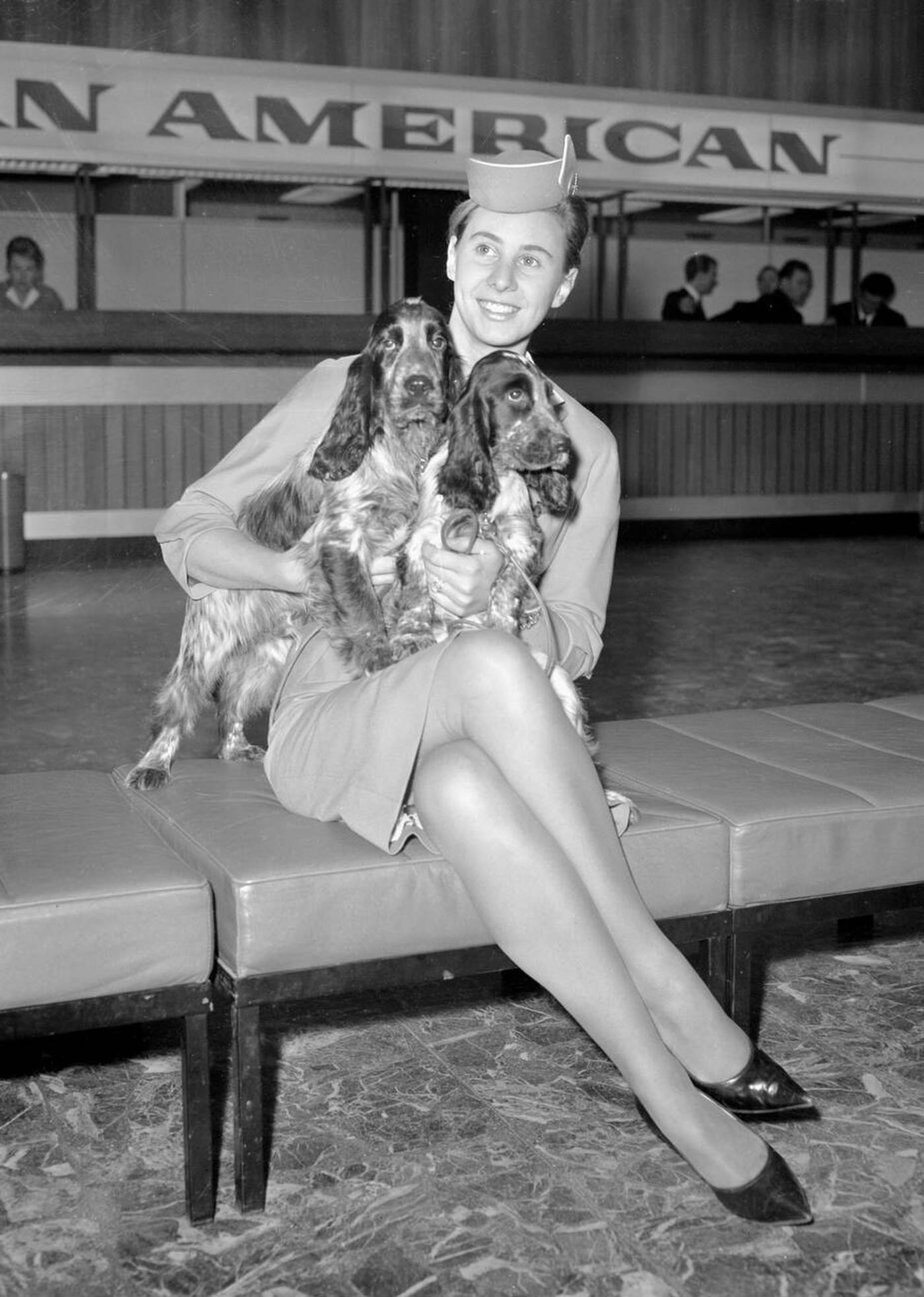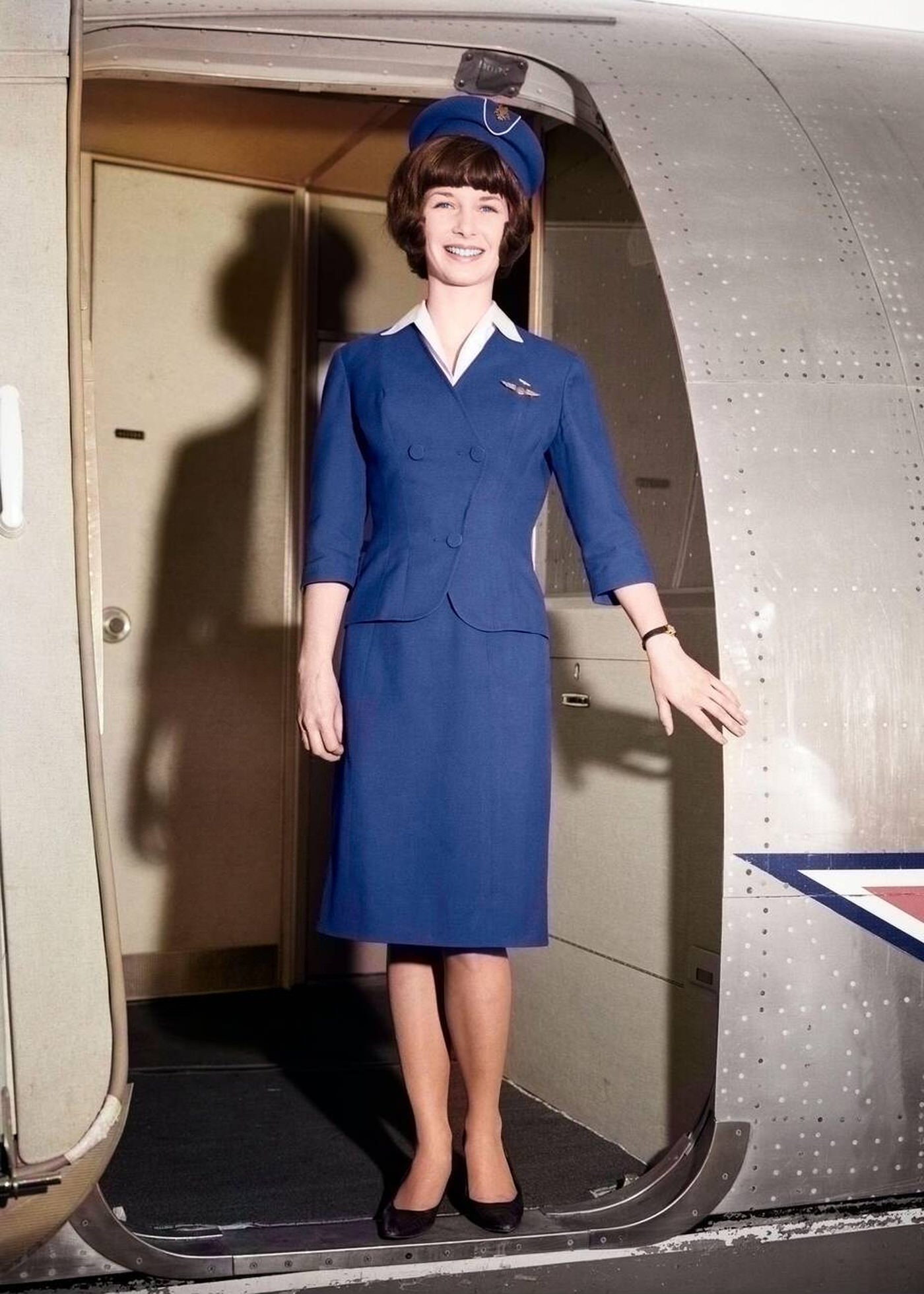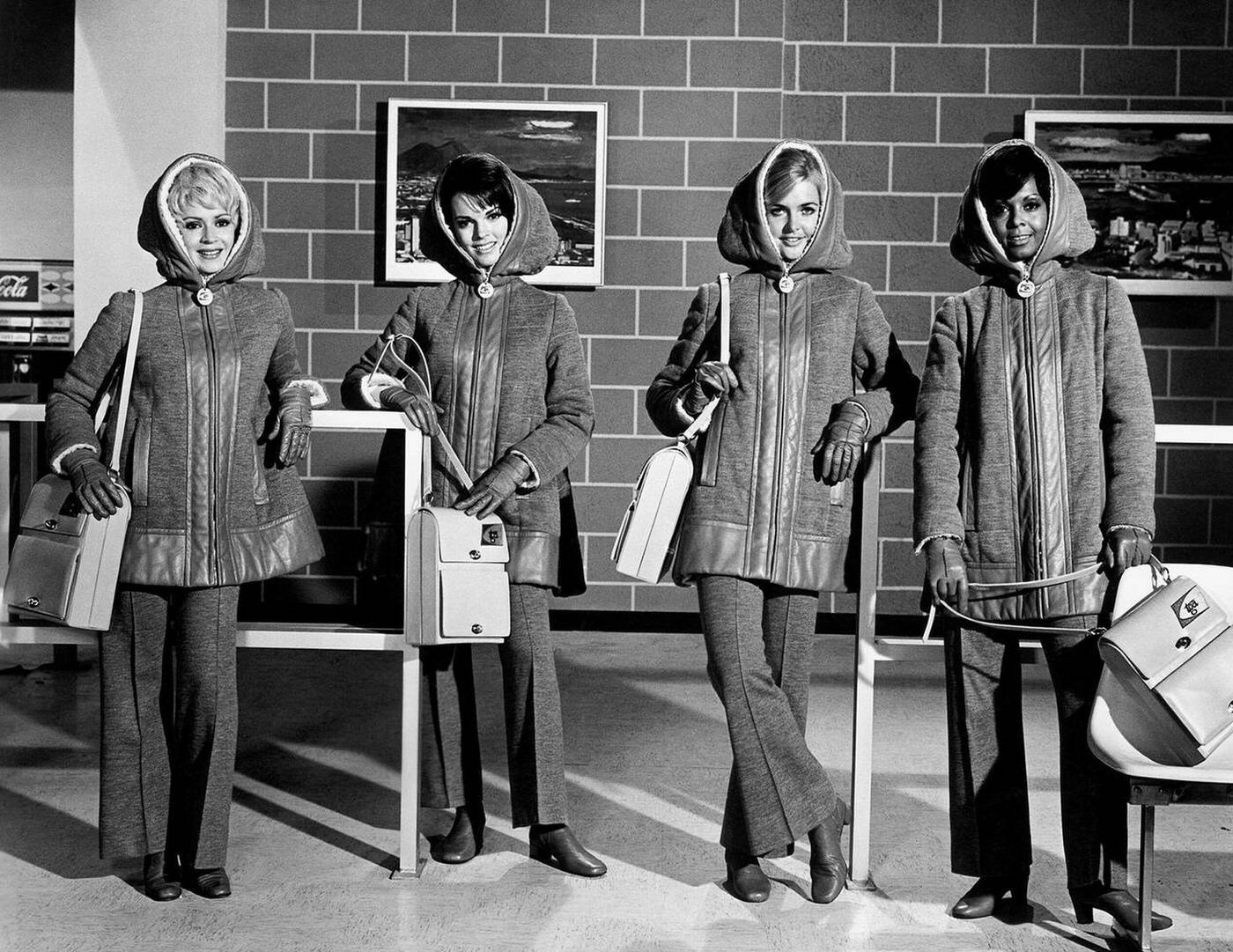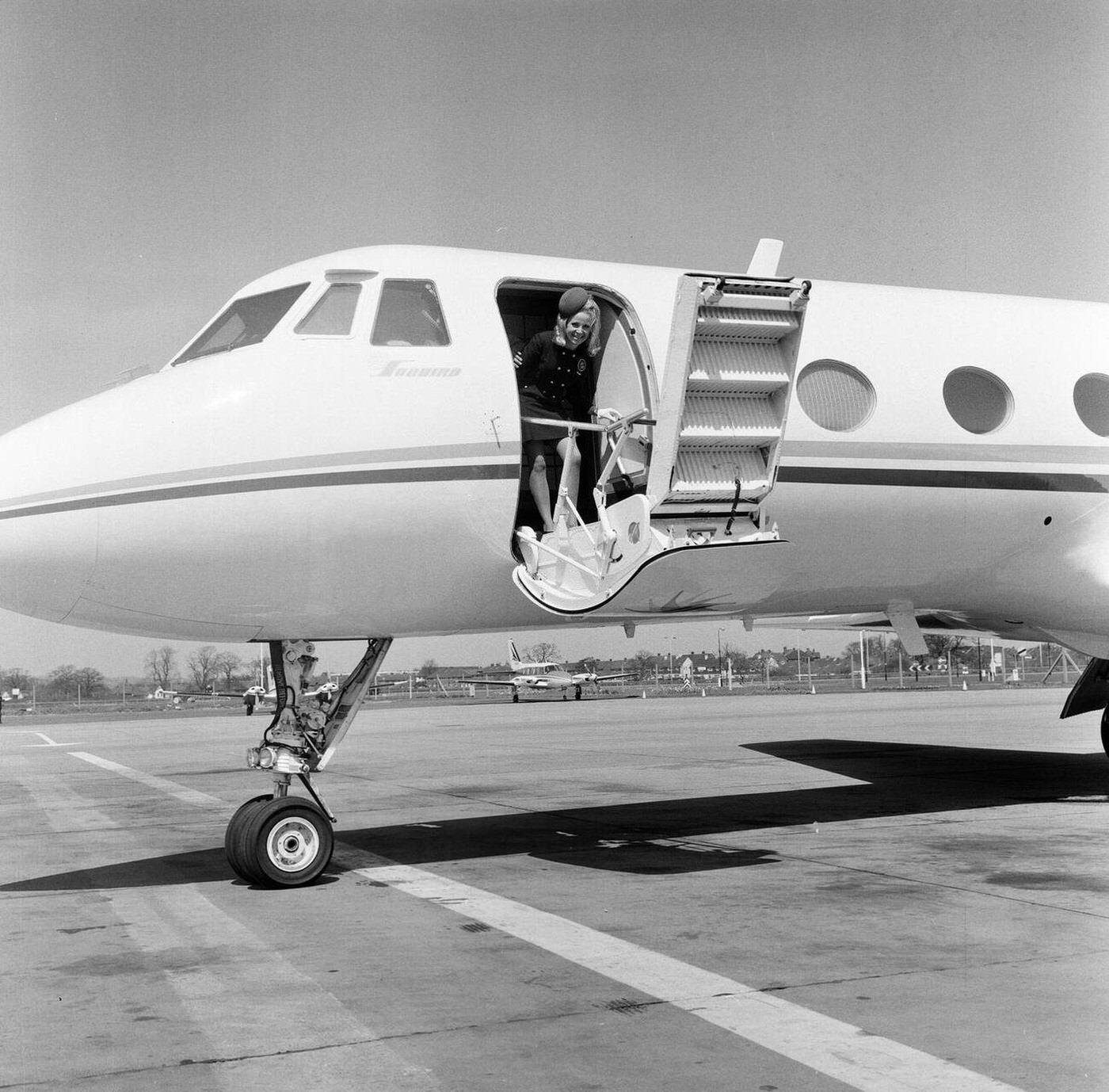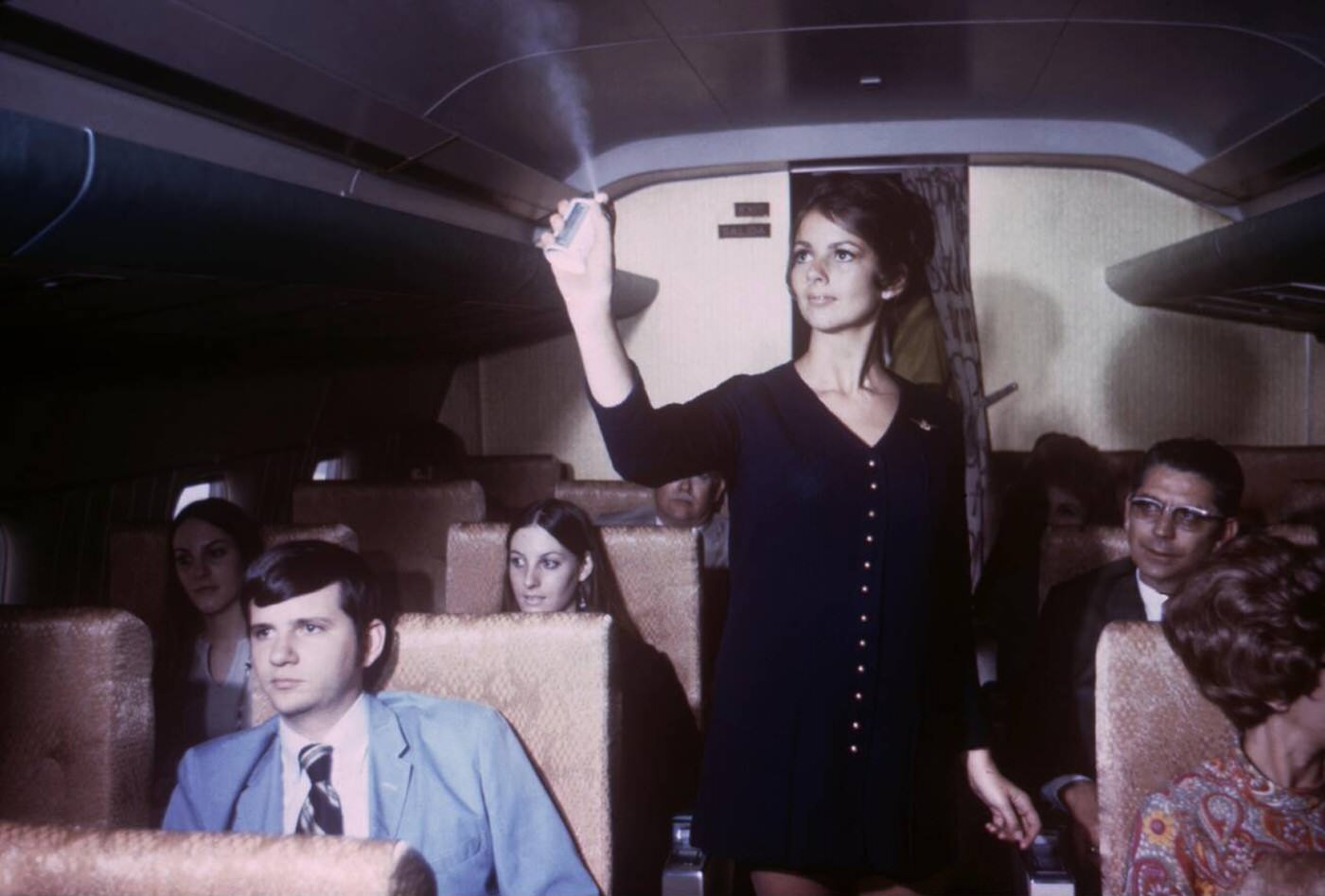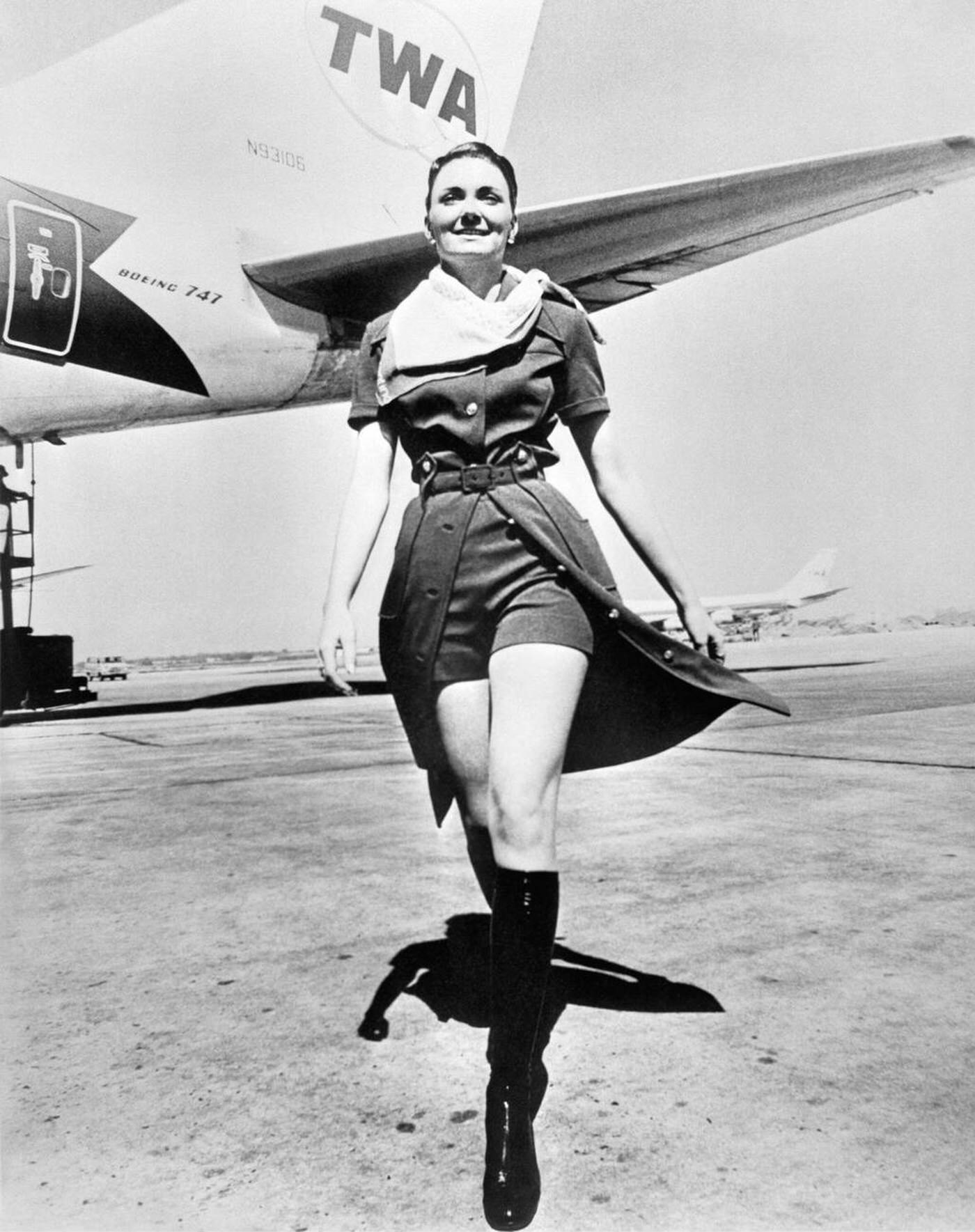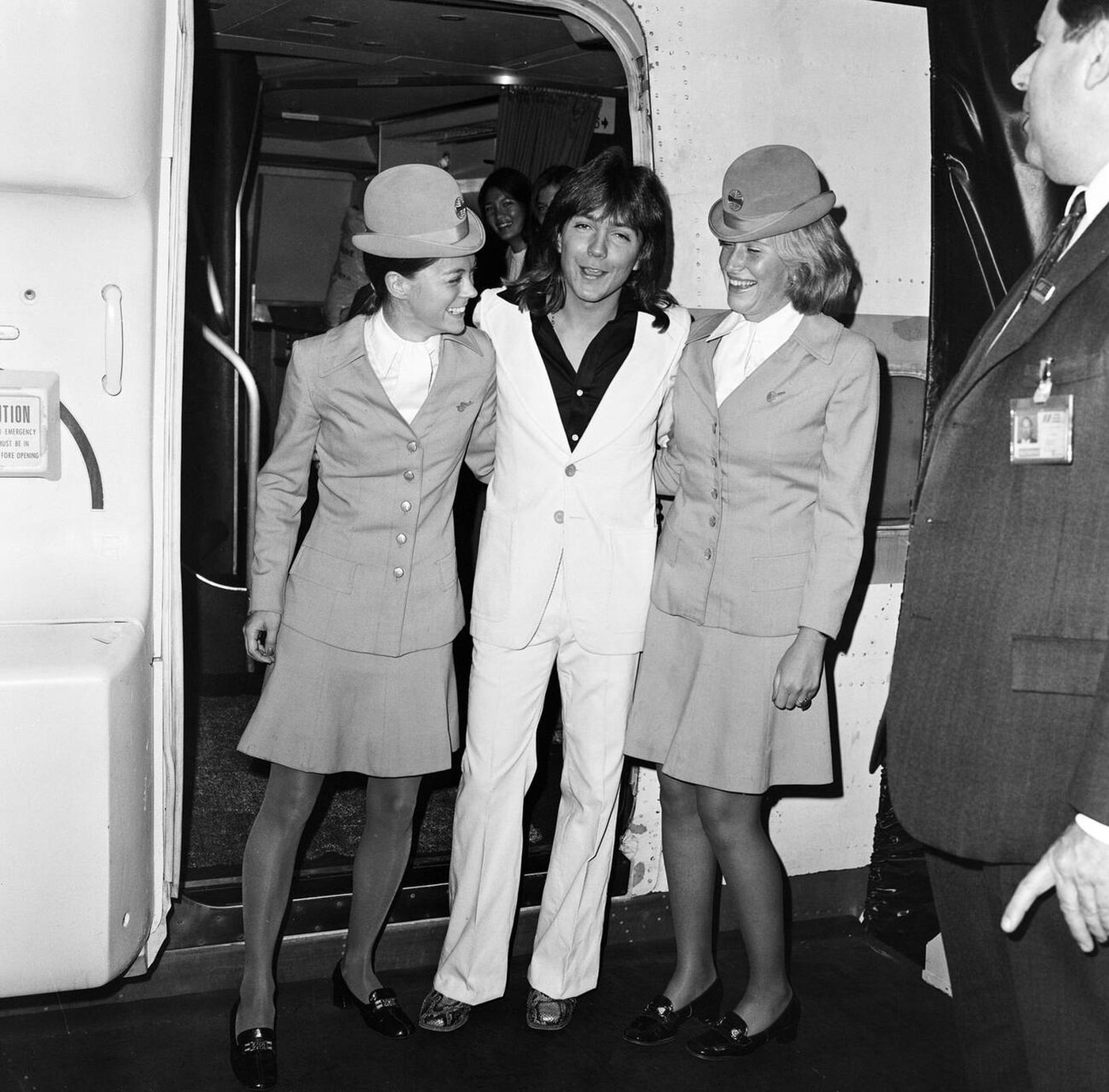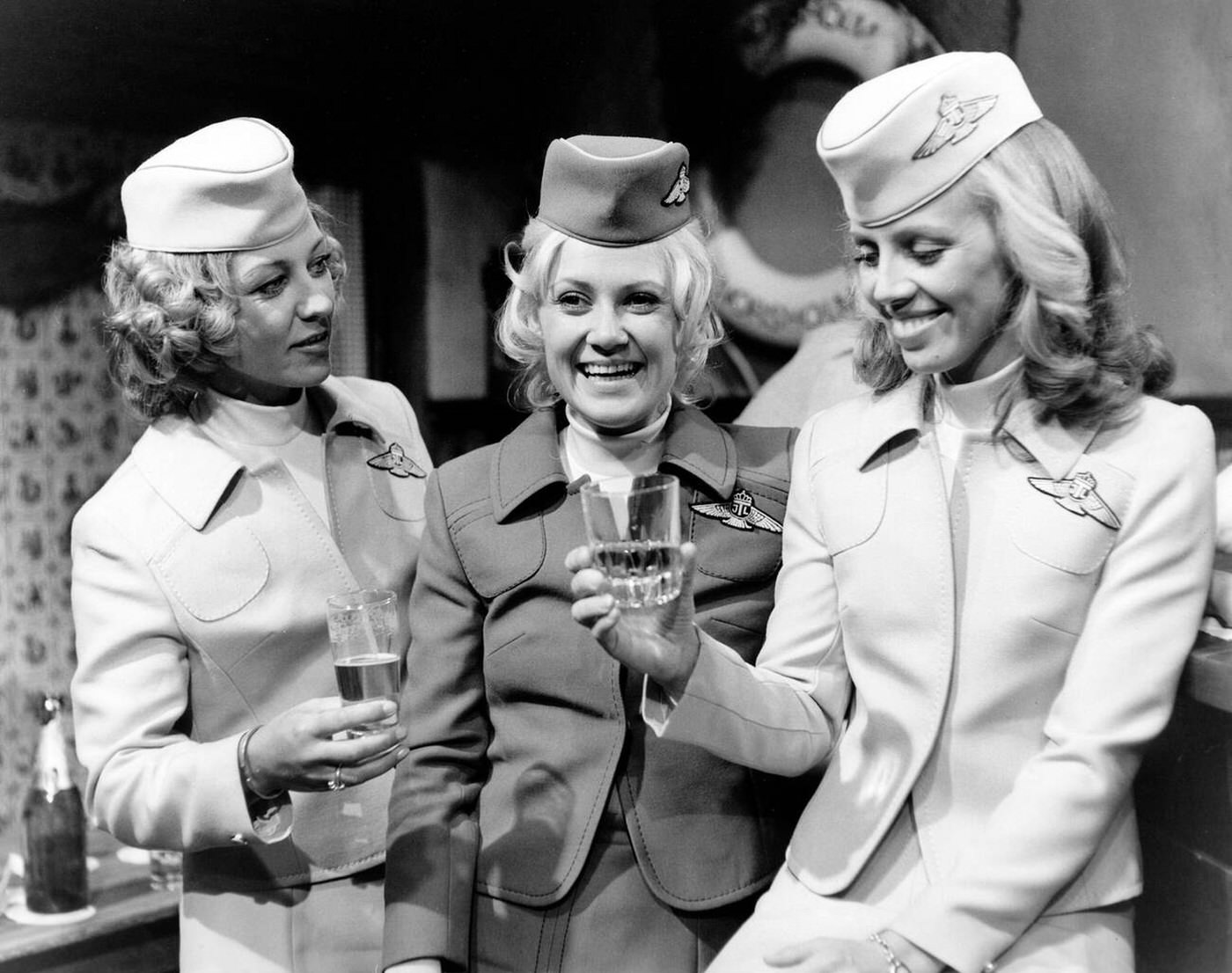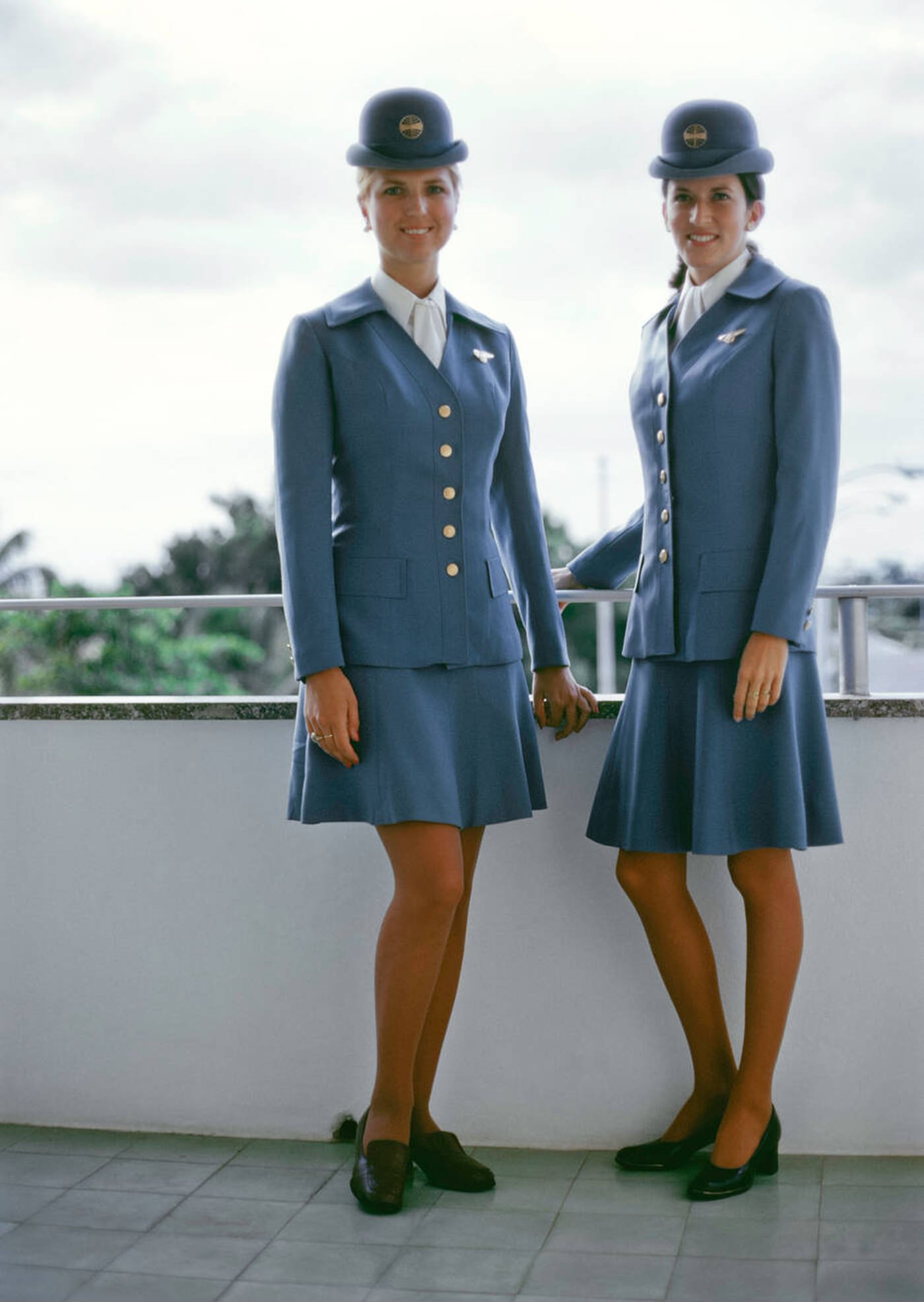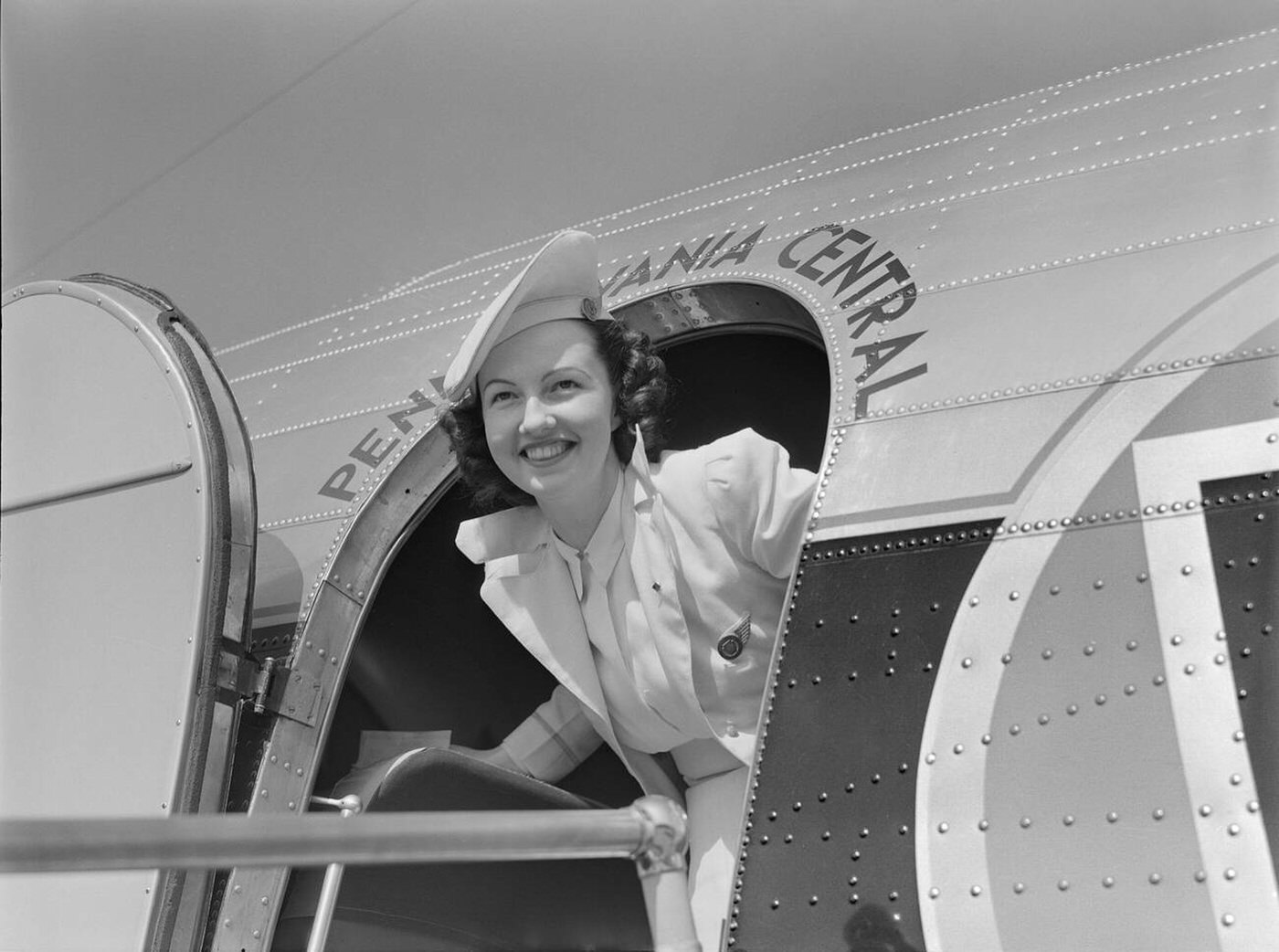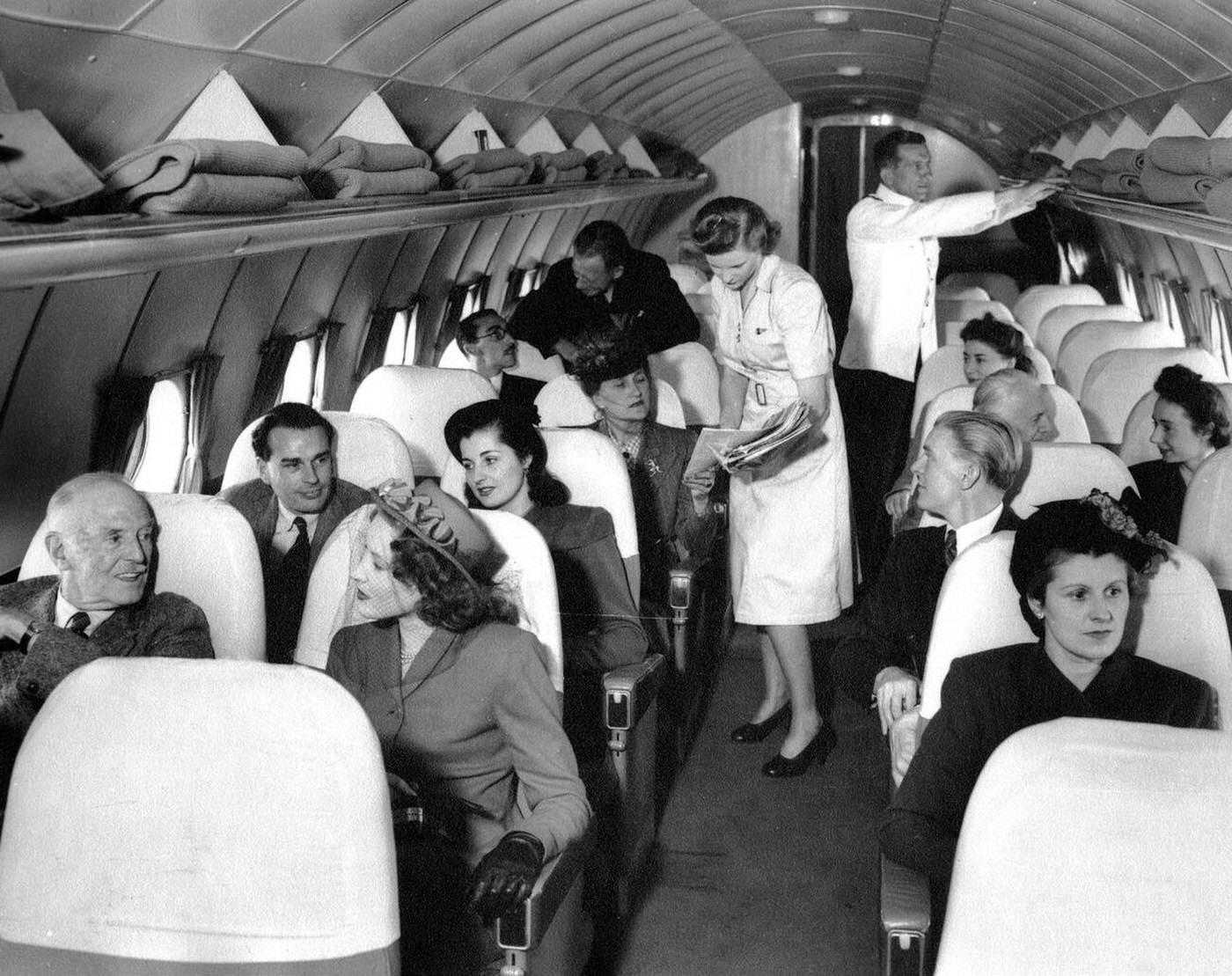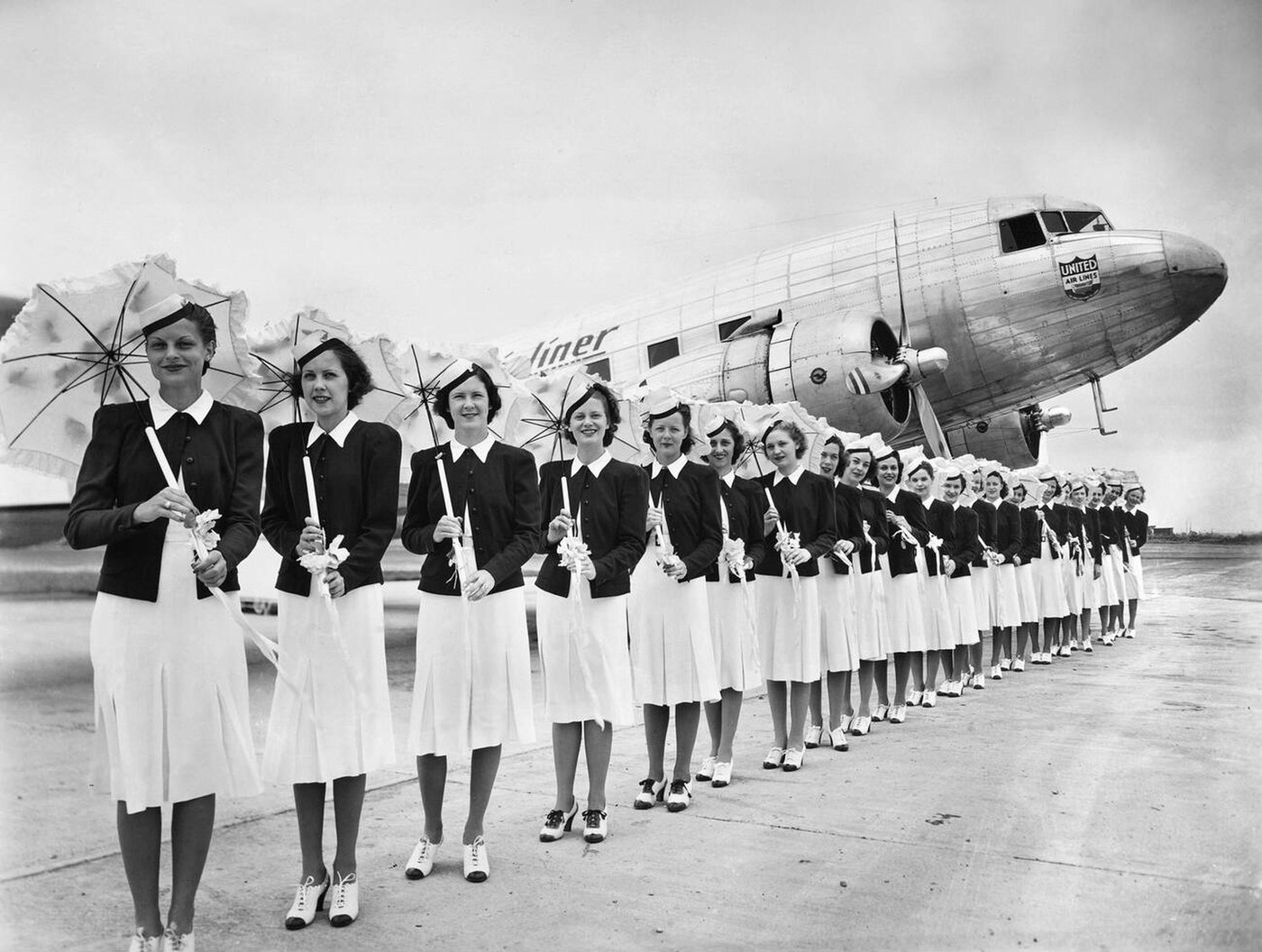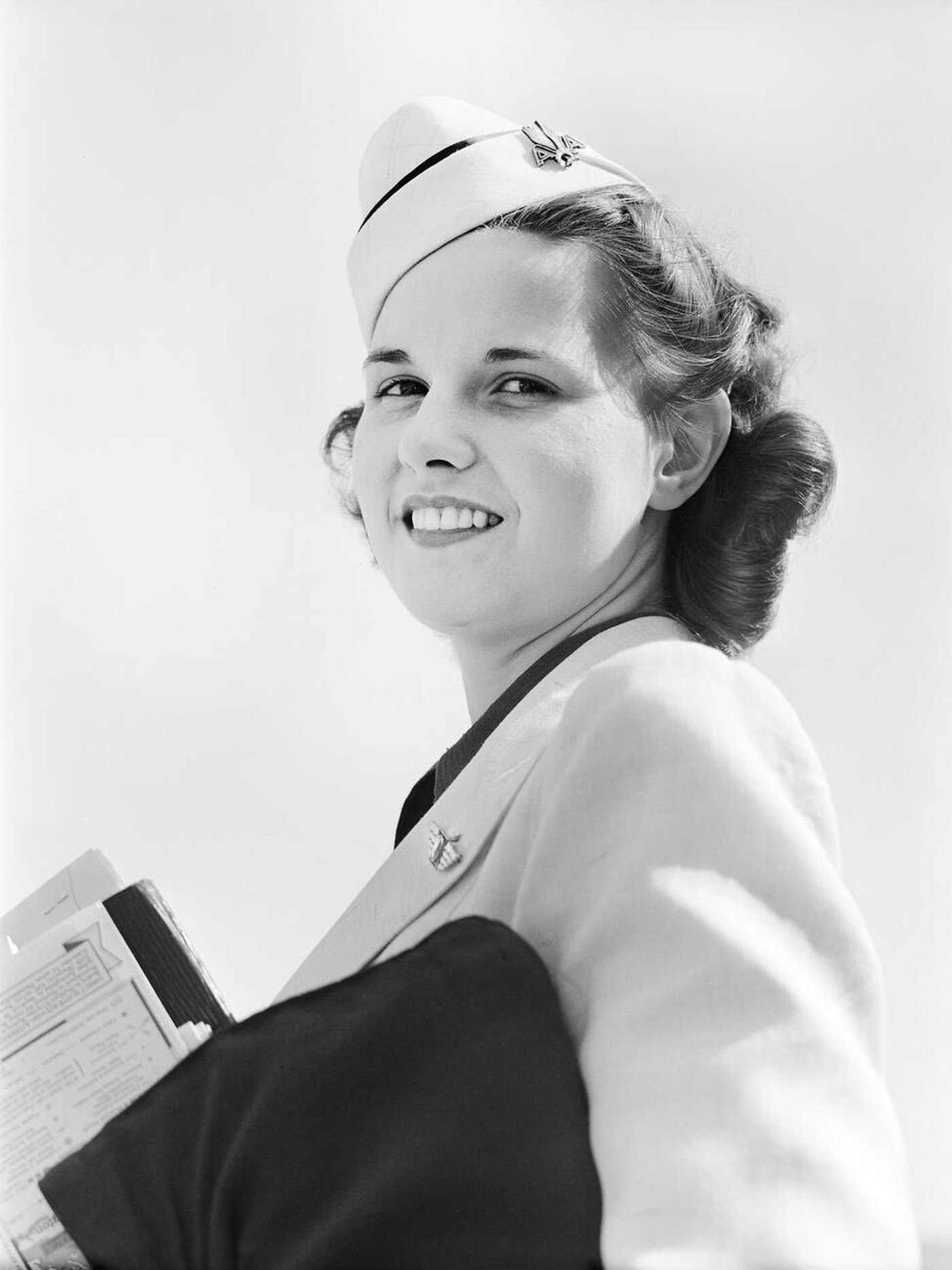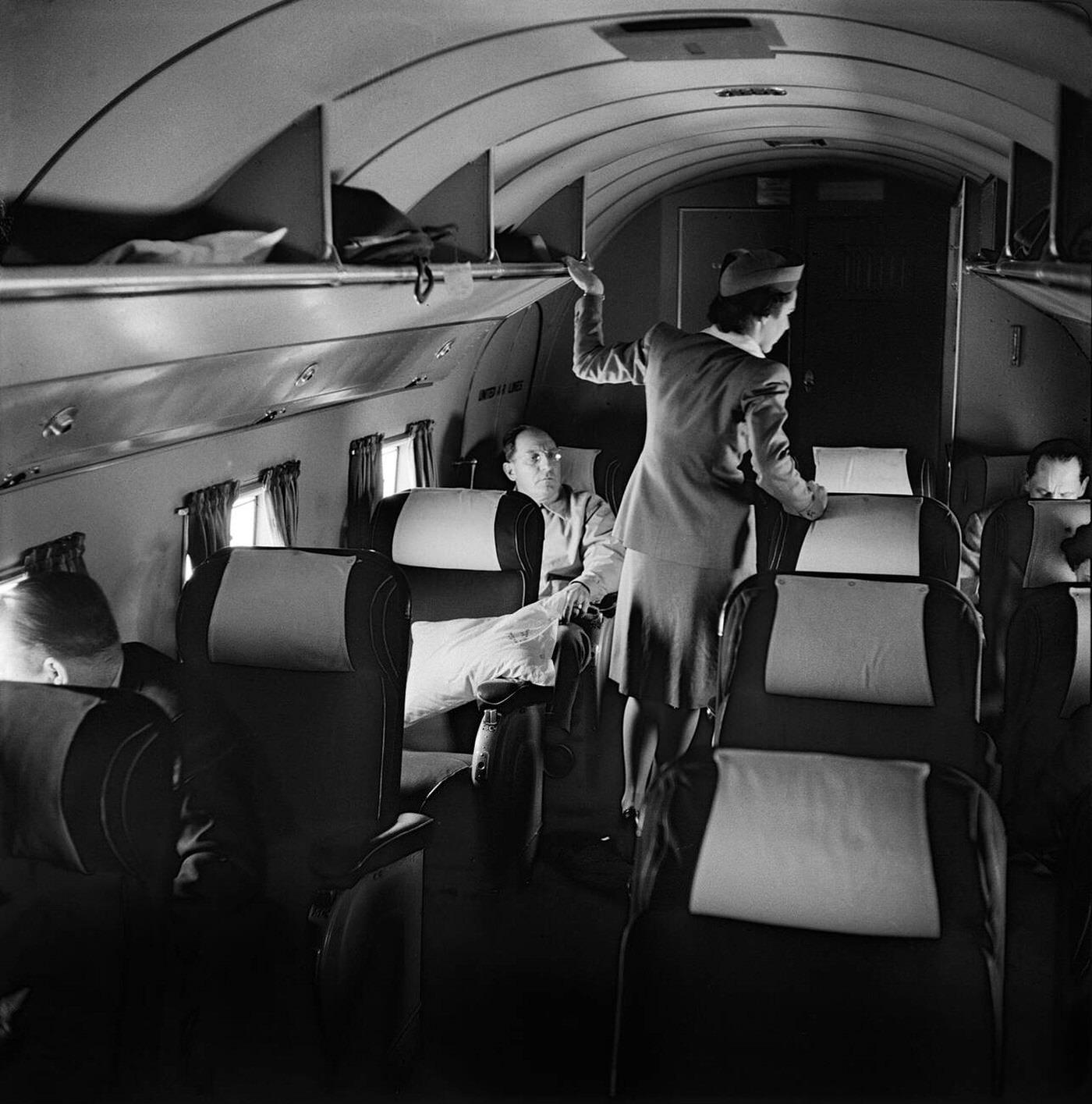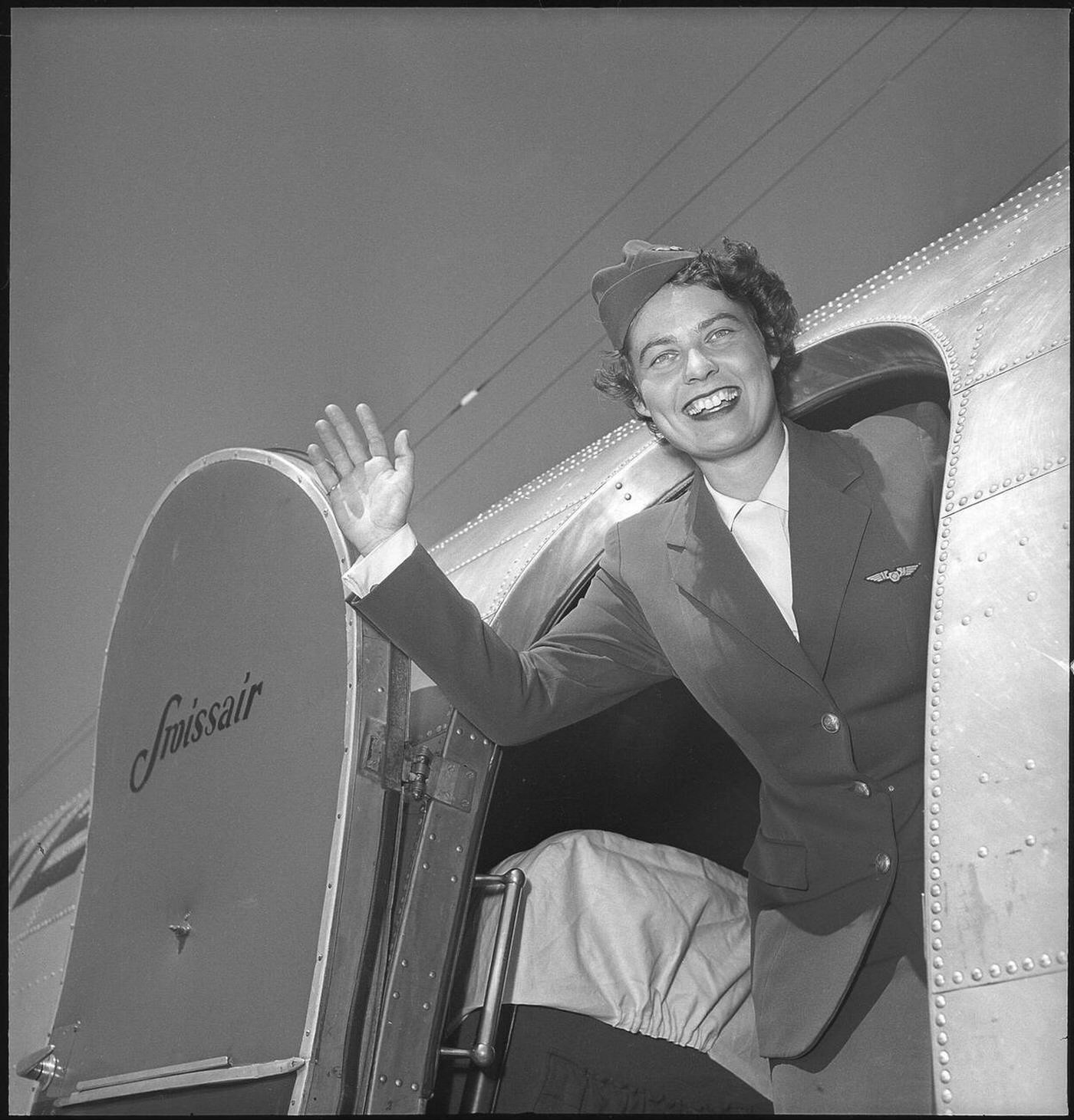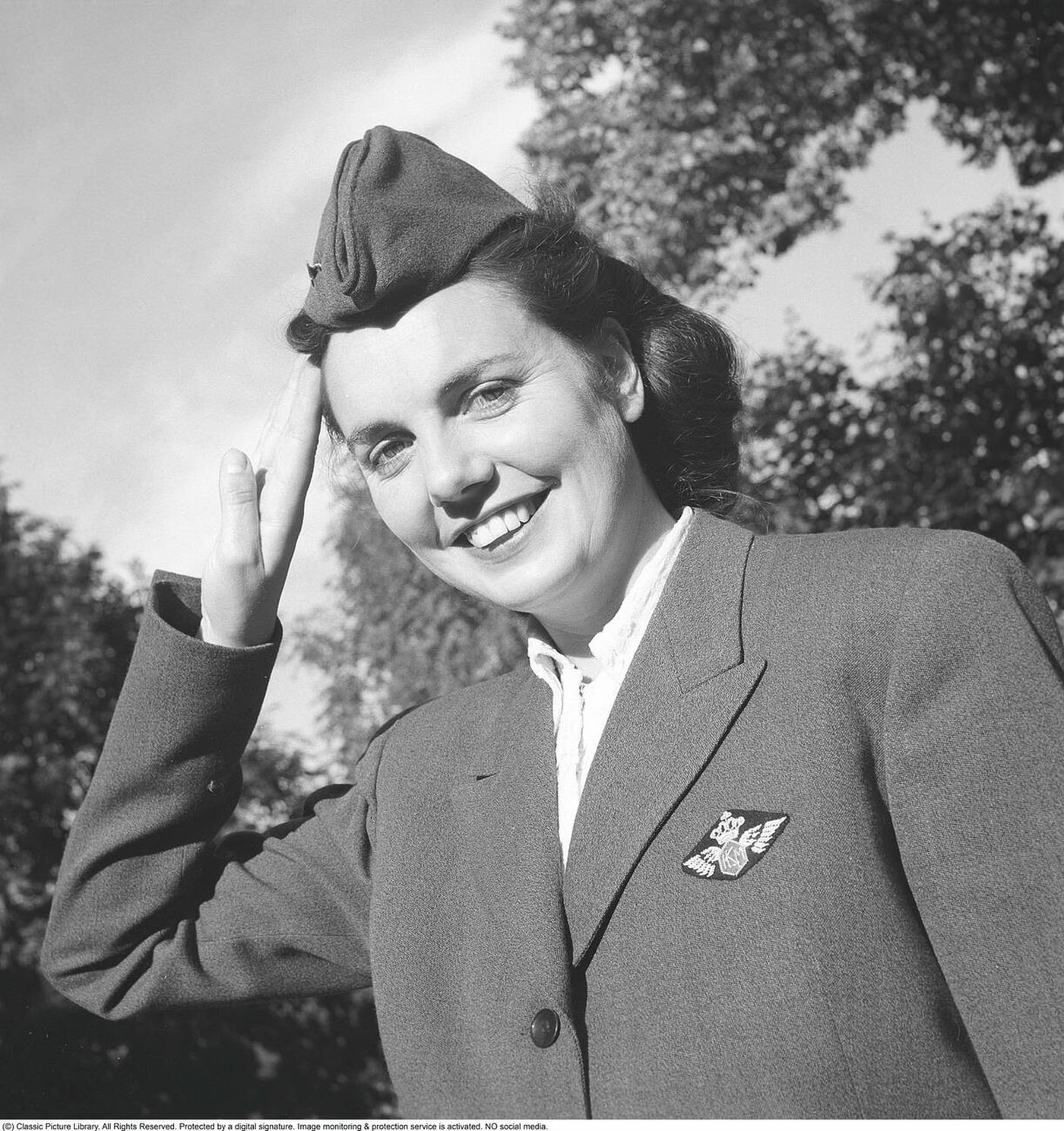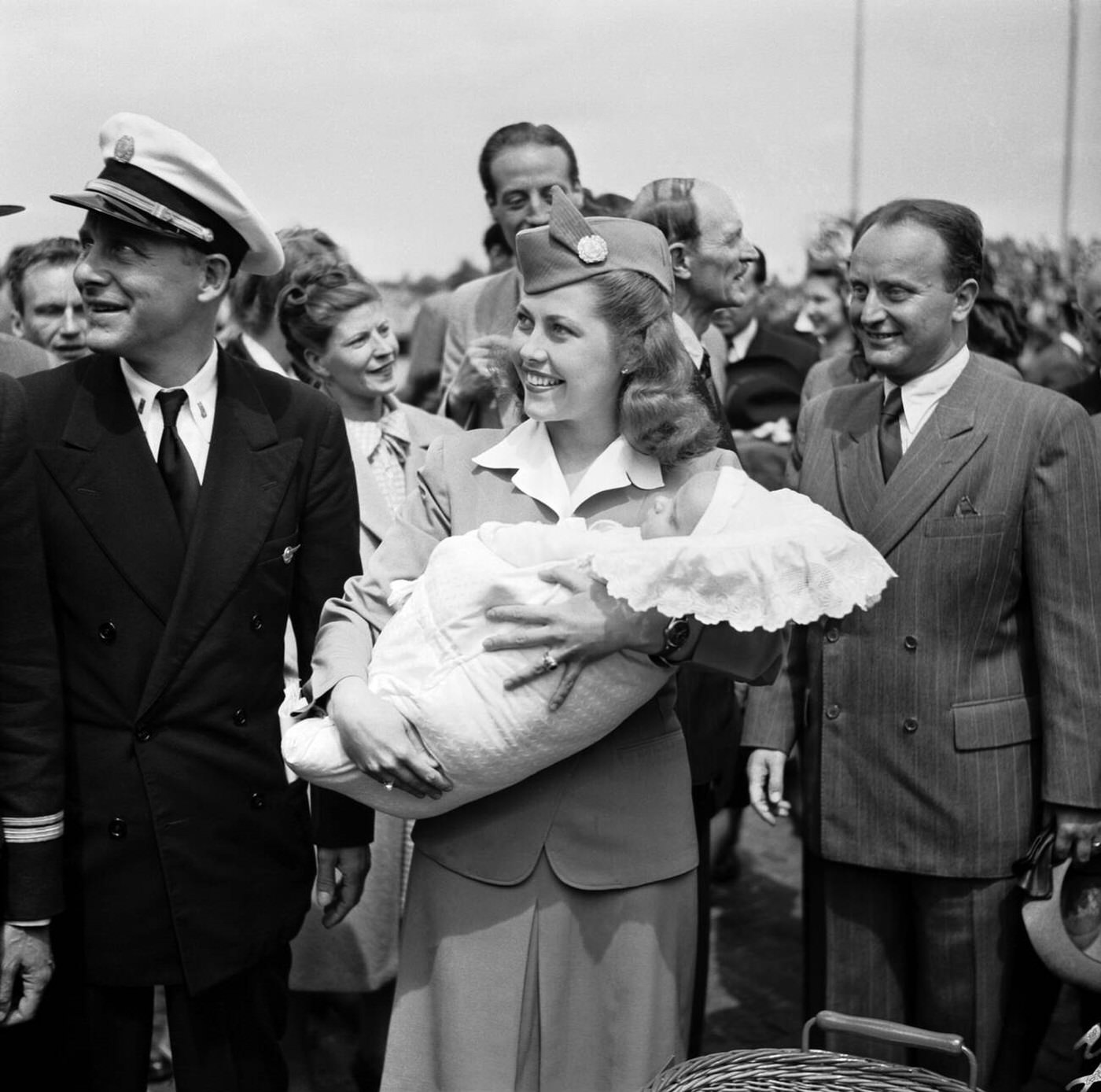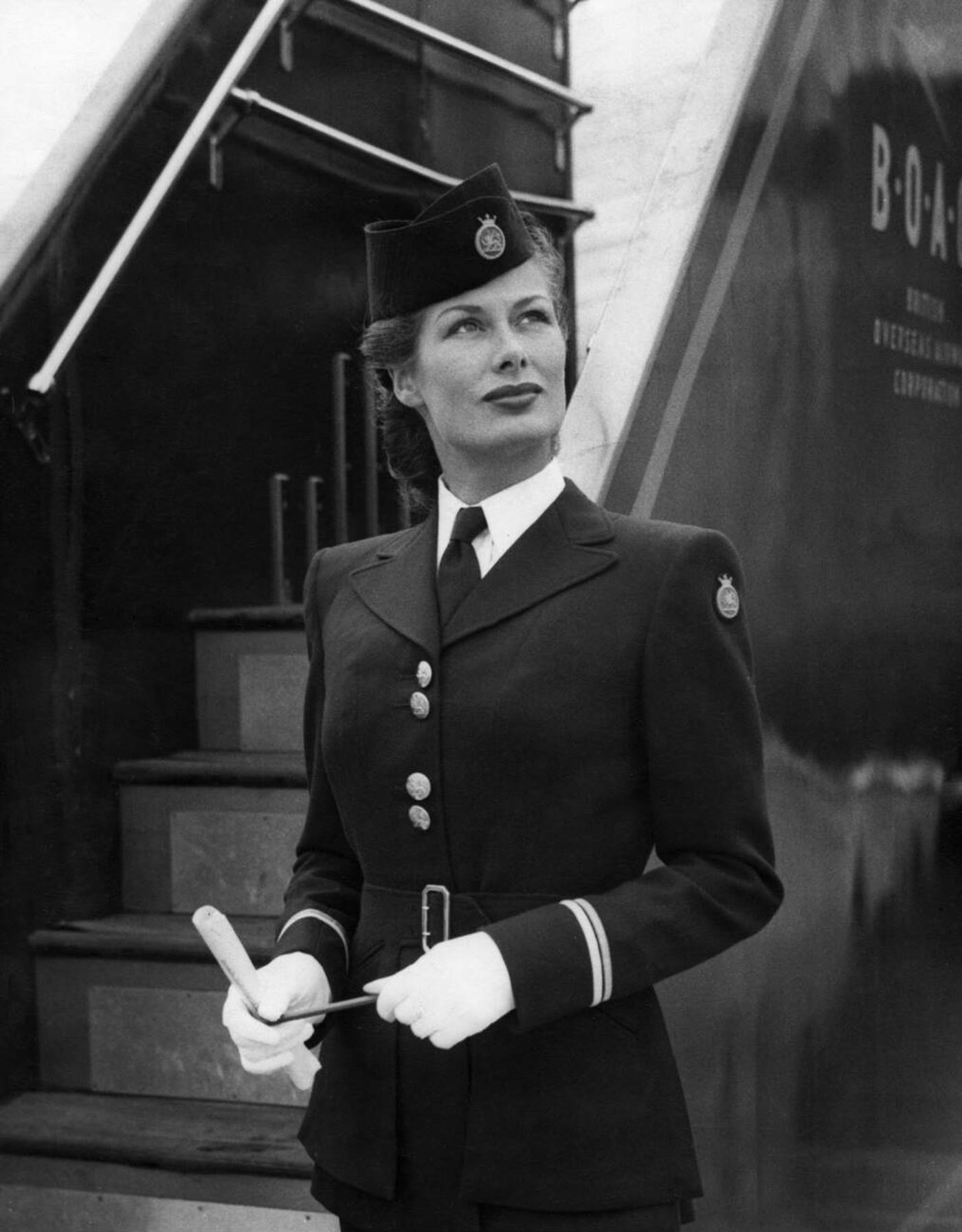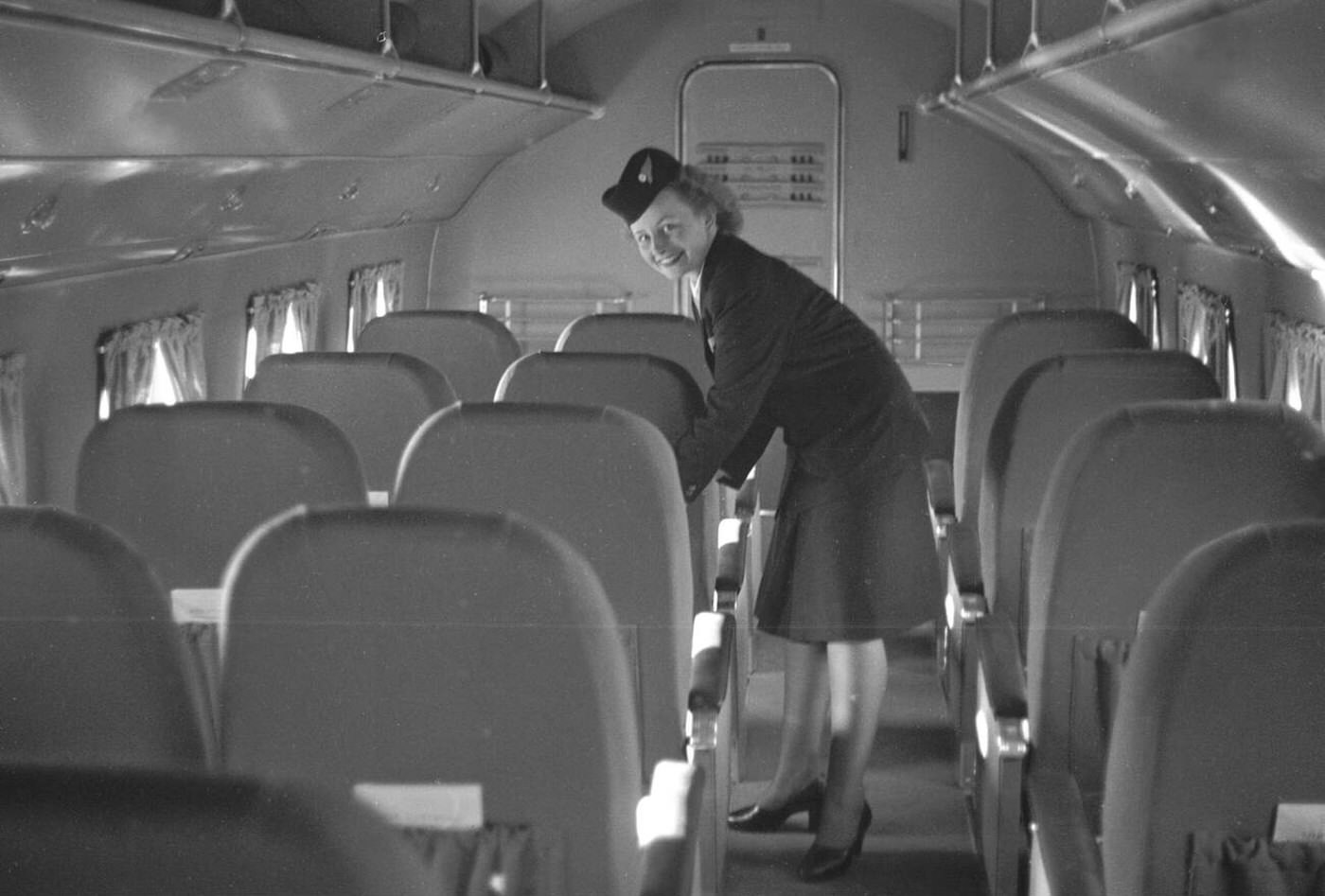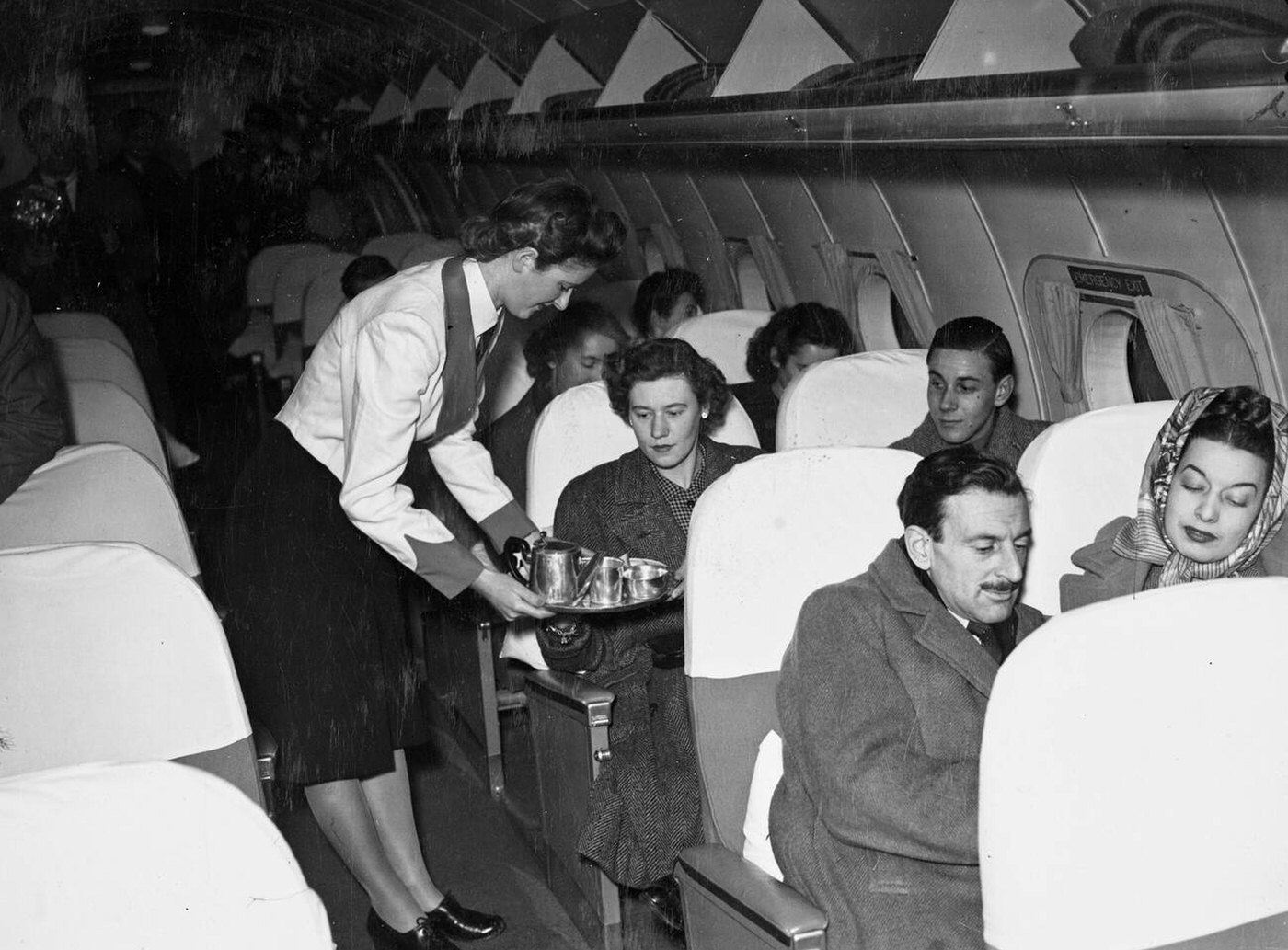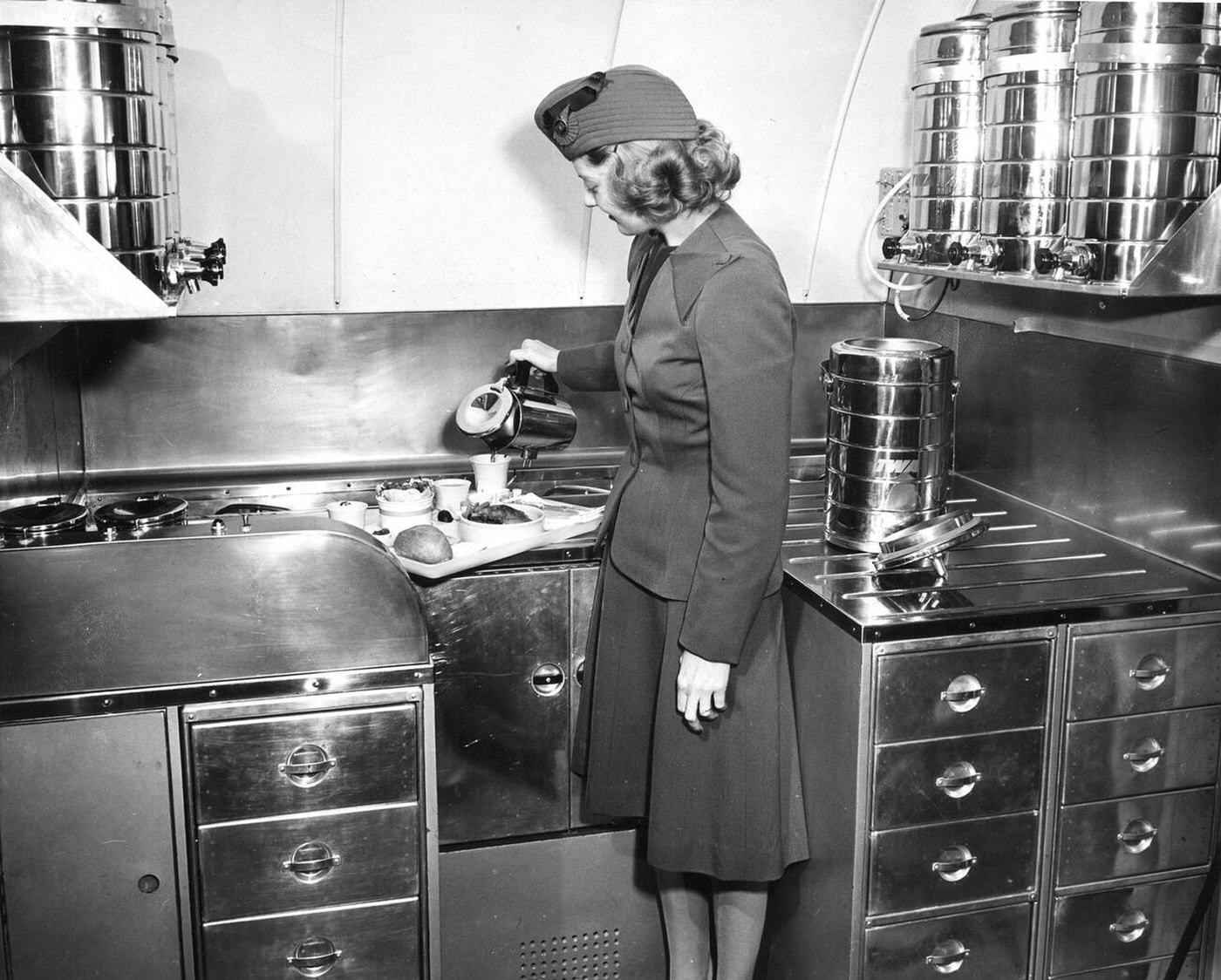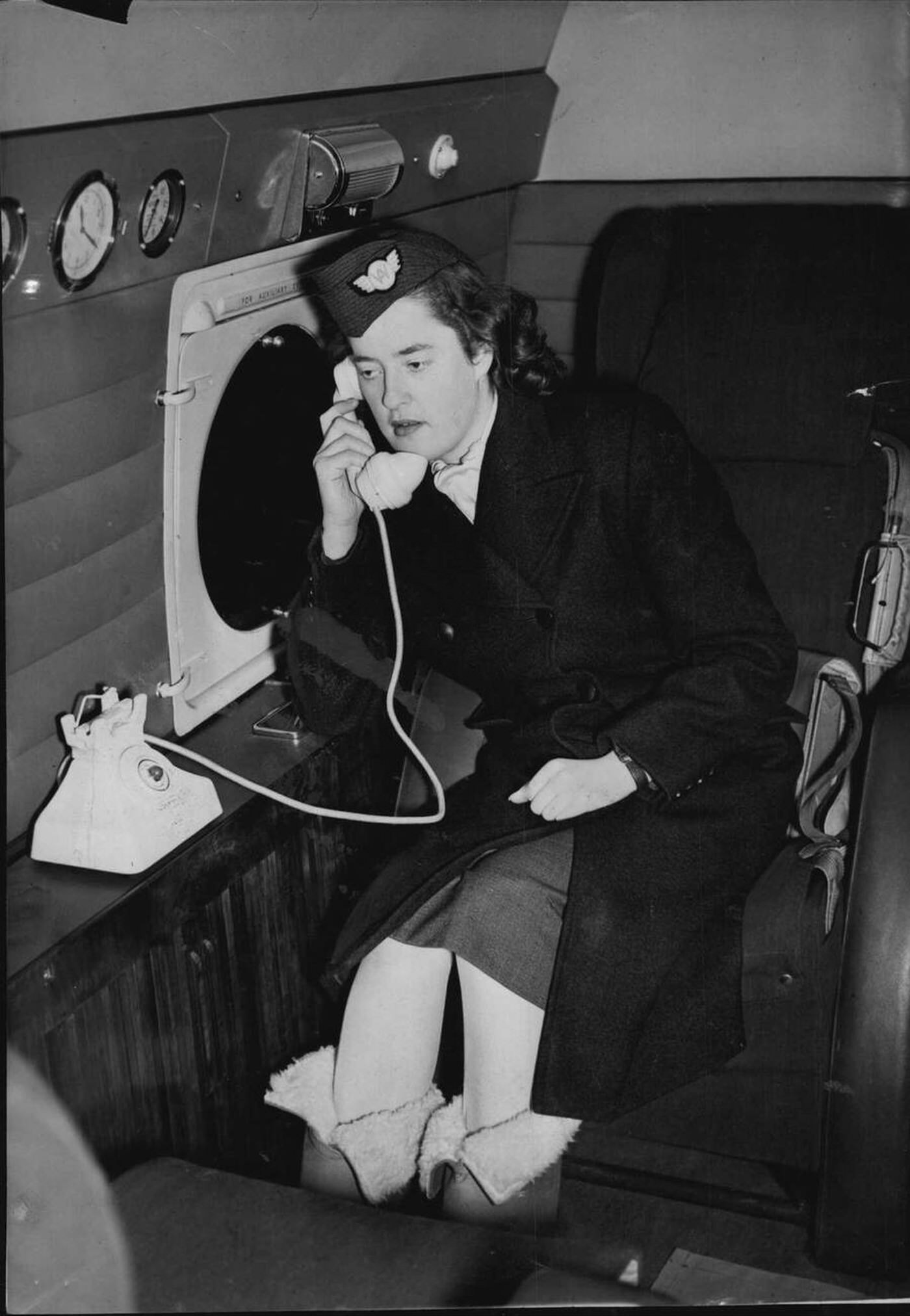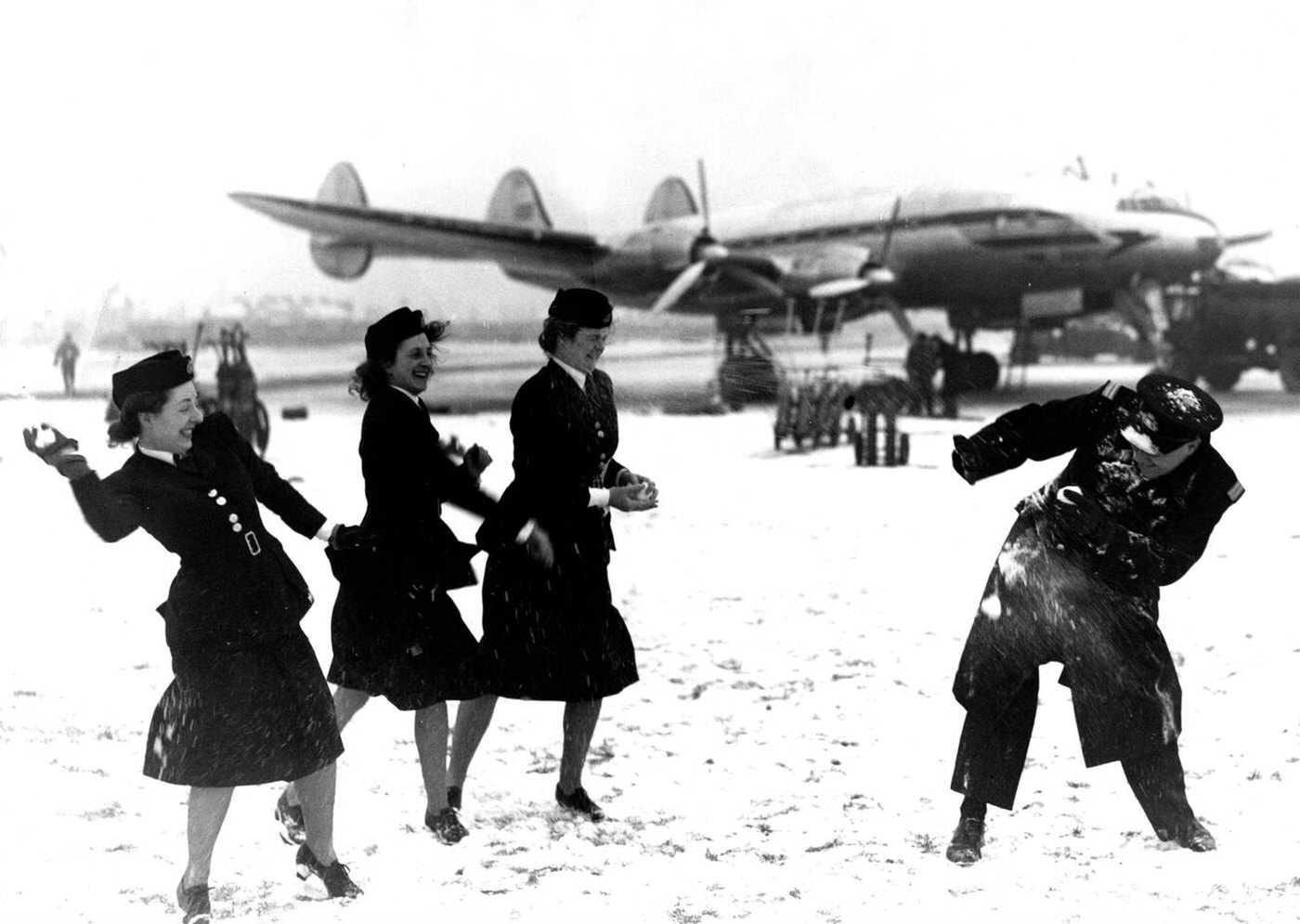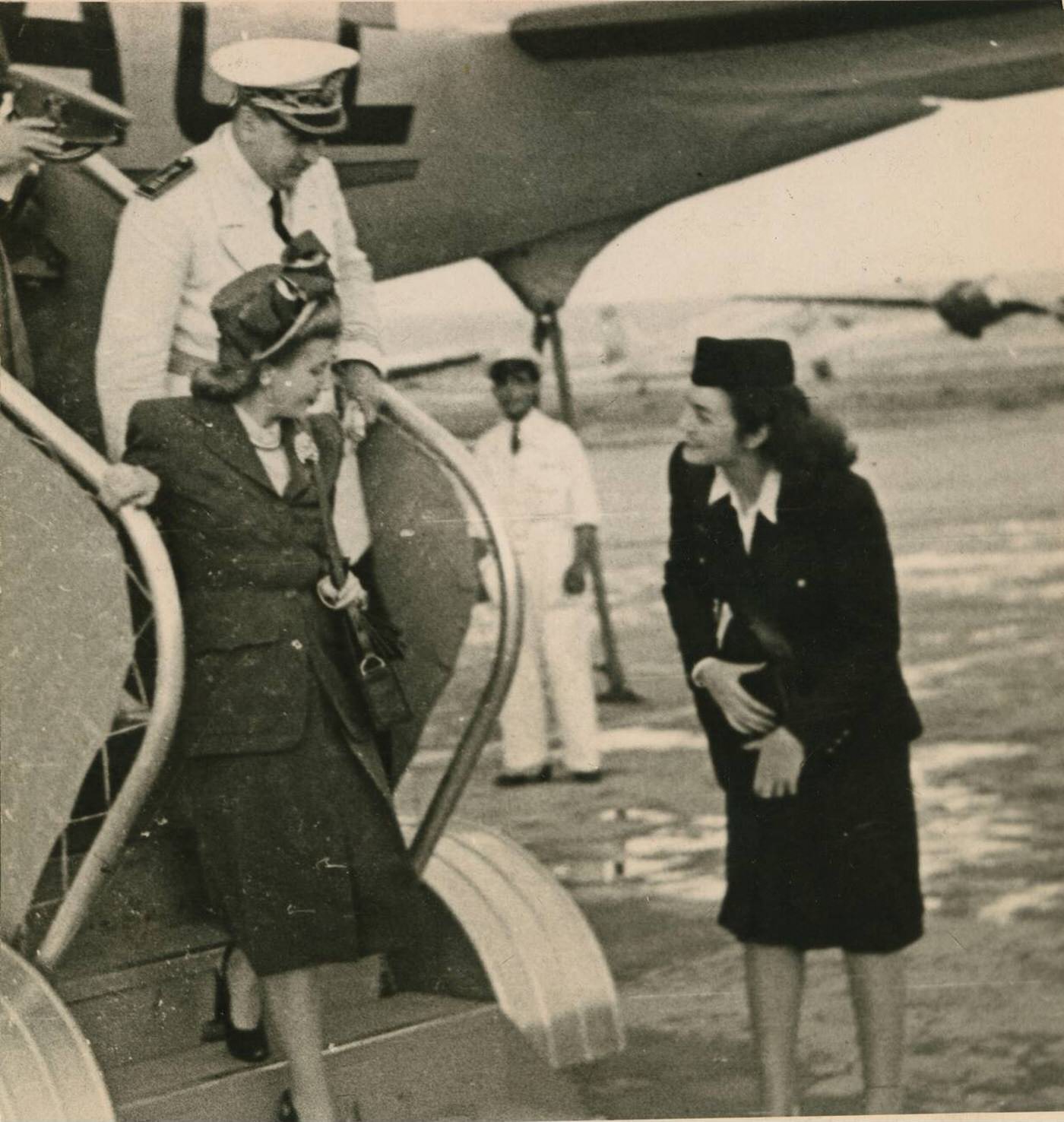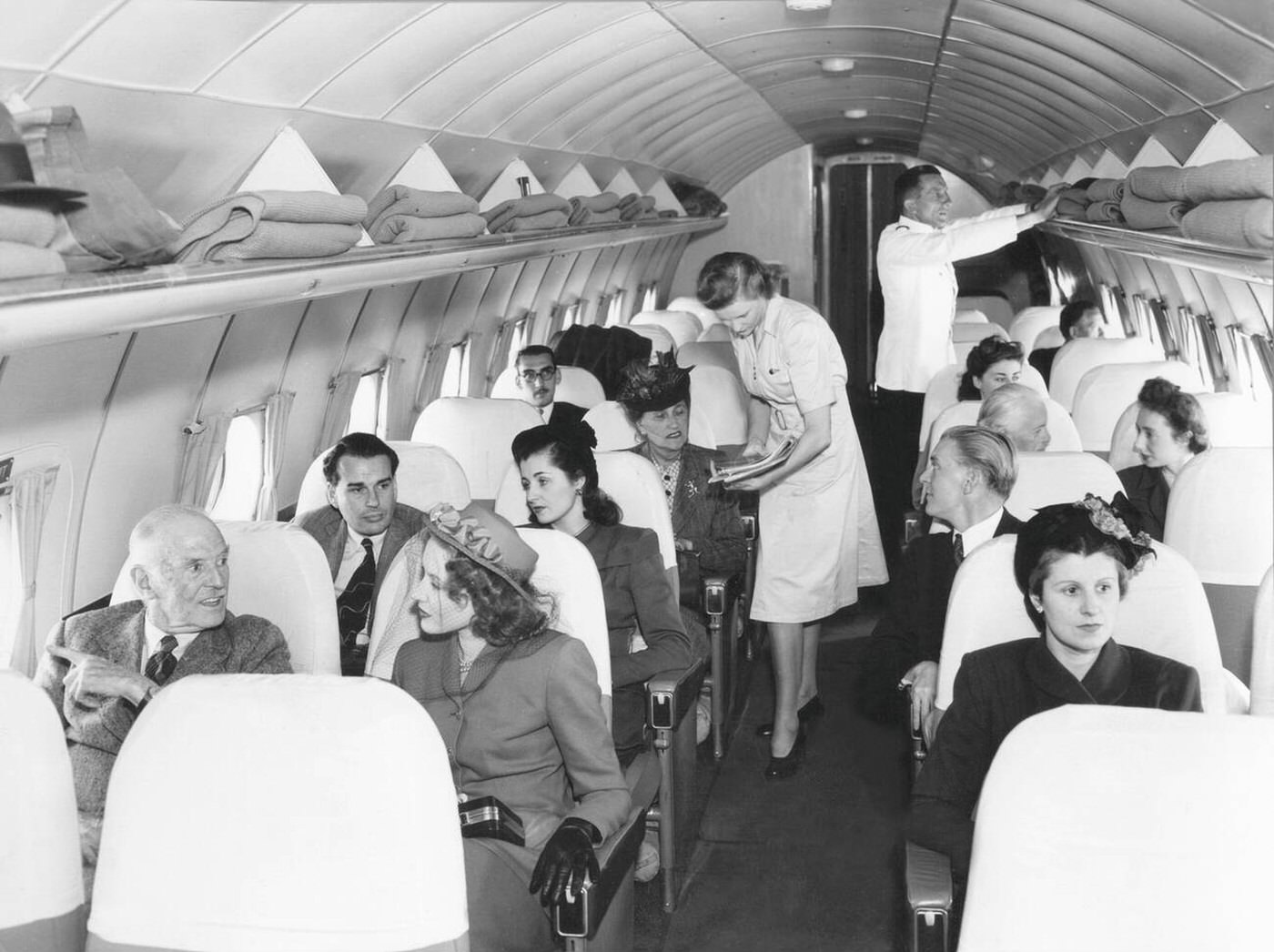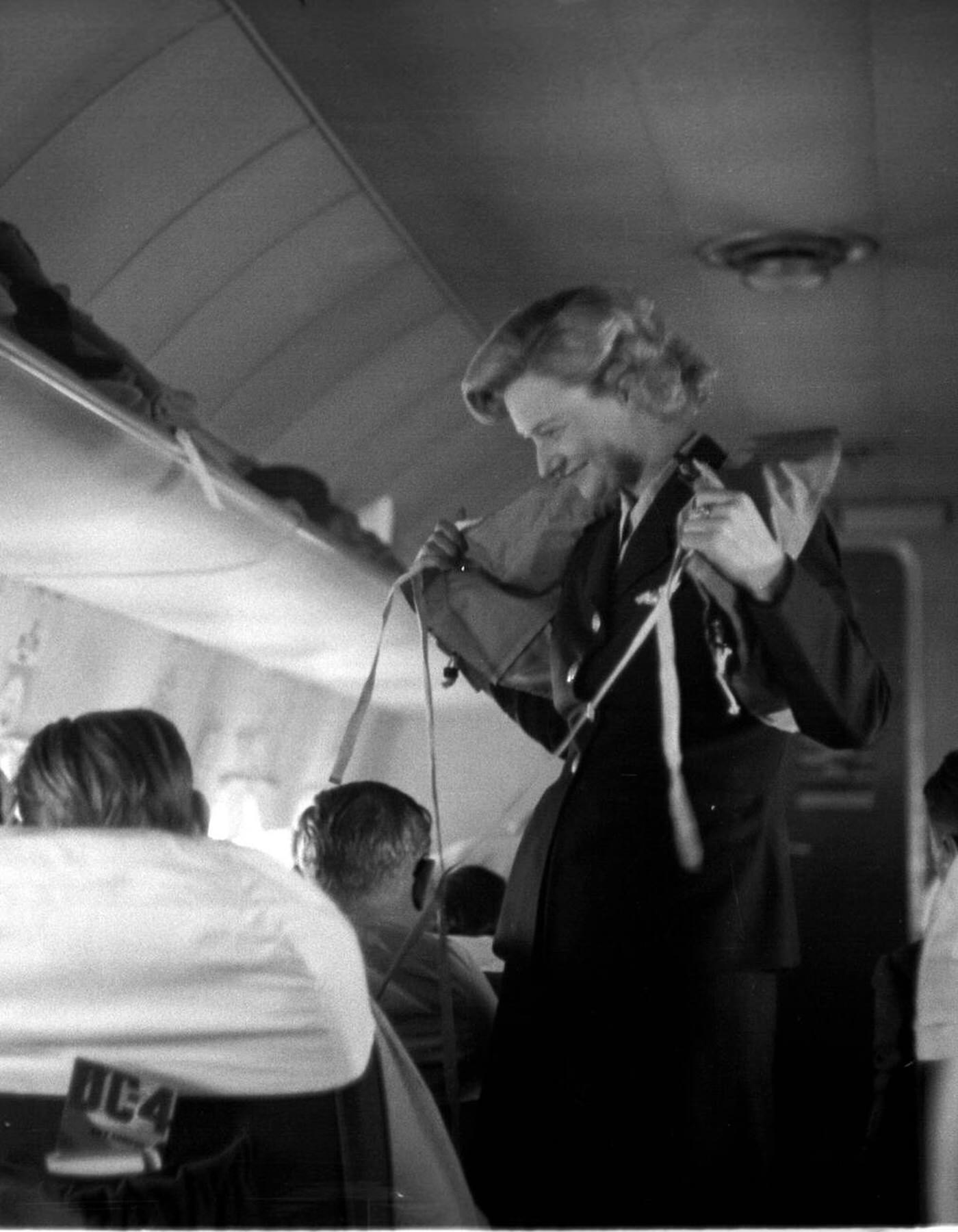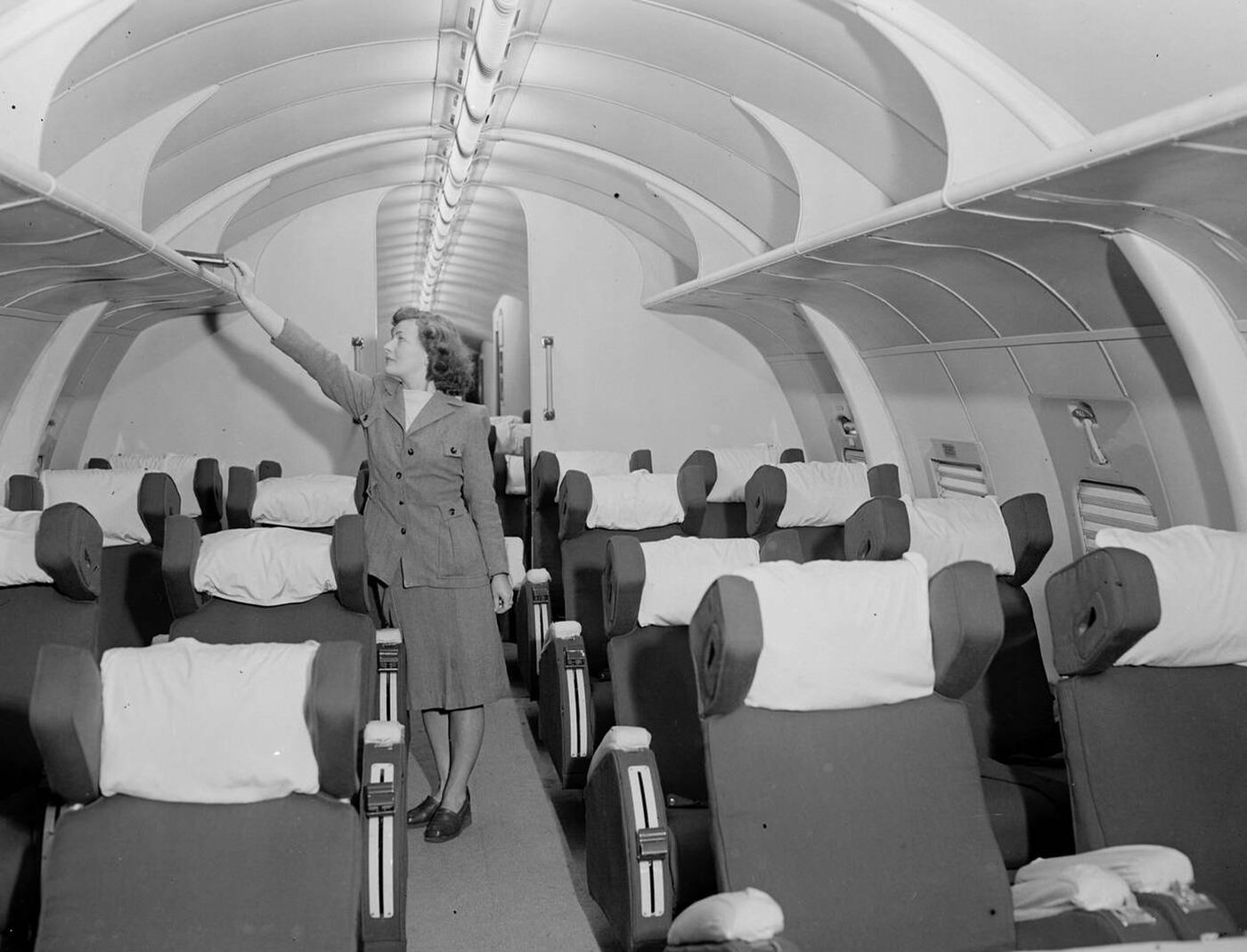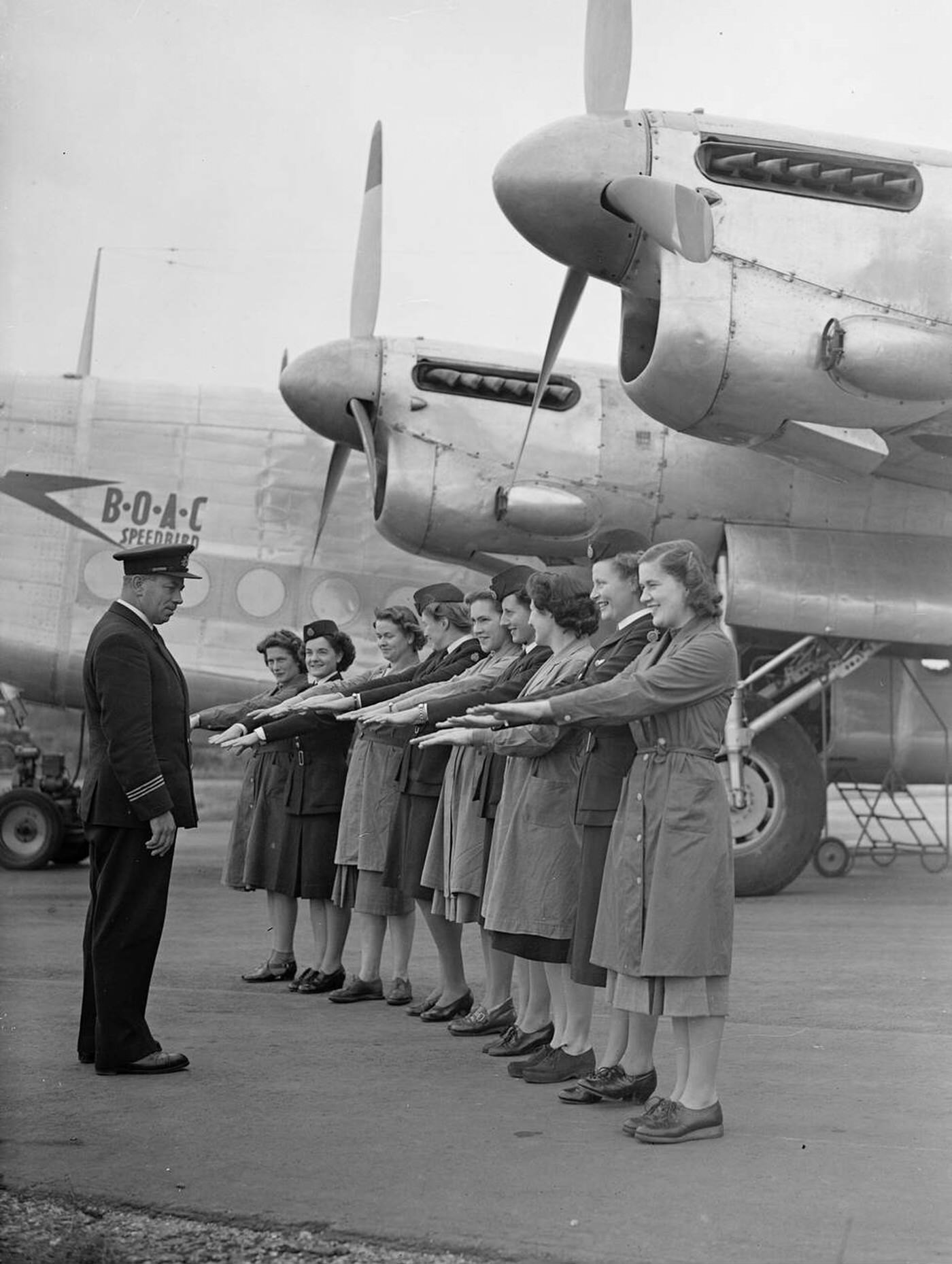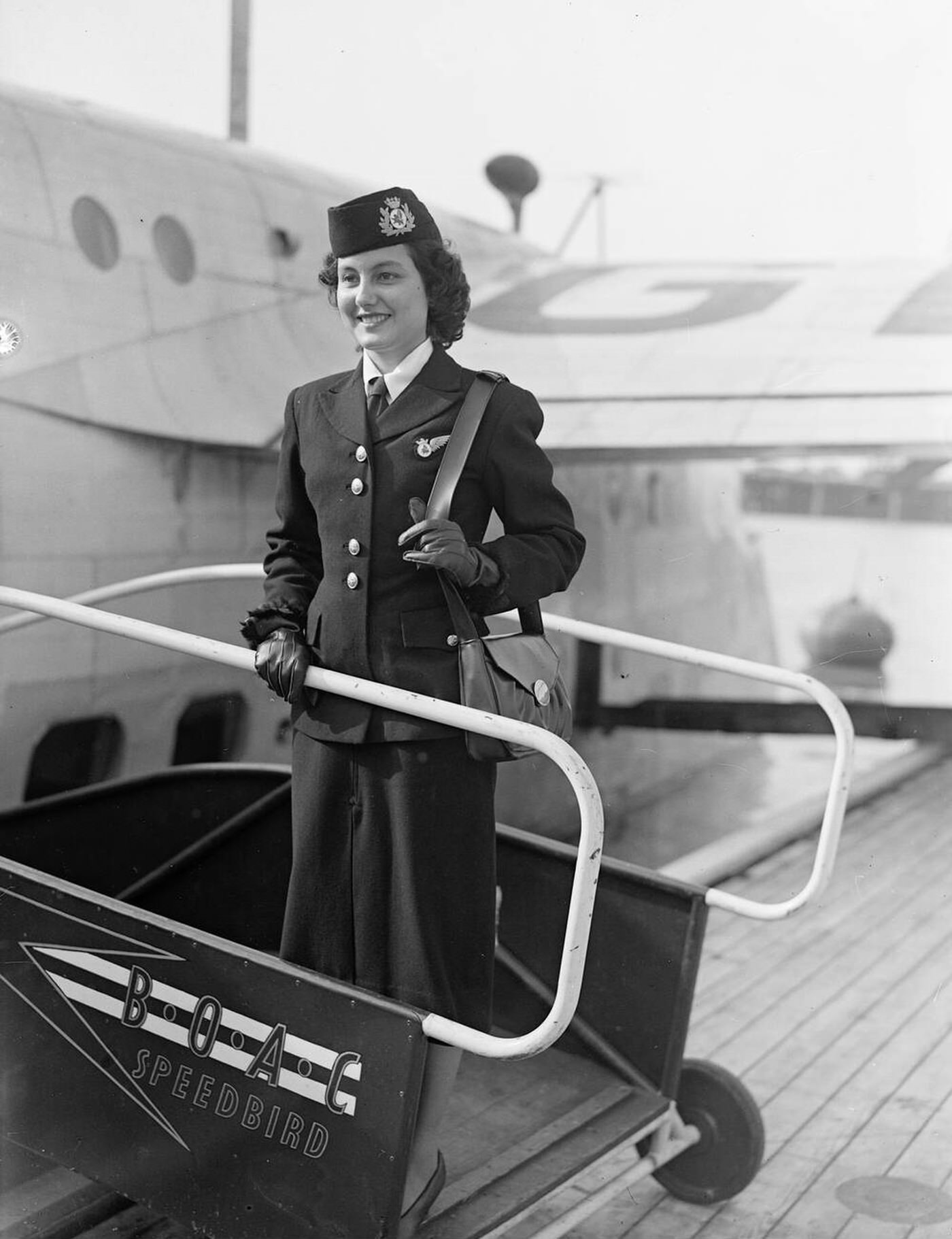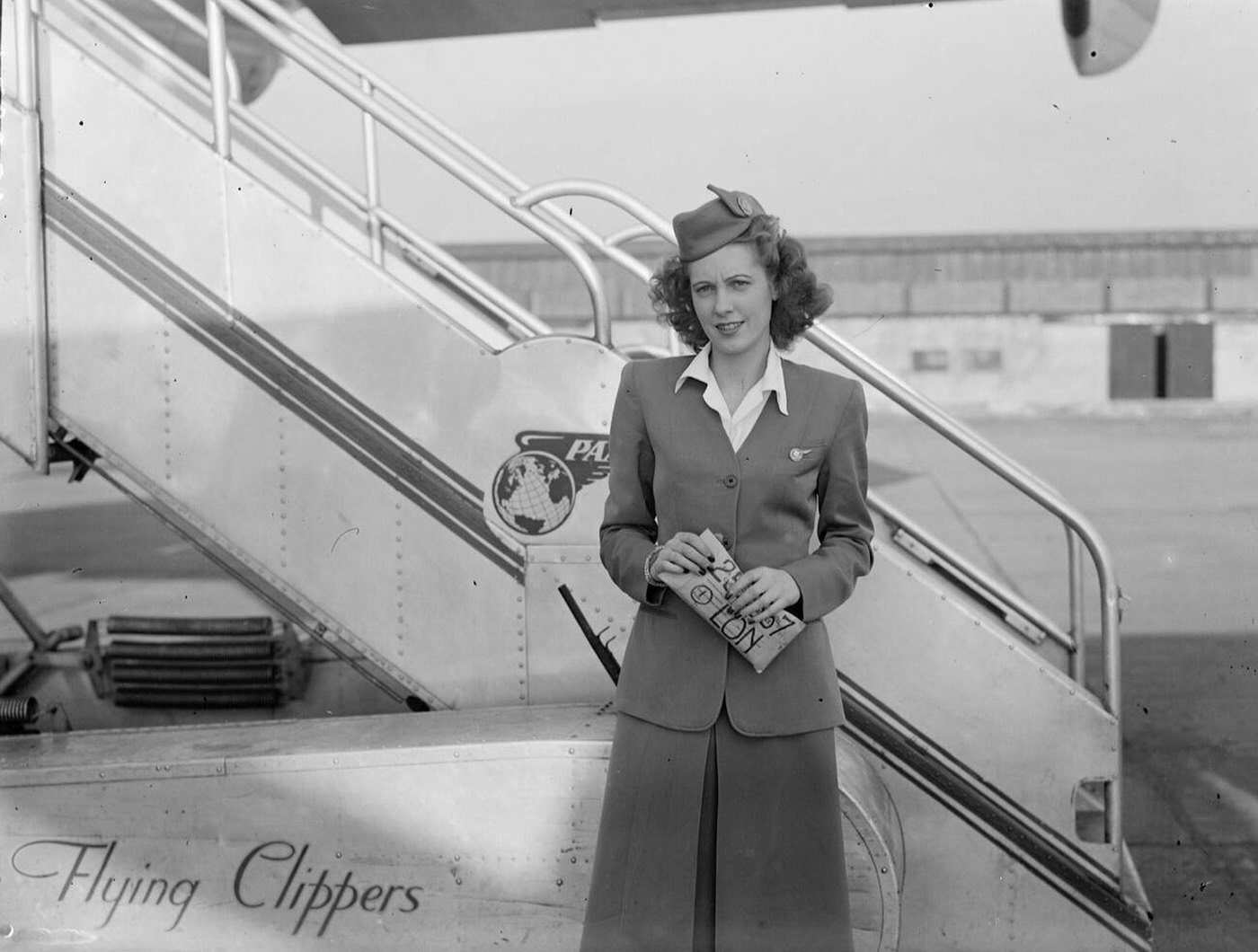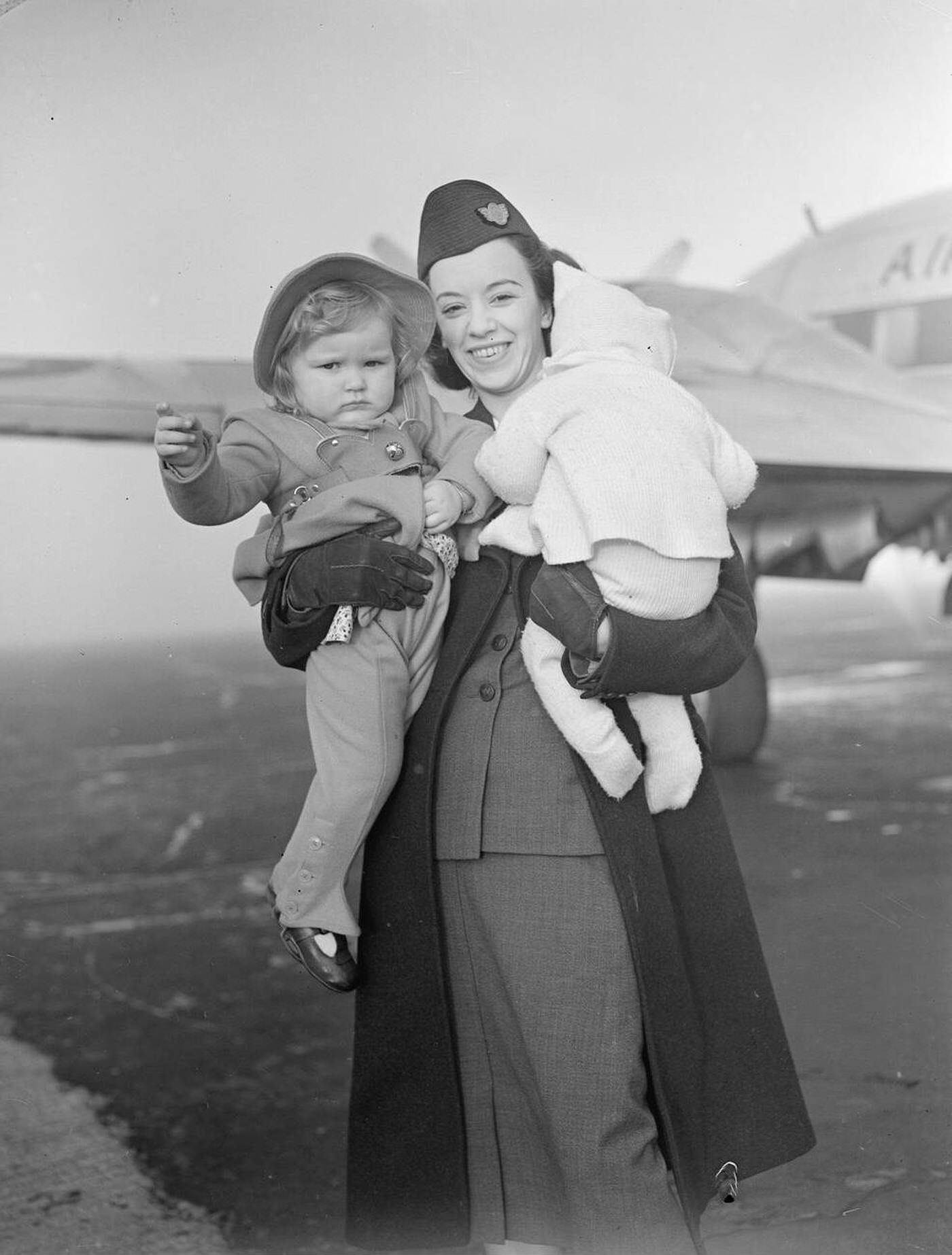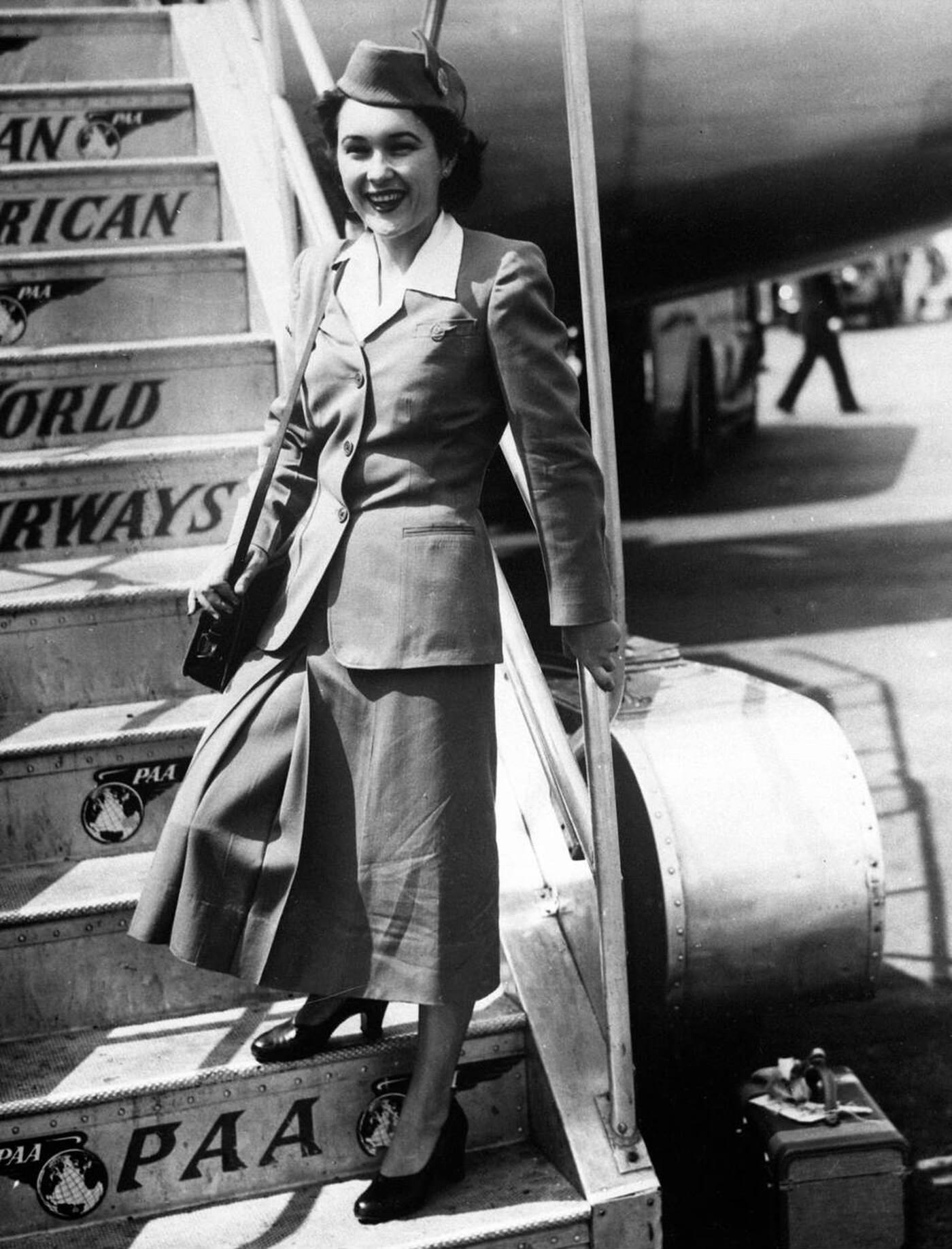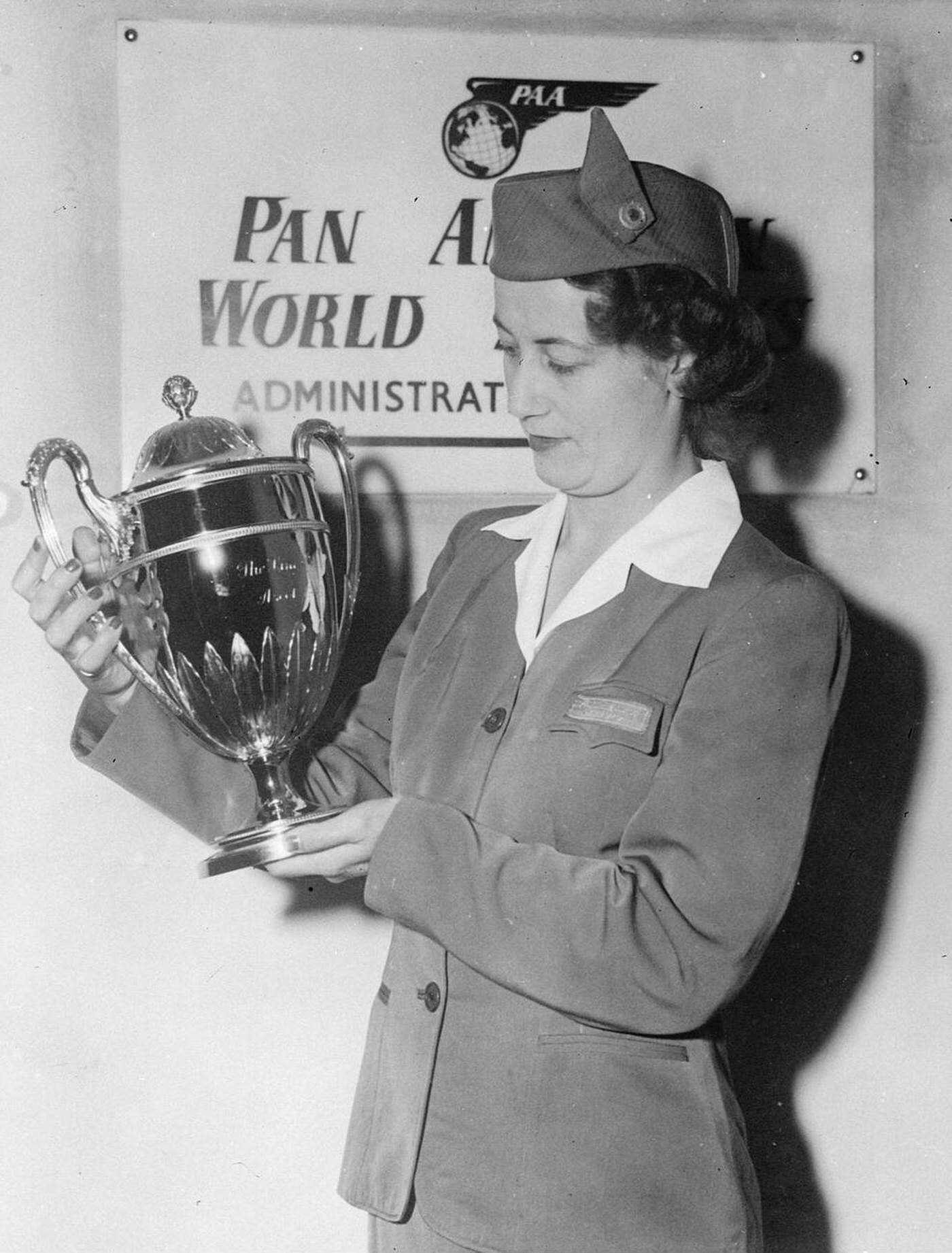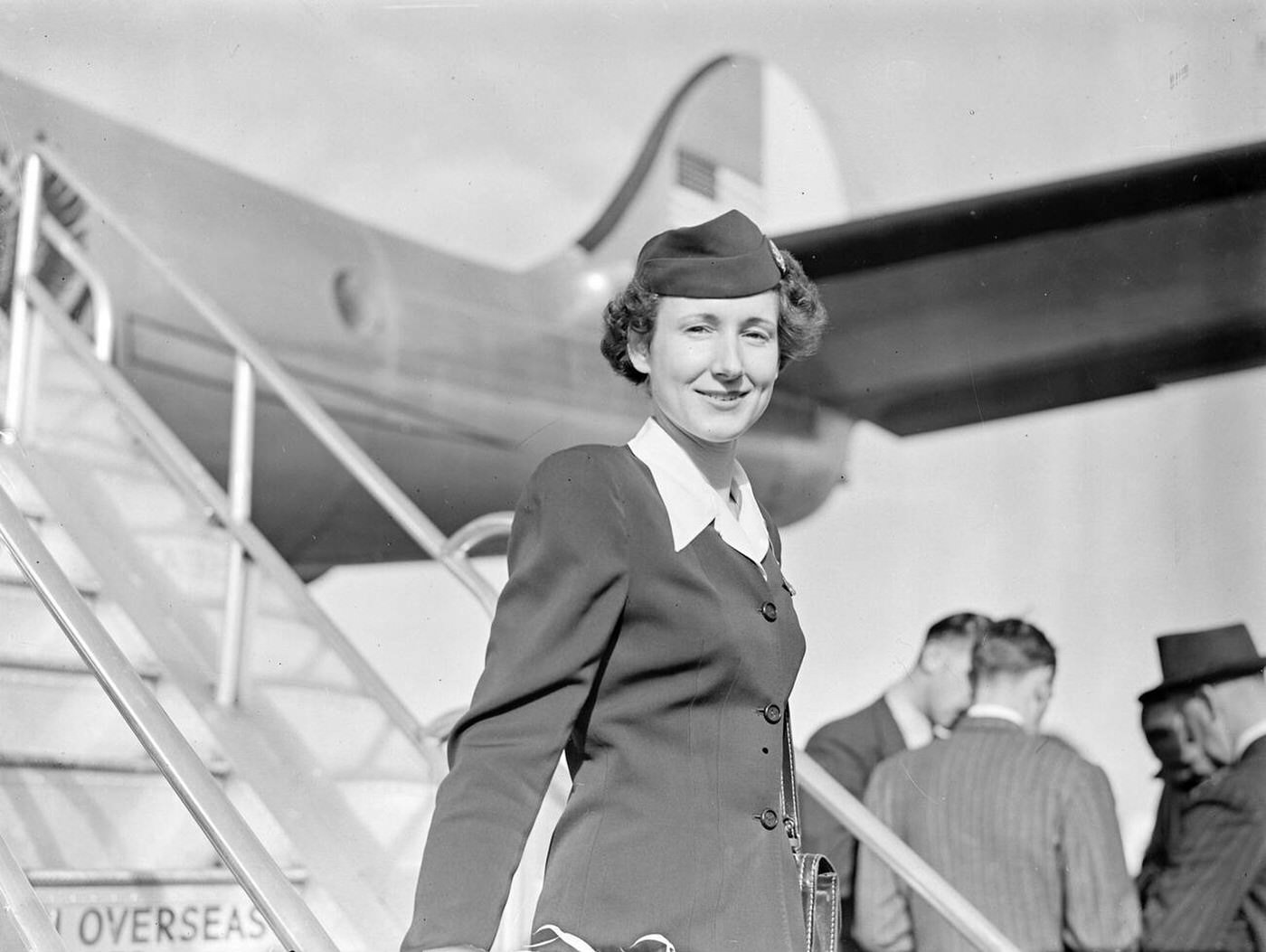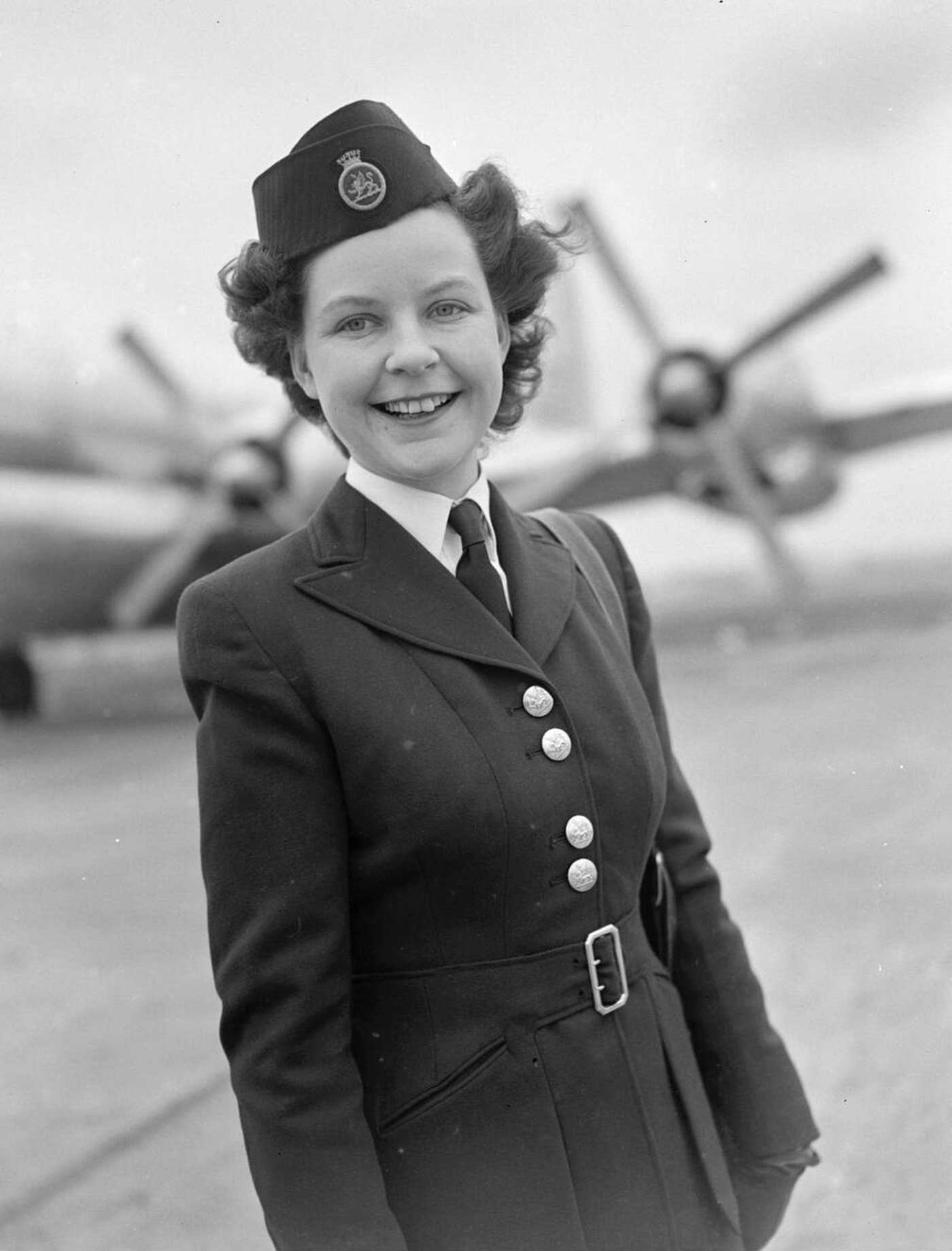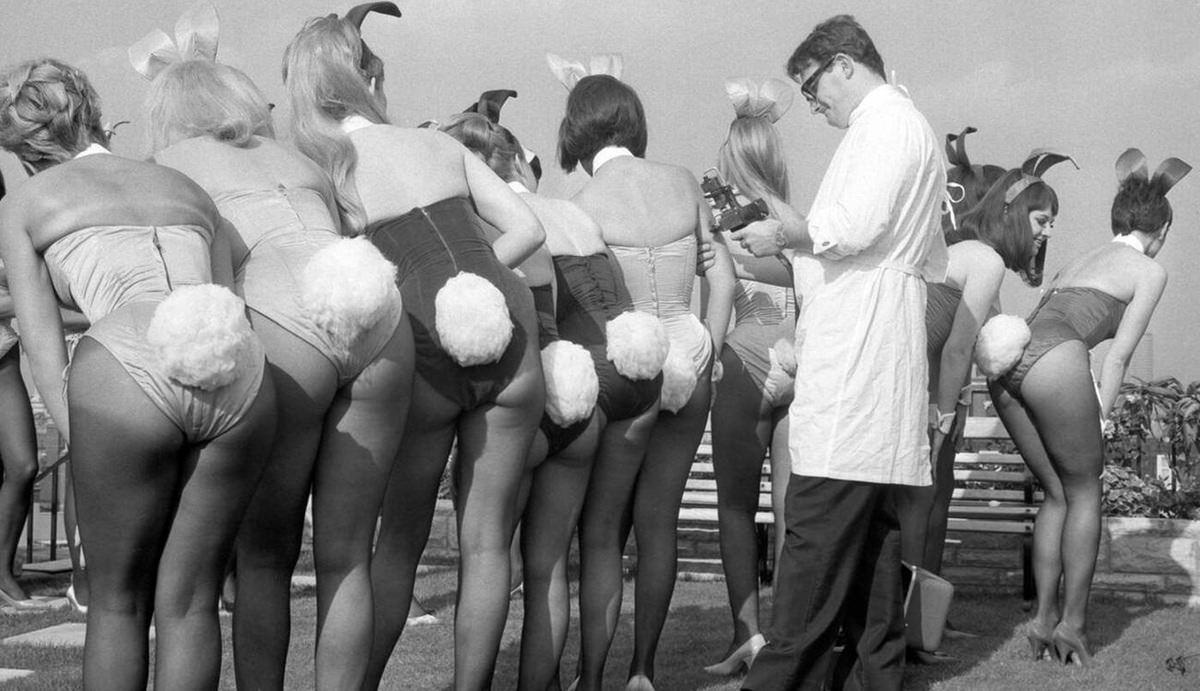In the early 1930s, the first stewardesses stepped onto aircraft wearing uniforms modeled after nurses’ attire. White skirts, tailored jackets, and starched caps gave an air of authority and cleanliness. The look reassured passengers at a time when flying was new and still carried a sense of risk. Wool coats and gloves were added for warmth in unheated cabins.
By the late 1930s, airlines began using tailored military-inspired styles. Jackets were sharply cut, skirts fell mid-calf, and hats bore a resemblance to service caps. Colors like navy, forest green, and charcoal gray dominated. Every uniform included white gloves, polished shoes, and precise grooming standards.
In the 1940s, World War II reinforced the military influence. Shoulders were structured, and skirts became more practical for movement. Fabrics were heavier and durable, with airline logos embroidered onto lapels or hatbands. Scarves in the airline’s colors brought the only touch of softness to an otherwise utilitarian look.
Read more
The 1950s marked the arrival of glamour in the skies. Skirts rose to mid-calf, waists were cinched, and jackets took on softer, more feminine tailoring. Hats shrank to pillbox or beret styles, sometimes accented with short veils. Grooming rules were strict—lipstick in specific shades, hair in controlled waves, and stockings without a single run. Airlines used bold scarf colors and decorative buttons to match branding.
In the 1960s, fashion designers were brought in to modernize uniforms. Oleg Cassini, Emilio Pucci, and others introduced bright colors, geometric patterns, and sleek silhouettes. Hemlines rose above the knee, and boots, gloves, and oversized sunglasses entered the mix. Pucci’s uniforms for Braniff International used vibrant prints and interchangeable accessories that could be layered mid-flight for dramatic effect.
The 1970s pushed boundaries. Some airlines issued hot pants, miniskirts, or jumpsuits in bright synthetic fabrics like polyester. Go-go boots, turtlenecks, and wide belts became standard on certain routes. Southwest Airlines embraced tan hot pants and knee-high boots, while Pacific Southwest Airlines used colorful vests and playful styling to match the decade’s energy.
In the 1980s, uniforms returned to a more corporate, conservative style. Power dressing influenced the look—shoulder pads, below-the-knee skirts, and tailored blazers in deep blues or burgundy. Scarves were still worn but in more subdued patterns.
The 1990s balanced professionalism with comfort. Fabrics became lighter and more breathable, while cuts remained tailored. Skirts and trousers were both issued, allowing more flexibility. Airlines began to favor understated branding—small pins, minimal logos, and classic color palettes.
Across the century, every shift in uniform design reflected the era’s broader fashion trends and the airline industry’s evolving image. From nurse-inspired whites to hot pants and go-go boots, flight attendants carried the visual identity of their airline with every passenger they greeted.


